Growing Wildlife-Based Tourism Sustainably: A New Report and Q&A
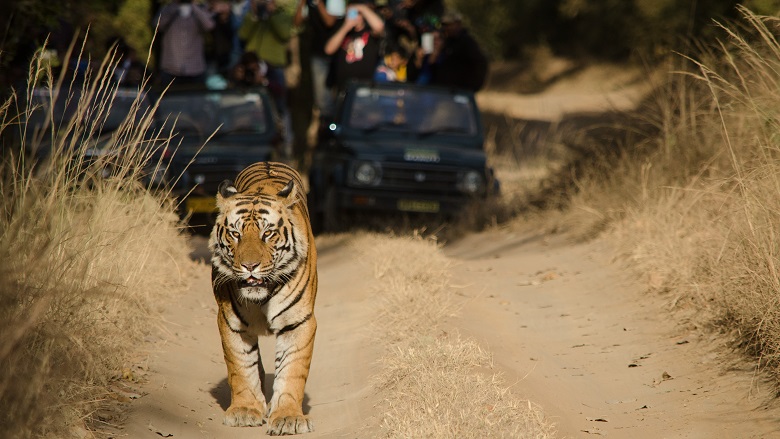
Copyright: Sanjayda, Shutterstock.com

STORY HIGHLIGHTS
- While wildlife and biodiversity are increasingly threatened by habitat loss, poaching, and a lack of funding for protection, nature-based tourism is on the rise and could help provide solutions for these issues.
- The publication Supporting Sustainable Livelihoods through Wildlife Tourism highlights successful wildlife tourism programs in seven countries in Africa and Asia that can be used as models to promote conservation and boost economies.
- World Bank lead economist Richard Damania answers questions on the drivers, innovations and challenges for wildlife tourism, and why the World Bank Group and governments should support sustainable tourism strategies.
Wildlife tourism is a powerful tool countries can leverage to grow and diversify their economies while protecting their biodiversity and meeting several Sustainable Development Goals. It is also a way to engage tourists in wildlife conservation and inject money into local communities living closest to wildlife. Success stories and lessons learned from nature-based tourism are emerging from across the globe.
“Here is a way of squaring the circle: provide jobs and save the environment,” said World Bank lead economist Richard Damania, who has extensive experience in understanding the link between tourism and the economy . In 2016, travel and tourism contributed $7.6 trillion, or 10.2%, to total GDP, and the industry provided jobs to one in 10 people, according to the World Travel & Tourism Council .
While nature-based tourism, which includes wildlife tourism, has been expanding rapidly in the last decade or so due to increased demand and opportunities, wildlife and biodiversity are increasingly threatened by habitat loss, poaching, and a lack of funding for protection.
Which is why more than ever countries need to look to concrete examples of well-planned, sustainably-run tourism operations that have led to increased investments in protected areas and reserves, a reduction in poaching, an increase in the non-consumptive value of wildlife through viewing , and opportunities for rural communities to improve their livelihoods through tourism-related jobs, revenue-sharing arrangements, and co-management of natural resources.
A recently-released publication— Supporting Sustainable Livelihoods through Wildlife Tourism —developed by the World Bank Group and the Global Wildlife Program , funded by the Global Environment Facility , showcases sustainable wildlife tourism models that can be applied to developing countries, and offers solutions and case studies to bring insight into this sector as a mechanism for inclusive poverty reduction and global conservation.
The Global Wildlife Program spoke with Damania to learn more about the growth, challenges, and innovations in wildlife-based tourism.
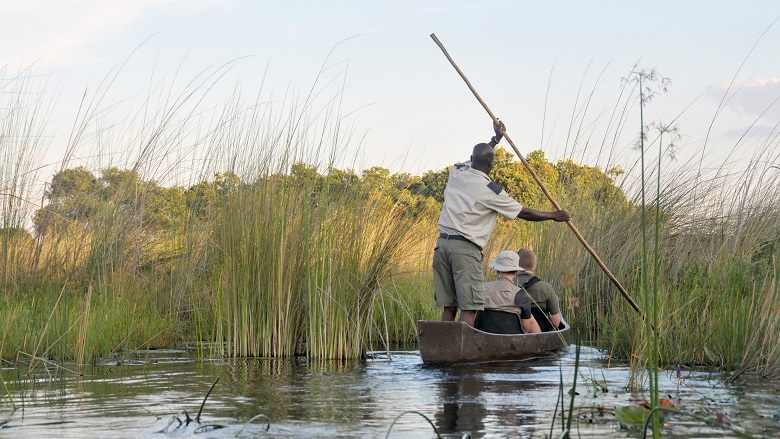
Copyright: Wandel Guides, Shutterstock.com
Why should the World Bank support conservation endeavors, and how does wildlife tourism help support our mission?
Enlightened self-interest is one obvious reason why we need to promote wildlife tourism. It provides the most obvious way to reconcile the interests of nature with the imperative for development and growth. Tourism simultaneously creates jobs while, when done well, protects natural habitats.
Prudence and precaution are another reason why investments in nature-based tourism ought to be promoted. The science of “ planetary boundaries ” warns us that many fragile natural environments and ecosystems are reaching their limits and in some cases, the hypothesized safe boundaries have been crossed. Further damage will imply that we lose important ecosystem services such as watershed and soil protection with damaging consequences for development.
But, in my mind, perhaps the most important reason is humanity’s moral and ethical imperative as stewards of global ecosystems. Simply because humanity has the ability to destroy or convert ecosystems and drive species to extinction does not make it ethically justifiable. There needs to be an ethical balance and that is where ecotourism comes in. We need jobs and economic growth, but here is a way to get jobs and growth in ways that meet our moral and ethical obligation.
What have been the drivers behind a burgeoning nature-based/wildlife-based tourism sector?
I think there are two things that drive it: as habitats diminish there is more scarcity and their value goes up. Everyone wants to see the last remaining habitats of wild gorillas for instance, or the few remaining wild tigers in India. In sum scarcity confers economic value.
Another force driving demand is the internet and rising lifestyles—you can learn about animals and habitats you might not have known existed, and more people have the ability to visit them. So, you have supply diminishing on one hand, and demand rising on the other hand which creates an opportunity for economic progress together with conservation.
What is your advice to governments and others who are developing or expanding on a nature or wildlife-based tourism strategy?
Tourism benefits need to be shared better . There is a lack of balance with too many tourists in some places, and none elsewhere. Some destinations face gross overcrowding, such as South Africa’s Krueger National Park or the Masai Mara in Kenya where you have tourists looking at other tourists, instead of at lions. We need to be able to distribute the demand for tourists more equally. The Bank has a role to play in developing the right kind of tourism infrastructure.
Those living closest to nature and wildlife must also benefit . The local inhabitants that live in the national parks or at their periphery are usually extremely poor. Having tourism operations that can benefit them is extremely important for social corporate reasons, but also for sustainability reasons. If the benefits of tourism flow to the local communities, they will value the parks much more.
We also need to be mindful of wildlife corridors . We know that dispersion and migration are fundamental biological determinants of species survival. Closed systems where animals cannot move to breed are not sustainable in the long run. As we break off the corridors because of infrastructure and increasing human populations we are putting the ecosystems on life support.
There are some who believe we can manage these closed ecosystems, but it takes an immense amount of self assurance in science to suggest this with confidence, and it is unclear that one can manage ecosystems that we do not adequately understand. A measure of caution and humility is needed when we are stretching the bounds of what is known to science.
What are some of the innovative partnerships that are helping the wildlife-based tourism businesses in developing countries?
One very successful model that has combined wildlife conservation and management and community benefits and welfare is the Ruaha Carnivore Project in Tanzania, part of Oxford University’s Wildlife Conservation Research Unite ( WildCRU ). They use a payment for ecosystem services (PES) scheme and do all the right things.
Another example are the community conservancies in Namibia. The community manages the land for wildlife and there are a variety of profit sharing commercial tourism arrangements—although not everything always works fairly or perfectly. Incentives matter deeply and communities need to be guided and need technical assistance in setting up commercial arrangements.
The Bank needs to understand these better and find ways of scaling those up. The IFC has a very good role to play here as well.
To learn more and to explore numerous examples of community involvement in wildlife tourism from Botswana, India, Kenya, Malawi, Namibia, South Africa and Uganda, read the report Supporting Sustainable Livelihoods through Wildlife Tourism or find a one-page fact sheet here .
The Global Wildlife Program (GWP) is led by the World Bank and funded by a $131 million grant from the Global Environment Facility (GEF). The program is working with 19 countries across Africa and Asia to promote wildlife conservation and sustainable development by combatting illicit trafficking in wildlife, and investing in wildlife-based tourism.
- Full Report: Supporting Sustainable Livelihoods through Wildlife Tourism
- Fact Sheet on Key Messages
- Report: Twenty Reasons Sustainable Tourism Counts for Development
- Report: Women and Tourism: Designing for Inclusion
- Blog: Africa can Benefit from Nature-based Tourism in a Sustainable Manner
- Feature: Ramping up Nature-Based Tourism to Protect Biodiversity and Boost Livelihoods
- Website: Global Wildlife Program
- Website: Environment
- Website: Competitiveness
- Global Environment Facility
An official website of the United States government
The .gov means it’s official. Federal government websites often end in .gov or .mil. Before sharing sensitive information, make sure you’re on a federal government site.
The site is secure. The https:// ensures that you are connecting to the official website and that any information you provide is encrypted and transmitted securely.
- Publications
- Account settings
Preview improvements coming to the PMC website in October 2024. Learn More or Try it out now .
- Advanced Search
- Journal List
- Animals (Basel)

The Escalating Effects of Wildlife Tourism on Human–Wildlife Conflict
Qingming cui.
1 School of Tourism Management, South China Normal University, Guangzhou 510006, China; moc.621@gnimgniqiuc
2 South China Ecological Civilization Research Center, South China Normal University, Guangzhou 510006, China
3 School of Hotel Administration, Cornell University, Ithaca, NY 14850, USA; ude.llenroc@242ry
Honggang Xu
4 School of Tourism Management, Sun Yat-sen University, Zhuhai 519082, China
Associated Data
Simple summary.
Communities adjacent to protected areas usually face conflict with protected wildlife. Wildlife tourism is regarded as a tool to mitigate such conflict through bringing economic benefits to villagers and then increasing villagers’ tolerance of wildlife. We used qualitative methods to conduct a case study on a macaque tourism attraction in China and find that tourism may escalate rather than mitigate community–wildlife conflict. Provisioning food is a common way to attract wild animals to visit and stay in human activity areas. In the case of macaque tourism, anthropogenic food provision caused rapid population increase and more intra-group aggressive behaviors. More tourist–macaque interactions resulted in macaques becoming habituated to human’s presence. These ecological impacts on macaques led more invasion to the surrounding community and intensified resident–macaque conflict. Meanwhile, low community participation in tourism generated few benefits for residents and did not help alter residents’ hostile attitudes towards the macaques. Local residents gradually retreated from agriculture as the macaques became more intrusive. We propose a holistic model combining social and ecological perspectives to evaluate the role of wildlife tourism in resolving community–wildlife conflict. We suggest that wildlife tourism should minimize human–wildlife intimate interactions and food provision.
Human–wildlife conflict is a barrier to achieving sustainable biodiversity conservation and community development in protected areas. Tourism is often regarded as a tool to mitigate such conflict. However, existing studies have mainly adopted a socio-economic perspective to examine the benefits of tourism for communities, neglecting the ecological effects of tourism. This case study of macaque tourism on a peninsula in China illustrates that tourism can escalate rather than mitigate human–wildlife conflict. Fifty-three stakeholders were interviewed and secondary data were collected to understand the development of rhesus macaque ( Macaca mulatta ) tourism and community–macaque conflict. The results show that food provision and tourist–macaque interactions rapidly increased the macaques’ population, habituation, and aggressive behaviors, which led them to invade the surrounding community more often and exacerbated human–macaque conflict. Meanwhile, low community participation in tourism generated few benefits for residents and did not help alter residents’ hostile attitudes towards the macaques. Local residents gradually retreated from agriculture as the macaques became more intrusive. A holistic approach to evaluating the role of wildlife tourism in resolving community–wildlife conflict is proposed and practical suggestions for alleviating such conflict are given.
1. Introduction
In the past few decades, protected areas have been one of the main tools for maintaining and improving biodiversity conservation [ 1 , 2 , 3 , 4 ]. However, there are tensions between wildlife conservation and the development of communities adjacent to protected areas [ 5 , 6 ]. The establishment of protected areas deprives communities of natural resources and restricts industrial and agricultural development, suggesting that to conserve ecology and wildlife, those communities sacrifice economic opportunities [ 7 , 8 , 9 ]. Moreover, wild animals often cross the borders of protected areas and enter neighboring communities, causing human–wildlife conflict [ 10 , 11 ]. The costs that wildlife impose upon local people include crop-raiding, livestock loss, human attacks, and opportunity and transaction costs [ 8 , 12 ]. Local residents who suffer economic, social, and health losses may then become hostile to wildlife and conservation, and even harm or kill wild animals for revenge [ 12 , 13 ]. Human–wildlife conflict is therefore one of the main problems besetting sustainable wildlife conservation and the sustainable livelihoods of local communities. “Human–wildlife conflict” in this study mainly refers to the community–wildlife conflict, following most other conservation studies, e.g., [ 12 , 14 , 15 ].
Wildlife tourism development has been proposed as a solution to human–wildlife conflict [ 3 , 14 , 15 ]. Recent studies have focused on examining whether and how tourism benefits can alter communities’ hostile attitudes and livelihoods from the economic and social perspectives [ 16 ]. In this article, we argue that those studies neglect the ecological costs of wildlife tourism. Human–wildlife interactions in tourism can bring about various adaptive ecological and behavioral changes that cause wildlife to become a nuisance and make human–wildlife conflict difficult to manage [ 17 , 18 ]. The introduction of profit-driven wildlife tourism in protected areas can trigger complicity in relation to human–wildlife conflict and result in a divergence from original conservation principles. In order to bridge the above research gap, we propose a holistic approach that synthesizes social and ecological perspectives to examine the interactions among tourism businesses, local community, and wildlife.
We use macaque tourism in Hainan Province, China, as a case study to show how wildlife tourism can intensify, rather than mitigate, human–wildlife conflict. The specific research questions include: (1) How do the community residents cope with the community–wildlife conflict? (2) How does the community participate in tourism, and can tourism benefits change the community’s attitude towards wildlife? (3) How does tourism activities affect wildlife? (4) Does wildlife tourism exacerbate or mitigate human–wildlife conflict if assessing the socio-economic benefits and ecological costs combined?
2. Literature Review
2.1. tourism as a way to mitigate human–wildlife conflict.
There are controversial arguments about whether and how tourism development mitigates human–wildlife conflict in protected areas. Many studies endorse the premise that tourism benefits that accrue to local residents can raise villagers’ environmental awareness, increase residents’ tolerance of wildlife [ 15 ], and transform traditional livelihoods [ 19 ]. For instance, Mbaiwa and Stronza found that in Okavango Delta, three communities participating in tourism had stopped traditional activities, such as hunting, gathering, livestock raising, and crop farming [ 20 ]. Tourism revenue-sharing projects in gorilla tourism in Rwanda and Uganda have received the most research attention, with studies finding that national park officials and local representatives believe that revenue-sharing is the most significant advantage of living adjacent to gorilla national parks [ 21 ] and that residents benefit from tourism revenue-sharing through infrastructure projects [ 22 , 23 ]. Cases from Brazil and Peru also support the argument that tourism benefits local residents, and that local participation in management can generate conservation attitudes and actions [ 24 ].
However, other scholars have questioned the effectiveness of tourism in improving community development and biodiversity conservation [ 9 , 16 , 25 ]. Swemmer et al. pointed out that “benefit sharing is messy, is complex, and occurs at various scales with multiple trade-offs” [ 26 ] (p. 17). Stakeholders at different scales have heterogeneous demands for revenue, for various reasons. For instance, communities in Uganda’s Mgahinga Gorilla National Park were found to want benefits to compensate for crop and livestock losses caused by wildlife, park officials hoped to use tourism revenues to offset the costs of management, and the national government tended to allocate tourism revenues according to the conservation needs of the whole state [ 27 ]. In many developing countries, the government and park authorities have the power to determine the allocation of tourism revenues, and communities lack access to participation in the decision-making process [ 25 , 28 , 29 ].
In addition to unequal power relations and a lack of local participation, the uneven distribution of tourism benefits is another problem [ 16 ]. Within communities, poor residents often perceive that the elite obtain the majority of tourism benefits [ 22 , 28 ]. Hemson et al. noted that only residents in tourism industry gain benefits; most local residents are not beneficiaries of tourism [ 30 ]. Tourism revenues may not be distributed evenly among different communities. For example, residents in the buffer zone of Nepal’s Chitwan National Park are constrained in their use of natural resources, but only those villages close to the park’s entry points benefit from tourism incentives [ 31 ]. In China’s Wolong Giant Panda Nature Reserve, the communities close to main roads gain more income from tourism than the remote communities that bear greater costs of conservation [ 32 ]. The spatial unevenness of revenue distribution has also been found in gorilla national parks in central Africa [ 25 , 33 , 34 ].
Moreover, the distribution of tourism economic incentives is often mismatched. Crop-raiding and livestock loss caused by wildlife are the problems of most concern to local residents [ 25 , 34 ]. However, tourism benefits are often allocated to improving social infrastructures, such as clinics, schools, roads, bridges, wells, and water tanks, rather than direct compensation or the prevention of human–wildlife conflict [ 21 , 22 ]. Because of this mismatch, local people remain hostile towards wildlife [ 30 ]. The locals in Kibale National Park in Uganda regard building elephant trenches as being better than building schools and roads [ 35 ]. Many scholars have therefore suggested that tourism revenues should be used to directly offset losses caused by human–wildlife conflict to more effectively improve local attitudes to conservation [ 22 , 25 , 28 , 34 ].
Generally, existing studies mainly evaluate the role of tourism in conservation from the socio-economic dimension, and conclude that although tourism benefits contribute to changing local people’s attitudes towards wildlife and conservation, the effectiveness of tourism is limited due to the unequal, uneven, and mismatched distribution of benefits [ 16 , 36 ]. By contrast, few studies consider the ecological impacts when assessing the impact of tourism on mitigating human–wildlife conflict. Many protected areas use their unique species as tourist attractions to generate economic revenues. However, wildlife-based tourism development is not without cost. Tourism activities can generate negative effects on wild animals [ 37 , 38 ], which should also be considered when evaluating social and economic benefits [ 39 ]. In the next section, we review the effects of wildlife tourism on macaques as an exemplar species.
2.2. The Effects of Wildlife Tourism on Macaques
Humanity has a long history of interacting with macaques ( genus Macaca ). In contemporary society, free-ranging macaques have become popular tourist attractions. There are 23 species of macaque distributed in Asia, North Africa, and Gibraltar, many of which are strongly involved in the tourism industry [ 40 ].
Wild animals usually avoid encountering humans, which makes wildlife-based tourism unpredictable and uncontrollable [ 41 ]. In non-captive macaque tourism, food provisioning is a common way to tempt macaques to stay in a certain area and become habituated to the presence of people [ 42 , 43 , 44 ]. In some wildlife tourism sites, feeding animals is itself an important tourist experience [ 44 ]. Provision of food is an effective strategy to increase the likelihood of tourists interacting with free-ranging macaques [ 44 ].
However, food provisioning and tourist activities have various negative effects on macaques [ 44 , 45 ]. Anthropogenic foods are highly caloric and are more palatable and more accessible than macaques’ natural foods. Wild macaques therefore spend more time at tourist sites and come to rely on the provided food supply, resulting in changes in their activity budgets and dietary diversity [ 43 , 46 ]. Provisioning also affects the population in diverse ways. A stable, intensive, and abundant food supply can dramatically increase the population of macaques [ 39 , 44 , 47 ]; however, close contact raises the possibility of mutual pathogen transmission between humans and macaques, which can further affect the health and population of the animals [ 48 ].
Macaques in tourism areas gradually develop interspecific aggressive behaviors. The presence and proximity of tourists can elevate Barbary macaques’ anxiety levels [ 49 , 50 ]. Many tourists are not satisfied with inactive wildlife. They often tease monkeys to behave more actively by pointing, waving, slapping, mimicking, yelling, throwing food, and even threatening [ 50 , 51 , 52 , 53 ]. Many studies show that tourists initiate the majority of interactions with macaques [ 54 , 55 ]. Tourists’ provocative behaviors induce monkeys’ agonistic responses such as biting, scratching, hitting, and threatening [ 52 , 56 ]. Because of interspecific differences, tourists generally misinterpret the meaning of monkeys’ behaviors, which may enhance the agonism. For example, Maréchal et al. found that in interactions, most tourists cannot identify the exact meanings of macaques’ facial expressions [ 57 ]. The longer the history of visitors’ interactions with macaques, the more aggressive the macaques may become [ 58 ].
Food provision also intensifies intraspecific agonism. Monkeys fight with each other during the feeding time [ 59 ]. There is a positive correlation between food provision and the frequency of in-group aggression [ 54 ]. Furthermore, tourists like to feed baby monkeys, which they perceive as cuter than adults [ 51 ]. This preference violates the strict hierarchy among macaque groups and increases the rate of attacks on baby and juvenile macaques by male adult macaques [ 51 , 59 ].
Despite these negative impacts, some scholars regard human–macaque interactions in tourism as opportunities that have stimulated the evolution of macaques [ 18 ]. Evidence for this point of view is the robbing and bartering behavior developed by long-tailed macaques at Uluwatu Temple, Indonesia [ 60 ]. The macaques have learned to steal inedible objects such as glasses and hats from tourists and barter the objects for food with the staff. This innovation has been socially learned and has spread in the group, suggesting that human–macaque interactions in tourism can cause significant cultural change in a macaque group [ 61 ].
Existing research shows that tourism affects macaques at the population, behavioral, and cultural levels. Macaques can develop adaptive behaviors in anthropogenic tourism environments. Barrett, Stanton and Benson-Amram called for more studies to explore the roles of animals’ adaptive behaviors in worsening or mitigating human–wildlife conflict in protected areas [ 17 ]. This study uses macaque tourism in China to show that the effects of tourism on macaques can exacerbate rather than mitigate human–wildlife conflict.
3. Materials and Methods
3.1. study site.
The study site is Nanwan peninsula in Lingshui county, Hainan, China ( Figure 1 ). This peninsula consists of three main areas: Nanwan Macaque Provincial Nature Reserve, Monkey Tourism Park, and Nanwan Village. The nature reserve was established in 1965 and covers 10.2 square kilometers [ 56 ]. The reserve contains more than 2000 rhesus macaques ( Macaca mulatta ), which are second class protected animals in China. There is a protection station responsible for conservation work. In 1974, a tourism park was built in the experimental zone of the nature reserve. Food was used to attract wild monkeys into the tourism area [ 62 ]. In 2020, more than 500 monkeys visit the tourism park every day, and approximately one million tourists visit every year. Nanwan Village, which has approximately 550 residents, is also located in the experimental zone of the reserve. Agriculture is still the way of life for some villagers. Macaques often cross the border of the nature reserve and enter the village, causing community–macaque conflict.

Map of the study site.
The macaques are the only target attraction in this area. There are also some potentially attractive houseboats on the sea, where some water people still live. However, those houseboats are usually seen from the cable cars, few tourists approach them.
3.2. Data Collection
The research team visited the site 10 years ago and conducted a study attempting to understand the tourism development model of the conservation area. The current qualitative study is based on twice fieldwork conducted from 16 to 22 February 2019, and from 28 to 30 September 2020. Data were collected using semi-structured interviews and observation. We used the method of purposive sampling to find the people who best know the situations about tourism, community, and nature reserve. We interviewed 2 managers from the nature reserve, 2 managers and 5 staff from the Monkey Tourism Park, 26 tourists, the chairman of Nanwan Village and other 17 Nanwan villagers. We also interviewed a biologist who had studied the macaques in the park since 2013. Interviews with tourists were mainly conducted at the visitor center. The main questions were about the visitors’ general views on macaques, and how they perceived and reacted to aggressive macaques. Interactions between the tourists and macaques were observed and recorded as field notes. Interviews with managers and staff were conducted in their workplaces. We mainly asked about the development of scenic spots, management of the macaques, and community participation in tourism. The interviews with the nature reserve managers covered the establishment and development of the protected area, the protection of macaques, the relationship between the protected area and the tourism park, and responses to community–macaque conflict. Interviews with the villagers concerned their livelihood, their attitudes to macaques, and management of the nature reserve and tourism park. All interviewees gave their permission to be recorded.
Observation was mainly used to understand the spatial arrangements of tourism park, tourist routes, nature reserve, and community land utilization. For example, the route that tourists go to the park from the mainland and return, the distance between the community and the park, the locations of village mango groves. The spatial relations between the tourism park, nature reserve, and village are essential to understand human–macaque conflict (see Supplementary Materials Figures S1–S4 ).
In addition to the above first-hand data, we also searched second-hand data about the Monkey Tourism Park, such as published research articles (e.g., [ 56 , 62 , 63 , 64 , 65 ]), and news reports (e.g., [ 66 , 67 ]) to help comprehensively understand the history of tourism development and macaque protection.
3.3. Data Analysis
From numerous qualitative data analysis methods, we chose “thematic analysis” [ 68 ] to analyze our collected materials. During the data analysis, the audio records were transcribed first. Then, two authors separately read the first-hand and second-hand data repeatedly to get familiar with the data. Second, we generated many initial codes about conservation conditions, community-macaque conflicts, community participations in tourism, and tourism’s ecological impacts. Third, we thought about the relationships between codes and categorized these codes into many sub-themes and themes, including conservation modes, villagers’ strategies to cope with conflict with macaques, low community participation in tourism, and two main ecological impacts of tourism on macaques. Fourth, each of the two authors reviewed and named the themes. After that, we wrote an outline by relating these themes to explain the story of community–macaque conflict and tourism development, then compared the two outlines to obtain a mutually agreed version and construct a thematic map. The third author then compared this outline with the data to check its validity, and proposed a final thematic map (see Supplementary Materials Figure S5 ), on which the results are based. Finally, the three authors proposed a general model to explain the exacerbating effects of tourism on human–wildlife conflict according to the evidence from Nanwan.
4.1. Coercive Fortress Conservation and Spatial Exclusion of the Community
The community–macaque conflict on the Nanwan peninsula has existed for a long time. In the 1930s and 1950s, before the establishment of the nature reserve, the conflict was solved at the cost of a loss of macaques. To safeguard their crops, community residents killed macaques. When the nature reserve was established in 1965, there were only 5 groups of macaques left, comprising about 115 individuals [ 62 ].
The nature reserve system in China prohibits any use of natural resources in the core and buffer zones, and only allows limited research, education, tourism, and leisure activities in the experimental zone [ 69 ]. This management regulation tallies with the model of fortress conservation, according to which “biodiversity protection is best achieved by creating protected areas where ecosystems can function in isolation from human disturbance” and “only tourism, safari hunting, and scientific research are considered as appropriate uses within protected areas” [ 70 ] (p. 704). The fortress conservation in Nanwan is coercive and underpinned by national laws. All conservation work in the reserve is run from a protection station, which routinely sends rangers to patrol and record at various points in the reserve. Considering that the Nanwan villagers and their ancestors have lived in this area for a long time, this conservation model excludes the community residents from using resources that once belonged to them. It also means that Nanwan villagers sacrifice their development opportunities for conservation.
As a result of the coercive fortress conservation, macaques are well protected. The number of macaques has undergone a rapid increase. In 1988, there were 903 macaques in Nanwan nature reserve [ 63 ]. In 1998, the population was estimated to be 1300 [ 63 ]. In 2019, the manager of the nature reserve told us that the current estimate is more than 2000 macaques.
4.2. Community–Macaque Conflict and the Lack of Ecological Compensation
As the population of macaques has grown, community–macaque conflict has worsened. According to Lian and Jiang [ 64 ], the ecological capacity of Nanwan nature reserve can provide resources for 1900 macaques at most. The current macaque population level has exceeded the maximum capacity. In a study conducted in 2010 [ 65 ], an ecologist has pointed out the problem of ecological overshoot on Nanwan peninsula.
Many bold macaques now enter the community area to search for food. The most damaged crops include mangoes, sweet potatoes, and watermelons. In Nanwan village, nearly every household used to have a mango grove, and selling mangoes was one of their main income sources. When the mango harvest was better, a farmer could earn about $2800 USD to $4200 USD per year. However, when the mangoes are ripe, macaques enter into the groves almost every day. As one resident (L02) described: “We are the poorest village in this town area. When mangoes ripen, macaques come down to eat. They not only eat whatever they can, but also grab and throw away the rest.” Some monkeys have even broken into residents’ houses to search for cooked food or steal eggs from chicken pens. The locals show obvious hostility towards the monkeys by describing them as “public nuisances” and “thieves”.
Because of the legally protected status of the macaques, the community cannot hurt monkeys as their ancestors did in the past. After the establishment of the nature reserve, it was made very clear to the Nanwan villagers that capturing monkeys is illegal. Nowadays, the residents do not have effective ways to expel the annoying macaques. “Many macaques come to the village at a time. You cannot catch them. You cannot beat them. We know it is illegal. If we frighten them, they run to the top of the trees and cannot be driven away. They are animals, we cannot control them.” (L01). Some villagers tried to isolate mango groves from the macaques using nets, but staff from the protection station stopped that defense because they feared that the net may pose a threat to the macaques. The conflict between the community and the macaques became more tense.
As a result, villagers were eager to be compensated by the government for their loss of livelihood. However, the protection station manager said: “There is no special fund for ecological compensation in Hainan Province for macaque damage.” (SM01). Nanwan villagers complained about the lack of ecological compensation: “We live on mangoes, macaques often come down to eat, they [the protection station] do not give us money, even a penny.” (L02). With no ecological compensation, the conflict between villagers and macaques remains unsolved, even though the station manager is aware of the macaques’ crop-raiding.
4.3. Monkey Tourism and Limited Community Participation
The development of monkey tourism brought a new potential opportunity to solve the conflict between villagers and macaques. There is a long history of developing macaque tourism on Nanwan peninsula. In 1974, the staff of the protection station began to feed two groups of macaques and the area received tourists in 1980 [ 62 ]. Around 1985, the Lingshui county government established a tourism company and cooperated with the reserve to develop monkey tourism on a large scale [ 62 , 66 ]. After experiencing 10 years of rapid development, the tourism park began to decline [ 67 ]. To restore tourism development, in 1999 the county government sold the rights of developing the park to a private cable car company. To reinvigorate tourism development, the company built a two-kilometer cableway to connect the mainland to the peninsula, rebuilt the park’s infrastructure, and improved the park’s management [ 67 ]. The tourism development has followed the conservation plan, such that nobody can enter the core zone of the reserve; the tourism park is restricted to the experimental zone and tourists can only interact with macaques when the monkeys freely enter this zone [ 65 ]. The attraction is now a national 4A level scenic area and attracts approximately one million tourists every year.
However, the prosperity associated with the monkey tourism has not resulted in the economic development of Nanwan village for many reasons. The most important is that the enclaved mass tourism model leaves no room for business opportunities for the Nanwan villagers. Most visitors are package tourists. They enter the scenic area via the sightseeing cableway from Xincun town on the mainland. The trip is about two-hour visit. They then either take a cable car or a boat and shuttle bus back. There are no tourism products in the village. Thus, there are few intersections between the tourists’ activities and village spaces. The villagers once applied to do business in the scenic area, but were denied by the manager. “When the scenic area belonged to the county government, we could sell things inside. When the tourism company contracted with the local government, they promised we could still do business inside. But after selling for one month, we were driven away by the tourism company and were not allowed to sell things from then on.” (L08).
Second, the tourism park only employs a limited number of villagers, due to its adoption of a modern business management model. Well paid and skilled jobs can only be from outside the peninsula. There are more than 130 households in Nanwan village. Only about 10 of them have obtained low-salary jobs in tourism to do cleaning and security work. The average salary is about $230 USD per month, lower than working in other places. “Now only some old villagers work in the scenic spot as security guards. They look after the scenic spot during the night.” (L09). Work in tourism is not economically attractive compared with off-farm jobs in the city.
Third, about 10 households rent their land to the company managing the scenic area. However, the contract was signed 20 years ago for a period of 50 years with a land value based on its 1999 evaluation. The village chairman revealed that: “About 10 households have contracts with the scenic area. Rents are low. Now the park pays the rent every year, about $50 USD per household. Only about 10 households receive the money.” (L01). The residents are powerless compared to the company, who is a big tax-payer for Lingshui County. Thus, it is impossible for the residents to push the company to sign a new contract based on the current land value.
The perception of the tourism park manager is that the company is not responsible for community development and compensation for macaque damage. “I am not clear about the negotiation between the nature reserve and the community. It [the compensation] has nothing to do with our park. We are only responsible for business operations. Macaques belong to the nature reserve, who should be responsible for the compensation.” (PM01).
It may be true that for historical reasons, the partnership among the conservation committee, the park company, the village committee, and the villagers was not perfectly designed because the potential dynamics of tourism and the macaques were not clear initially. The major challenge now is that the initial collaboration model was not designed to enable all parties to negotiate and benefit from the collaboration when changes occur. In the next section, we show how the development of macaque tourism is likely to escalate community–macaque conflict, and demonstrate the obligation of the tourism industry to provide compensation.
4.4. Adaptive Macaques and Escalation of Human–Wildlife Conflict
4.4.1. population, aggression, and tourist–macaque conflict.
As with macaque tourism in other regions, developing tourism on Nanwan peninsula has had many ecological effects on monkeys. One of the most obvious impacts is the rapid growth of the macaque population. Food provision is the main method of attracting wild macaques to the tourism park area and keeping them there. Such provisioning started in 1974 and continues now. Usually, the macaques come down from nearby hills every morning, stay in the park area during the day and go back to the hills in the evening. The park staff feed the macaques at 08:00, 12:00, and 17:30 each day with wheat and various vegetables [ 56 ]. In 2013, around 80 g of food was formally provided per individual per day [ 71 ]. In addition, the park sells food for tourists to feed the macaques. Anthropogenic provision can increase macaque populations. A biologist who is studying macaques in the park said that “provision can lead to the growth of the monkey population within the park. My records are from 2013 to this year 2019 and show that the number of fertile adult female macaques has grown every year in this park.” (R1). More fertile adult female macaques mean that there are more baby macaques every year. Zhang et al. recorded 7 groups with approximately 350 individuals visiting the park in 2014 [ 56 ]. According to the official data, the macaque population grew from 393 in 2018 to 433 in 2019. The head of Department of Macaque Management estimated that the number is more than 500 in 2020 and there are about 80 new-born baby macaques every year. The population growth effect of tourism provision corresponds with studies of Barbary macaques in Gibraltar [ 47 ] and Japanese macaques in Oita [ 39 ].
Second, the macaques become habituated to the presence of people and more aggressive to tourists. The provisioned food (80 g/individual/day) is not enough to satisfy the needs of every monkey. Many monkeys develop robbing, biting, scratching, and threatening behaviors towards tourists. Zhang et al. recorded 195 instances of aggressive behavior, most of which were aimed at obtaining food [ 56 ]. Tourist-induced aggressive behaviors accounted for 54.67% of the total [ 56 ]. Visitors often pursue close interactions with monkeys by feeding and touching them, even though the park regulations and tour guides prohibit such behaviors.
During our field observations, we found that when entering the park, tour guides usually counselled visitors not to feed monkeys or hold drinks, foods or colorful bags in their hands, and they repeatedly reminded visitors not to open bags in front of the macaques to prevent robberies by the monkeys. Park managers also set up many noticeboards to remind the tourists not to engage in these “transgressive” behaviors, but still allowed tourists to buy park-provided food to feed the macaques. Tourists usually perceived the monkeys, especially baby monkeys, as “funny, cute, and human-like”, and thus “approachable and playful” (T01). Many tourists ignored or forgot the guides and warnings, and approached the macaques to feed, tease and interact with them. These behaviors are highly likely to incur an attack. Staff in the park’s clinic said that nearly every day there are incidents in which tourists are hurt by macaques. Moreover, there were 45.33% aggressive behaviors initiated by the macaques [ 56 ]. Sometimes monkeys actively rob food, drinks, and inedible objects such as paper napkins and glasses from careless tourists. Some bold adult male macaques may even open tourists’ bags to search for food.
The above evidence shows that macaques in Nanwan Monkey Park have developed adaptive aggressive behaviors through long-term human–macaque interactions to better obtain anthropogenic resources and maximize their benefits. Tourists who are bitten or scratched by macaques need to be given vaccines, which increases the economic cost of the park’s operation and leads to economic disputes with tourists and the tourism company. Therefore, the park has built many wooden “cages” for tourists to eat inside to avoid monkey robberies. A number of security guards have been recruited to constantly remind visitors to pay attention to safety, and stop tourists from engaging in transgressive behaviors. The security guards are also responsible for driving macaques back to the trees when they gather at the visitor center or trails. However, it is difficult for the guards to watch over such a high number of tourists and troublesome macaques. The interviewed biologist revealed that in recent years the park had decided to increase the amount of food provision with the aim of making the macaques fuller and thus reducing their attacks on tourists. Now, in 2020 the head of Department of Macaque Management told that the park fed 50 kg of rice and 10 kg of peanuts for the macaques every day, that is 100 g for an individual per day.
Many measures have been formulated to mitigate tourist–macaque conflict in the park. However, the impact of the aggressive monkeys on the local community on Nanwan peninsula has been largely neglected. The monkeys not only make trouble in the park, but also invade Nanwan village, intensifying community–macaque conflict.
4.4.2. Intensification of Community–Macaque Conflict
It is difficult for the rapidly increasing and aggressive macaques in the tourism park not to influence the community, because the park is next to the community’s mango groves and the macaques are free to range in the park, the nature reserve, and the village. The park is separated from one main piece of village’s mango groves by a wall, which “can only prevent humans entering the park, not stop the monkeys entering the mango grove”, commented by a villager (L16) (see Supplementary Materials Figure S3 ). The interviewed biologist revealed that “Nanwan village is just next to the monkey park. Sometimes park macaques do range in Nanwan Village.” (R01). Although there has been no quantitative research calculating the proportions of park macaques and nature reserve macaques invading Nanwan village, it can be sure that monkey tourism has affected the community–macaque relationship.
The effects of tourism on the population and behaviors of the macaques have contributed to the escalation of community–macaque conflict. First, the fact that the tourism park has provided a stable and increasing food source for macaques has made the park a “reservoir” of constantly reproducing macaques. These macaques inevitably overflow into the surrounding areas including the village, especially when the park does not provide abundant food. A resident (L07) commented that “A few years ago there were more monkeys because they [the park] did not provide enough food for the monkeys, who then came to the village to steal food. Now, they feed more food and monkeys have become fewer in our village.” The village head told that “There were more monkeys disturbing the village in the COVID-19 pandemic compared to past years, maybe because the tourism food provision became less” (L01). The problem is that more provision can only keep macaques in the park temporarily, at the cost of macaques reproducing in the future. Thus, it is predictable that more provision cannot resolve the conflict between the community and the macaques, but will eventually intensify it. Second, the park macaques have become habituated to the presence of humans. When they invade Nanwan village, they are not afraid of villagers. Hence, villagers have few methods to repel the macaques. “After our protection, the macaques live harmoniously with humans. When people treat macaques well and stop hurting them, their courage will increase and they will definitely come to the village to find food to eat.” (SM01). The ecological impacts of tourism on macaques complicate the community–macaque conflict.
Residents’ reactions to macaque invasion provides further evidence of the escalated conflict. Nanwan villagers usually adopt two strategies in response to the ongoing macaque invasions. Some villagers spend more time and energy watching out for macaques to defend their mangoes (see Supplementary Materials Figure S2 ). In the ripe season, they have to stop most other daily work to drive away the invading monkeys, who may appear in the village at any time. Although driving away the monkeys is quite time and labour consuming, this intense defense does not significantly reduce invasion by the macaques. For instance, “Near the harbour, a boss rents the land and has planted many mangoes. The operation is different. They employ special men to drive away macaques all the day. But they said there are still a lot of monkeys going to eat mangoes.” (L06). Even the professionalization of repelling monkeys cannot stop macaque damage. Thus, many other residents have given up planting in most of the mango groves near the hills and the park (see Supplementary Materials Figure S4 ). Some have even abandoned mango cultivation as a main livelihood and have chosen to find jobs in the county town. “Now my family members don’t care about whether the mangoes grow well or not. We find jobs in other places. My parents stay at home, but have also stopped planting mangoes.” (L04). Only about 15 households still plant mangoes now, according to the estimate of the village head. The strategies of intense defense against macaques and retreating from planting mangoes are the community’s helpless reactions to the escalation of community–macaque conflict.
5. Discussion
The Nanwan case shows a dynamic and growing pattern of human–macaque conflict over time. This conflict existed when the community lived on the island before the reserve was established and did not stop when the nature conservation system was implemented. However, conflicts intensified when tourism was introduced. The structures leading to these conflicts are presented in Figure 2 . We argue that making food available to macaques is the critical aspect underlying all of these complicated conflictual relationships.

Integrated model of tourism–macaque–community interactions.
In the absence of anthropogenic and external influences, wild macaques live mainly by foraging for natural food. Under this condition, the macaque population will not exceed the maximum ecological capacity, and in the long term, wild macaques and the natural environment will reach an ecological balance. As the top left loop in Figure 2 illustrates, natural food resources impose a constraint on the growth of macaque populations, and vice versa. In the loop without anthropogenic influence, ecological rule plays the vital role in controlling macaque population.
However, in reality there are usually human communities adjacent to protected areas, and their agricultural crops provide additional food sources for wildlife. Hence, when protected areas lack sufficient food, wild macaques will invade the surrounding communities for extra food. When crop raiding, macaques must bypass communities’ guards, which usually evolves into human–macaque conflict. In the case of Nanwan, the villagers have developed different strategies to cope with human–macaque conflict in different social, historical, and institutional contexts.
Before the establishment of the nature reserve and the legislation of macaque protection, humans had advantages over the monkeys. They often hunted the transgressive macaques to protect their crops, which reduced the wild macaque population. After the nature reserve was established, the advantages were reversed. The villagers were prohibited from hurting the macaques, even for the purpose of protecting their property. Subsequently, the residents adopted a defensive strategy in the short term and attempted to drive the nuisance macaques away. This defense was effective in reducing crop loss and restraining the rapid increase of macaques. However, because of the gradual habituation of the macaques to the presence of humans, the residents have become unable to find effective methods to expel the monkeys once and for all. Thus, their defense strategy has failed to stop the macaque invasion. Human–macaque conflict has heightened; crop damage has increased, and the macaque population has grown steadily. In the long term, as the labour and time costs of defense have continued to increase, the community has begun to retreat, stop planting crops and find alternative livelihoods, resulting in a further increase of the macaque population in the community’s agricultural area. The conservation policies and community’s livelihood strategies determine the community–macaque interactions. In the context of coercive fortress protection, macaques have big advantages over humans, and the community–macaque conflict loop will not be completely mitigated until the community fully retreats from agriculture.
The introduction of wildlife tourism was supposed to mitigate community–macaque conflict. However, food provision has exacerbated the conflict. The Monkey Tourism Park uses food to tempt wild macaques to visit the park regularly, as many other tourism attractions have done [ 39 , 51 , 52 ]. This attracts tourists who want to watch and interact with the monkeys at close range. Close tourist–macaque interactions induce frequent macaque attacks on tourists [ 52 , 56 ], which have resulted in additional economic costs and disputes for the tourism park. To reduce these attacks and their associated costs, the tourism park has increased the amount of food provided to make the macaques more satiated and thereby stop them robbing food from tourists. Thus, a vicious loop has developed. Commercial logic dominates this loop. For maximizing the profit, the tourism park must maintain and increase food provision to attract macaques coming and reduce macaque attacks. As a consequence, the population of macaques will keep growing [ 39 , 47 ]. Macaques may also develop adaptive behaviors, including aggressive behavior, in continuous interactions with humans [ 18 , 61 ].
As the macaque population grows, the food provided by the tourism park can never be enough. Some macaques inevitably intrude into the nearby village to search for edible crops. This widens the macaque–community conflict loop. Because of the constantly reinforced loop in the tourism park, crop damage is intensified as more and more macaques become habituated to and aggressive towards humans. As a result, the macaque population gradually increases and the community retreats from agriculture with a hostile attitude.
This integrated model provides a general theoretical explanation of the dynamic and growing pattern of human–macaque conflict under the impact of wildlife tourism. The model covers the interactions between tourism, the community, and the macaques that we can see. However, it needs more testing and validation before it can be extended to explain conflict between humans and other species in other regions.
6. Conclusions
In protected areas, human–wildlife conflict is one of the main barriers to achieving sustainable biodiversity conservation and community development [ 6 , 12 ]. Tourism is usually regarded as a way to mitigate human–wildlife conflict by involving communities in tourism to obtain benefits that will change their hostile attitude towards wildlife or transform traditional livelihoods [ 3 , 15 , 20 ]. Existing studies mainly focus on examining the effectiveness of tourism in mitigating human–wildlife conflict from social, economic, and political perspectives [ 16 , 36 ], ignoring the biological consequences to wildlife. This study contributes to understanding the effect of using tourism as a tool to mitigate human–wildlife conflict. The provision of food in wildlife tourism can dramatically change the natural ecosystem and the behaviors of macaques, as well as the balance between natural capacity and the number of macaques. Human–wildlife conflict worsens in this scenario.
This research suggests the need for a holistic, integrated, and dynamic approach to evaluating tourism development and solving human–wildlife conflict in protected areas. Human–wildlife conflict is not only embedded in social systems, but also involves ecosystems. Thus, it is not adequate to solely consider the social and economic benefits brought by tourism. It is also necessary to consider tourism’s impacts on wildlife and ecology. As wildlife habitats shrink, more wild animals will cross the borders of protected areas into peripheral spaces, which then become the hot spots at the human–wildlife interface. It should be recognized that it is nearly impossible to protect a species without any human disturbance in the Anthropocene [ 72 ]. Hence, a balanced approach is to assess the mitigating effects of wildlife tourism in human–wildlife conflict by integrating social and ecological/biological perspectives.
Moreover, scholars should pay more attention to the agency of animals. Animals are not passive things waiting for human actions. Wildlife can actively develop adaptive behaviors in anthropogenic environments to maximize its own benefits [ 18 ]. More human–wildlife interactions provide more opportunities for wildlife to acquire more adaptations [ 17 ], such as the robbing and bartering behaviors of long-tailed macaques in Bali [ 61 ]. This adaptation and evolution, when combined with coercive institutional protection, give wildlife many advantages in conflicts with humans and make the conflict unmanageable and uncontrollable, as in the case of Nanwan. Wildlife tourism is based on human–wildlife interactions, and their impact on the adaptation and evolution of wildlife should be fully considered.
Implications
The integrated model of tourism–macaque–community interactions proposed in this study needs validation for other species and in other regions. Trans-species interactions in tourism can generate different effects on different wildlife due to the heterogeneity of species [ 37 ]. Thus, wildlife may evolve heterogeneous behaviors and then influence community–wildlife conflict in different ways. For instance, human–elephant conflict is also a challenging problem due to the excellent memory ability of elephants and their high food demand. Moreover, the diversity of social, cultural, economic, and political contexts in which human–wildlife conflict is embedded means that different regions must adopt different strategies to cope with the conflict. Under China’s current policies, culling protected wildlife is not possible to control wildlife populations, but in some other countries the culling of overpopulated wildlife is a normal ecological management policy. Different social, cultural, and institutional contexts produce different ways to address human–wildlife conflict.
This study has many implications for practice. Our observations suggest that wildlife tourism attractions should design their activities cautiously and minimize human–wildlife interactions and food provision if possible. It is better to control tourists’ behaviors to meet the behavioral patterns of wildlife rather than the other way around. If the tourism sites plan to feed wildlife, it is better to provide food via formal supervised arrangement and eradicate tourists’ accidental and non-regulatory feeding activity [ 44 ]. Furthermore, the institutional design for cooperation among communities, tourism companies, and conservation committees should also be flexible to allow for the adjustment and re-negotiation of benefits and obligations, because the interaction among tourists, wildlife, community, and ecosystem is always evolving. Because, in general, local communities are in relatively weak bargaining positions, it is better for governments to establish special ecological compensation projects for wildlife damage, and control wildlife populations properly according to the principle of maintaining ecological balance.
Acknowledgments
We thank Huang Xuebing, Wu Chengfeng and Wei Cao for their help in collecting data, and thank Lin Jiayi for helping edit the map. We also give gratitude to the managers and staffs of Nanwan Nature Reserve and Monkey Tourism Park and the Nanwan villagers for accepting our interview. Thanks to two anonymous reviewers for their constructive comments!
Supplementary Materials
The following are available online at https://www.mdpi.com/article/10.3390/ani11051378/s1 , Figure S1: A photographic illustration of the community–macaque conflict, Figure S2: Well-cared mango groves in a relatively remote place from the monkey park and reserve hills, Figure S3: The wall between the monkey park and mango groves, Figure S4: The abandoned mango groves beside the monkey park and reserve hills, Figure S5: The thematic map showing the (sub)themes from thematic analysis.
Author Contributions
Conceptualization, Q.C. and H.X.; methodology, Q.C. and Y.R.; validation, Q.C. and H.X.; formal analysis, Q.C. and Y.R.; investigation, Y.R.; resources, H.X.; data curation, Y.R.; writing—original draft preparation, Q.C. and Y.R.; writing—review and editing, Q.C. and H.X.; visualization, Q.C. and H.X.; supervision, H.X.; project administration, Q.C.; funding acquisition, Q.C. All authors have read and agreed to the published version of the manuscript.
This research was funded by National Natural Science Foundation of China, grant number 41901161.
Institutional Review Board Statement
The manuscript does not need ethical approval. The paper deal with villagers’ conflict with macaques and the study has been run through a questionnaire.
Informed Consent Statement
Informed consent was obtained from all subjects involved in the study.
Conflicts of Interest
The authors declare no conflict of interest.
Publisher’s Note: MDPI stays neutral with regard to jurisdictional claims in published maps and institutional affiliations.
National Geographic content straight to your inbox—sign up for our popular newsletters here

- WILDLIFE WATCH
How to do wildlife tourism right
Here are our guidelines for ethical animal encounters.
Travelers love animals. We want to get close to them and learn more about them. But the reality that many tourists don’t see is that to stay in business, animal encounters, such as elephant rides and photo ops with tigers, rely on putting wild creatures to work.
Discerning the difference between ethical and problematic wildlife experiences is among the thorny issues addressed in National Geographic magazine’s feature story “ Suffering unseen: The dark truth behind wildlife tourism. ” For visitors to environments ranging from zoos to national parks, it can be especially difficult to determine how to observe animals humanely. To assess how facilities treat captive animals, you can refer to the “ five freedoms ”—internationally recognized standards inspired by a 1965 U.K. government report. Consider these tips before your next wild adventure:
Do your research
Look for facilities where animals appear to be well-fed and have access to clean water at all times. A facility that rates high on TripAdvisor may not be a humane one. Read one- and two-star reviews, which often include animal welfare concerns cited by visitors. ( See more wildlife photos from across the globe .)

Scan the space
Observe whether animals have an appropriate environment, including shelter, ample space, a comfortable resting area, and a secluded place away from crowds. Beware of buzzwords including “gives back to conservation,” “sanctuary,” and “rescue.” Be cautious if a facility makes these promises yet offers extensive interaction to large volumes of people.
Look for red flags
Avoid facilities where animals are visibly injured or are forced to participate in activities that could injure them or cause them pain or where enclosures aren’t clean. Being chained, performing, and interacting with tourists—giving rides, posing with them, being washed by them—are not normal for a wild animal, even one born in captivity. ( Discover 10 wild experiences in national parks. )
Tread lightly
Be aware that large crowds and unnatural noises cause distress, especially for animals that have experienced fear-based training, separation from mothers at birth, or other traumas.
Keep it wild
Seek experiences that offer observation of animals engaging in natural behaviors in natural environments.
The global wildlife tourism industry is entrepreneurial. Individual actions can make a collective difference, signaling to the market that consumers support ethical wildlife encounters. When travelers decide they want humane treatment of animals, the wildlife tourism market will change for the better.
- Nat Geo Expeditions
FREE BONUS ISSUE
Related topics.
- WILDLIFE CONSERVATION
You May Also Like

See any moose on your ski vacation? Here’s how to share the slopes with wildlife

How locals are protecting the wildlife of the Queen Elizabeth Conservation Area

See our best wildlife photos from 2023

These are the 10 best U.S. national parks to see wildlife

How these parrots went from the tropical jungle to the concrete jungle
- Environment
- Perpetual Planet
History & Culture
- History & Culture
- History Magazine
- Mind, Body, Wonder
- Paid Content
- Terms of Use
- Privacy Policy
- Your US State Privacy Rights
- Children's Online Privacy Policy
- Interest-Based Ads
- About Nielsen Measurement
- Do Not Sell or Share My Personal Information
- Nat Geo Home
- Attend a Live Event
- Book a Trip
- Inspire Your Kids
- Shop Nat Geo
- Visit the D.C. Museum
- Learn About Our Impact
- Support Our Mission
- Advertise With Us
- Customer Service
- Renew Subscription
- Manage Your Subscription
- Work at Nat Geo
- Sign Up for Our Newsletters
- Contribute to Protect the Planet
Copyright © 1996-2015 National Geographic Society Copyright © 2015-2024 National Geographic Partners, LLC. All rights reserved
- News & Events
- Eastern and Southern Africa
- Eastern Europe and Central Asia
- Mediterranean
- Mexico, Central America and the Caribbean
- North America
- South America
- West and Central Africa
- IUCN Academy
- IUCN Contributions for Nature
- IUCN Library
- IUCN Red List of Threatened Species TM
- IUCN Green List of Protected and Conserved Areas
- IUCN World Heritage Outlook
- IUCN Leaders Forum
- Protected Planet
- Union Portal (login required)
- IUCN Engage (login required)
- Commission portal (login required)
Data, analysis, convening and action.
- Open Project Portal
- SCIENCE-LED APPROACH
- INFORMING POLICY
- SUPPORTING CONSERVATION ACTION
- GEF AND GCF IMPLEMENTATION
- IUCN CONVENING
- IUCN ACADEMY
The world’s largest and most diverse environmental network.
CORE COMPONENTS
- Expert Commissions
- Secretariat and Director General
- IUCN Council

- IUCN WORLD CONSERVATION CONGRESS
- REGIONAL CONSERVATION FORA
- CONTRIBUTIONS FOR NATURE
- IUCN ENGAGE (LOGIN REQUIRED)
IUCN tools, publications and other resources.
Get involved

Can tourism be nature-positive?
Wildlife tourism provides essential income to support communities and conservation in many places in the Global South, but mismanaged tourism is also a major cause of nature loss. The tourism sector must reform to protect the unique places people travel to see, and every IUCN Member has a part to play in this transformation - write Cam Do and Olivia Schlaepfer of the Yale Tropical Resources Institute, an IUCN Member organisation.

Originally from Viet Nam, Cam Do graduated from Yale with a Bachelor’s in Global Affairs with Distinction and a Certificate in Data Science. At Yale, Cam was a member of the Dwight Hall Socially Responsible Investment Fund, the nation’s first undergraduate-run fund of its kind. She plans to pursue a career at the intersection of finance and corporate and environmental sustainability.

A Swiss-American senior at Yale University with a passion for conservation, Olivia Schlaepfer has worked with the IUCN WCPA Tourism and Protected Areas Specialist Group on post-Congress monitoring of Motion 130 on sustainable tourism since 2021. Following graduation from Yale with a Bachelor’s in Environmental Studies and a Certificate in Advanced Language Study in French in 2023, she plans on pursuing a Master’s in environmental communications and corporate responsibility.
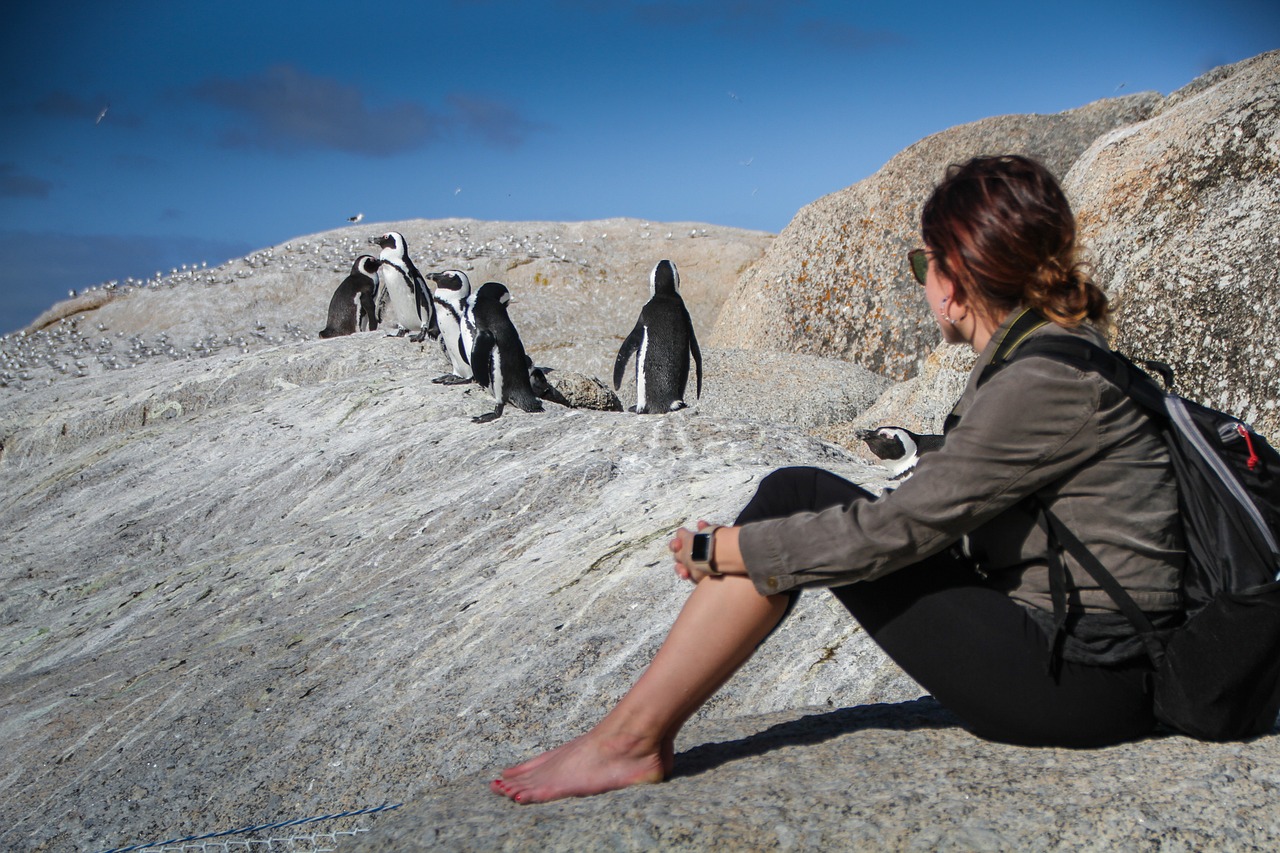
Cape Town, South Africa
The COVID-19 pandemic drove the global tourism industry to a grinding halt. With would-be travelers stuck at home, many tourist destinations were left deserted. In the Global North, news articles and social media posts led us to believe that wildlife had flourished during our absence. The phrase ‘nature is healing’ became a popular refrain, following reports of decreased pollution and unanticipated animal sightings in urban areas.
But was nature really healing? In reality, the decline in global travel decimated essential income for many protected areas, where biodiversity and local communities need it most. The sudden drop in tourism led to job losses and food insecurity, forcing households to return to wildlife and natural resources to survive. Poaching surged in some places in the Global South.
Before the pandemic, wildlife tourism had been steadily increasing. A 2019 study found that it had grown to have a direct economic value of USD 120 billion annually, providing over USD 344 billion of wider economic benefits and supporting 21.8 million jobs worldwide. With more visitors came more funding; with greater funding, better protection. For example, in the Philippines, Kenya and Zambia, over half of funding for protected areas comes from visitors. In Botswana, it’s more than 80%.
Mismanaged wildlife tourism can do more harm than good. Long before the pandemic, construction of infrastructure for tourists was a major cause of habitat loss.
However, research also shows that mismanaged wildlife tourism can do more harm than good. Long before the pandemic, the construction of large and luxurious accommodation, roads and other infrastructure for tourists was a major cause of habitat fragmentation and loss in popular destinations. Single-use disposables worsened plastic pollution problems. Greenhouse gas emissions from travel intensified climate change, and demand for extravagant food, hot showers and uninterrupted battery charging over-exploited local energy resources in remote areas.
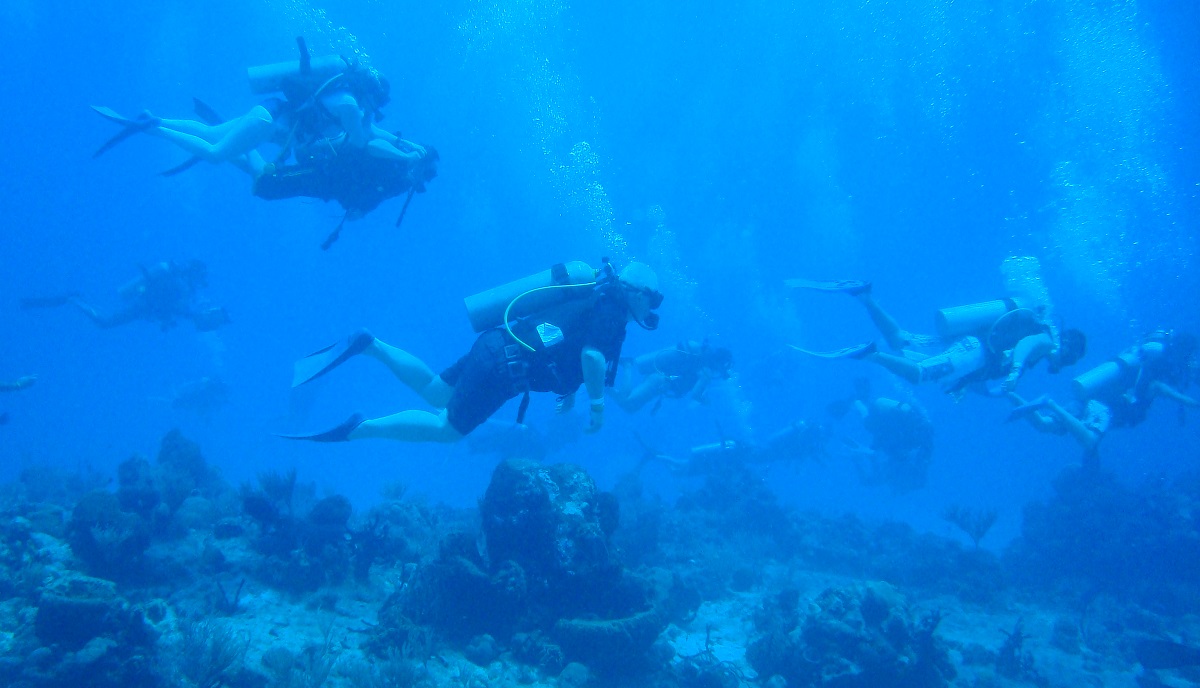
Cozumel, Mexico
Keenly aware of the need for the tourism industry to address its negative impacts while preserving its positive impacts, members of the IUCN WCPA Tourism and Protected Areas Specialist Group (TAPAS Group) set out to highlight the issue by bringing Motion 130 to the IUCN World Conservation Congress in Marseille. With insights from decades of research, IUCN Member Instituto de Ecología Aplicada (ECOLAP) emerged to sponsor the Motion. ECOLAP works with communities and wildlife reliant on ‘nature-based tourism’ and being based in Ecuador, home to the Galapagos Islands, is all too familiar with the opportunities and challenges tourism entails.
The Motion – now Resolution 130 - received overwhelming support from IUCN Members, who voted to invest more resources and further integrate tourism into the Union’s Programme. Work is ongoing to bring the Resolution to life through new ideas, projects and networks that help ensure nature-based tourism supports conservation and communities. But organisations like ECOLAP, the TAPAS Group and a handful of environmental NGOs cannot do this on their own. Every IUCN Member has a part to play, but ultimately individual tourists and tourism businesses must ensure the unique flora and fauna people travel to see are preserved.
We call on tourism businesses to join the Nature-positive Travel & Tourism Alliance, and demand that airlines and governments reinvest profits back into habitat conservation, communities and carbon mitigation.
Progress was made at last year’s UN Biodiversity Conference (COP15), when the World Travel & Tourism Council, the UN Convention on Biological Diversity, and numerous travel and tourism industry ‘heavyweights’ came together to make a pact to become guardians, rather than consumers, of nature. As signatories to the Nature-positive Travel & Tourism Alliance, almost 150 businesses have committed to give more importance to biodiversity and ecosystem health in their decision making. This pact helps guarantee that companies will strive to reduce the environmental footprint of tourism operations and value chains; increase their biodiversity impact monitoring; provide more support for Indigenous rights; and promote education for travelers, partners and communities about the need for conservation. It is a monumental step for the industry and an indication that the private sector can help reimagine nature-based tourism. We call on every tourism business to make the same commitment.
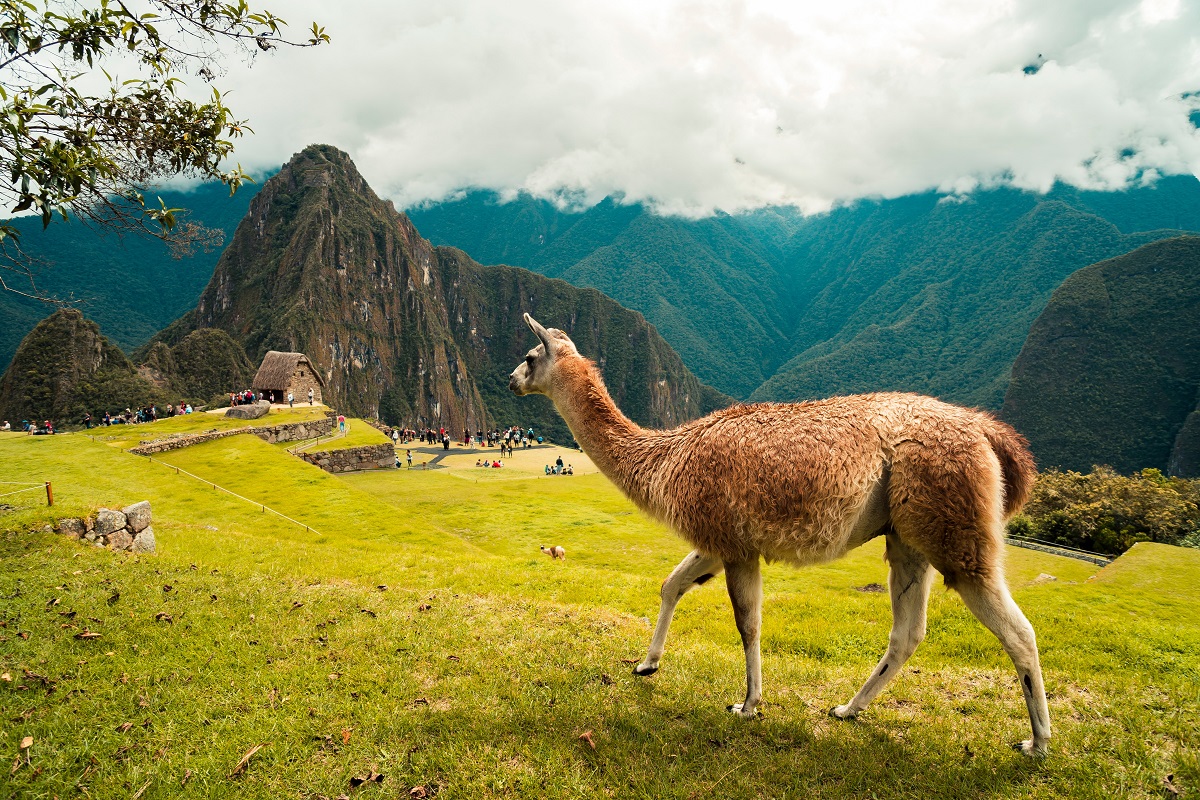
Machu Picchu, Peru
T ourists must step up too and make sustainable choices that minimise our individual footprint when travelling.
Individual tourists must step up too. Importantly, as tourists we must be cognisant of our choices and select companies and destinations that are sustainable, equipped to handle the experiences we seek, and able to contribute positively to nature and local communities. When travelling, we must be aware of our individual footprint and aim to minimise it. We must ask for opportunities for ‘voluntourism’ - in which tourists participate in voluntary work - and demand that airlines and governments reinvest profits back into habitat conservation, communities and carbon mitigation. Most of all, we must hold businesses and ourselves to higher standards of sustainable use, for example by maintaining appropriate viewing distances for wildlife; even if that means our vacations are a little less extravagant and our photographs a little ‘less wild'.
Today, the opportunities for sustainable tourism are rich and diverse. Well-managed it can share cultures, connect people with biodiversity, support local economies and provide vital funding for conservation, so long as we take care of the places we visit. Guided by Resolution 130, it’s the responsibility of us all - governments, businesses and individual visitors - to make sure that we do.
The authors would like to thank Dr Yu-Fai Leung, Dr Shane Feyers, Dr Kelly Bricker and Dr Anna Spenceley for their crucial support for Resolution 130 and its implementation.
Disclaimer Opinions expressed in posts featured on any Crossroads or other blogs and in related comments are those of the authors and do not necessarily reflect the opinions of IUCN or a consensus of its Member organisations.
IUCN moderates comments and reserves the right to remove posts that are deemed inappropriate, commercial in nature or unrelated to blog posts.
User Information User name: Sandra Nickel Roles:
Thank you for outlining these important steps to make tourism nature-positive. These are reminders we all need to hear.
Monitoring the resolution
User Information User name: Ron Mader Roles:
Very interesting, and good to see Resolution 130. That said, I don't quite get it. Can someone explain what the resolution calls for? For example, who and how will this resolution be monitored by the IUCN and others? 🌏 https://www.planeta.com/iucn2020-motion130
totally agree! Just happen…
User Information User name: Juan De Dios Morales Roles:
totally agree!
Just happen to be a very fine Line between carrying capacity, Tourism-based development and Market (Price for travelling) and democratization of Tourism. At the end, natural areas should be take care way more than a Urban monument of a City, but how to compete to that kind of cheaper that can also hold larger amount of people. Perhaps, then is when tourism should be redesigned and clients be able to pay higher prices. And, in that way find the correct income threshold.
Nature-Positive Tourism
User Information User name: Paul Rogers Roles:
Hi - a very nice article, although I'm a little surprised it didn't refer directly to the Nature-Positive report recently produced by the World Travel and Tourism Council and specifically the accompanying tool-box to enable companies of all sizes to develop nature-positive action plans? While I've heard some suggest the toolbox is too challenging for businesses to engage with, I'm not convinced this is case and think we need case studies and examples to showcase the successes and challenges...
Questions about the report
Interesting. Downloading the report now - https://action.wttc.org/vision-for-nature-positive-travel-and-tourism - and asking how this vision and toolbox will be used in a practical manner. I will be updating links on Planeta.
Add new comment

Sign up for an IUCN newsletter
June 8, 2016
Wildlife Tourism Faces Dark Days—but Revenue Soars
The “ Blackfish effect” has helped shut down some animal performances, but experts say there is still a long way to go to protect captive and wild animals from abuse and exploitation
By John R. Platt

An elephant performs during Ciniselli Circus' opening ceremony after its reconstruction in Saint-Petersburg, Russia on December 15, 2015.
Photo by Sergey Mihailicenko/Anadolu Agency/Getty Images
It has been a tough year for wildlife tourism. Last month the Cincinnati Zoo & Botanical Garden faced worldwide criticism when officials there were forced to kill Harambe the gorilla after a young child fell into the ape’s enclosure. A few weeks earlier a Yellowstone National Park bison calf was euthanized by rangers after tourists had handled it and put it in their car. And just last week authorities in Thailand uncovered gruesome evidence of abuse and wildlife trafficking at the world-famous Tiger Temple outside of Bangkok.
The tragic events come just a few months after two victories, each of which followed years of campaigns by animal rights groups. Ringling Bros. and Barnum & Bailey Circus revealed in January that it would retire its famous performing elephants and send them to live at a sanctuary in central Florida. Then in March the SeaWorld theme park chain, spurred by public reaction to the documentary Blackfish , declared that it would end its controversial killer whale breeding program .
With Harambe’s death death still heavy on peoples’ minds, many have begun to question the role of such facilities in conservation. Some believe this could be the beginning of the end of public acceptance of captive animals, a trend that has been dubbed “the Blackfish effect” . “I think there’s definitely good progress being made,” says Adam Roberts, CEO of the animal rights organization Born Free USA. “This concept of animal attractions as entertainment is starting to disappear.”
On supporting science journalism
If you're enjoying this article, consider supporting our award-winning journalism by subscribing . By purchasing a subscription you are helping to ensure the future of impactful stories about the discoveries and ideas shaping our world today.
Others are not so sure. “There’s a positive trend, but it’s kind of a drop in the bucket,” says Luke Hunter, president and chief conservation officer of Panthera, an organization devoted to protecting big cat species. “There are still widespread problems in many parts of wildlife tourism.”
Wildlife tourism accounts for 20 to 40 percent of the total $1 trillion annual tourism industry and involves as many as 900,000 animals around the world, PLoS ONE reported in a paper published last year. The paper ranked all types of wildlife tourism according to their impacts on animal welfare, and found that only a handful of activities—such as mountain gorilla ecotourism in Uganda and Rwanda and some elephant sanctuaries in South Africa and Thailand—have both positive conservation values and animal welfare components. Most other worldwide wildlife tourism activities—including elephant rides, street-dancing monkeys, dolphin interactions and snake charming—were found to have the opposite effect.
Many of these operations may actually be increasing around the world. “From my perspective, wildlife tourism is a growing phenomenon,” says one of the PLoS ONE paper authors, Neil D’Cruze, a researcher with the Wildlife Conservation Research Unit at the University of Oxford and at World Animal Protection, an animal welfare organization. He sees more and more people participating and revenue from these activities soaring.
Wildlife tourism, experts point out, affects a vast variety of species. A 2013 report from the United Nations Environmental Programme’s Great Apes Survival Partnership estimates that thousands of chimpanzees, orangutans and gorillas are “stolen” from the wild each year to be sold into the illegal pet market or to disreputable zoos and other tourist attractions. And Zimbabwe last year sold Chinese zoos 24 elephants , at least one of which reportedly died soon after arrival.
Even the capture and sale of wild killer whales—the practices excoriated in Blackfish —appear to be increasing. Whale and Dolphin Conservation’s (WDC) Far East Russia Orca Project received reports of at least 16 killer whale captures in the Sea of Okhotsk off Siberia over the past three years, with the animals supposedly destined for life in Russian or Chinese aquariums. Orca captures have “exploded” in recent years, says Erich Hoyt, project co-director, who added that Russia has established a quota for up to 10 killer whales to be captured per year. “These quotas fly in the face of scientific advice as they were awarded despite Russian marine mammal scientific advisory body recommending a zero quota in 2014 and 2015,” he says.
Killer whales aren’t alone. “The demand for whales and dolphins acquired from the wild continues to grow,” says WDC campaigns manager Courtney Vail, pointing to recent reports that the infamous Taiji dolphin hunt in Japan last year resulted in the sale of 117 dolphins to unaccredited aquariums or directly to wildlife dealers. Information on where these animals end up remains sketchy, but the Web site Ceta-base.org tracks dolphins and whales at hundreds of facilities around the world.
Large animals are not the only ones involved. Smaller creatures such as slow lorises, sugar gliders, and even owls and cobras find themselves caught and sold to create photo ops for tourists, says Anna Nekaris, a professor of anthropology at Oxford Brookes University in England. “The smaller the animal, the more likely it is to have been taken from the wild for a short life as a prop,” she says.
The biggest problem with many of these activities, experts say, is that operators tell tourists that they are benefitting conservation by displaying animals. “They claim significant conservation outcomes,” Panthera’s Hunter says. “They claim it’s good for the species. But they don’t contribute in that sense.” He points to South Africa’s popular lion cub petting enterprises, which breed the big cats indiscriminately and then discard them once they become older and too dangerous to be around tourists. Many of these adult lions, as shown in the documentary Blood Lions , end up being sold to facilities that allow “canned hunts” in which shooters can bag a trophy without the trouble of tracking it down in the wild.
Hunter feels activities like lion petting effectively steal funds from legitimate conservation activities such as those of national parks. “I’m convinced that every well-meaning person who has an extraordinary experience there believes they’re contributing to helping the species,” he says. “They want to know that the money they spent is going to conservation. It seems credible because people just don’t know better.”
Oxford’s D’Cruze says it is important that people ask questions to help understand if a facility treats its animals decently. “Where are the animals taken from? Are they put back in the wild? Are people paying for these animals or breeding them so they can sell them? What’s the actual business model of that facility?” He says the answer is not as simple as “wild animals equals good, captive animals equals bad.” He recently returned from a tiger research trip to India, where he saw tourism take a wrong turn in a national park. “There were jeeps going all over the place hounding this one animal,” he says.
Roberts of Born Free adds he has seen the same thing with lion safaris in Africa, where drivers sometimes “inch closer and closer” because they think it will create a better experience for paying tourists. “That detracts from the natural life of the animal, and it also becomes dangerous for people,” he says.
Despite the dangers many of these activities still pose, progress is being made. This past March more than 100 travel agencies around the world pledged to stop supporting elephant rides, and the U.S. enacted new regulations in April that will help protect captive tigers from interstate trade and block roadside zoos from letting tourists handle or feed the cubs of tigers or other big cats.
In Thailand, meanwhile, authorities have over the past two weeks seized all of the tigers living at the infamous Tiger Temple just outside Bangkok. The site has been a popular tourist destination for a decade, but the first day of seizures also uncovered 40 dead tiger cubs in a freezer , possibly backing up conservationists’ long-standing complaints that the facility did not have its animals’ welfare in mind and were using the big cats to feed the demand for tiger body parts to be used in traditional Asian medicine. To date 22 people working at the temple, including three Buddhist monks, have been arrested and charged with wildlife trafficking . Conservationists have long expressed fears that the temple was supplying tiger bones and other products for smuggling to China and other countries.
Roberts calls this kind of progress “really important. It sends a message,” he says. He added, though, that “work is far from done” and that change happens “in a long-term, progressive manner.”
Hunter, meanwhile, says there are thousands of good examples of wildlife tourism around the world, including everything from national parks to private reserves. “They foster encountering animals living in the wild with as little interference as possible,” he says. Those activities, in turn, generate millions of dollars for local communities and benefit wildlife without putting animals’ lives at risk for the sake of a selfie.
- International edition
- Australia edition
- Europe edition

‘It’s a struggle for survival’: why Kenya – and its wildlife – need tourists to return
Covid dealt a blow to tourism and the conservation funds it provides. But as visitors slowly return, the sector is looking for new ways to thrive
E very day, for the past 20 years, Joyce Naserian has laid out her handmade curios near an entrance to the Masai Mara park to sell to passing tourists. Her earnings have helped the 46-year-old feed and educate all four of her children.
In northern Kenya, about 1,200 semi-nomadic women earned more than 9m Kenyan shillings (£62,000) selling beadwork to visitors at 43 community wildlife conservancies in 2020. Just as it was Naserian in the Mara, selling the beadwork was a solid money earner for these women. But that was before Covid.
The collapse of eco-tourism during the pandemic has spelled disaster for conservation initiatives and livelihoods in Kenya and beyond. Cuts to budgets and staff, reduced salaries and stalled development and education projects have plunged communities into poverty, leading to a rise in poaching and the illegal wildlife trade.
Reuters reported that in the first three months of 2020, the African continent lost $55bn (£44bn) in travel and tourism revenues – funds that go towards running conservation programmes that benefit local communities.
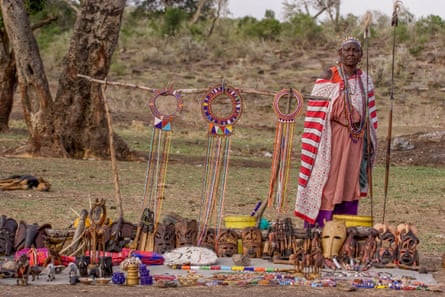
Kenya’s government has relaxed a raft of travel restrictions , but the return of international tourists has been slow, while concerns about carbon emissions from long-haul air travel may be putting people off flying into conservation areas.
“It is a real struggle for survival,” says Daniel Sopia, head of Masai Mara Wildlife Conservancies Association. “Women who relied solely on beadwork were badly affected as there was not a single tourist coming to the Mara at the height of Covid-19 restrictions. Household income dropped significantly and they had to rely on food from well-wishers.”
The 15 wildlife conservancies that Sopia heads comprise individual blocks of land owned by Maasai people. The landowners lease the land, covering 14,0426 hectares (347,000 acres), to safari camps and lodges, which pay fees that fund projects providing water, healthcare and education, as well as setting up small businesses.
In return, the 14,500 landowners protect biodiversity within the Mara ecosystem while preserving their traditional lifestyle.
Four years before the pandemic, the conservancies contributed almost 120m Kenyan shillings to social programmes in the region. Two years ago, payments to landowners fell by 50% , forcing conservancies to scale back operations and focus on priorities such as allowances to wildlife rangers. Sopia and his team had to scramble to prevent the total collapse of conservation programmes.
“Conservancies remained operational throughout the pandemic despite the lack in tourism income,” says Sopia. “We were fortunate to mobilise some resources from development partners and private foundations. These helped to cover rangers’ salaries, food rations, fuel, and vehicle maintenance.
“We hope the arrangement will be in place till June 2022 as we slowly wean the conservancies off such aid,” he says.
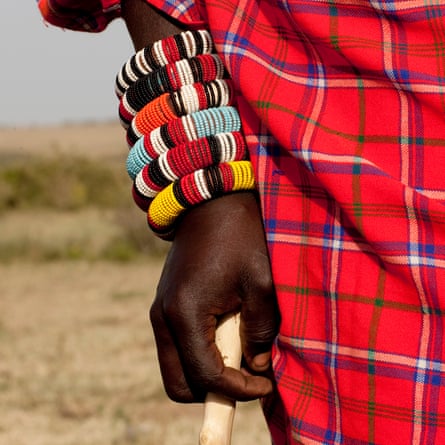
Some foreign organisations are now making a comeback after a two-year hiatus. In March 2022, UK charity Tusk brought together conservation professionals from across Africa for a symposium in Masai Mara to help organisations diversify fundraising and build resilient units.
Since 1990, Tusk has raised more than £80m towards conservation projects across more than 20 African countries and helped to protect more than 40 threatened species. Tusk’s upcoming Wildlife Ranger Challenge seeks to raise money for rangers whose pay was slashed in the pandemic.
“The last two years have been extremely tough for everyone. The conservation sector in particular has had to endure huge losses, dramatic cutbacks in operating budgets, and, sadly, redundancies,” says Charlie Mayhew, Tusk Trust chief executive.
Wanjiku Kinuthia, strategyhead at Maliasili , hopes the renewed interest in broadening discussions about African conservation will boost small organisations that are often left out of big decisions, despite being closest to the vulnerable communities bearing the brunt of a collapsing environment.
“They often miss out on global dialogues,” says Kinuthia, whose group supports about 20 other organisations in seven countries, including smaller ones that lack the networks to make their voices heard. “They do not understand how the media works or how to tell their stories. We can be catalysts of change for such grassroots organisations.”
Involving communities in conservation would safeguard the 65% of wildlife that lives outside protected areas, she says. “All people need are tools to help them coexist with animals in the 21st century while benefiting from conservation.”
However, some conservationists say the only way to sustain conservation programmes and avoid disruption is by governments increasing budgets to the sector, a challenge considering the current low levels of state investment.
Dickson Kaelo, who heads the Kenya Wildlife Conservancies Association, says African countries depend on foreign donors to fund development and conservation is no exception.
“There is no single answer to cutting off foreign aid,” says Kaelo. “There are no government incentives for setting up a conservancy to protect an elephant that walks all over destroying life and property.
“If you are in the farming sector, you can get a loan to buy a tractor, but there is no institution that gives loans for those who want to invest in protecting wildlife, and while a person buying a vehicle to ferry tourists gets some tax rebates, we get no such benefits when buying a truck for wildlife rangers.”
He adds: “Through a private member’s bill, parliament might create laws that hamper conservation including the Natural Resources (Benefits Sharing) Bill , with a formula that will see those in conservation give 80% of their proceeds to government and a paltry 12.8% to local communities.
In addition, the government requires that you come up with a management plan, a strategic and environmental study, multiple registration procedures and other permits before setting up a private conservancy. If you want to lease land you have to pay 2% stamp duty for the entire period, say for 20 years, and pay that upfront. Why don’t we see such laws when someone wants to cut down a tree?”
Kaddu Sebunya, chief executive at the African Wildlife Foundation says Africans must be exposed to the benefits of wildlife and wild lands so they can lead on conservation. A starting point would be to make tourism more accessible, he says, “as it is easier for someone in New York or Sydney to book a tour to Africa than someone living in Harare or Lagos.”.
“Building our domestic and regional tourism market will be a stepping stone to increasing the African voice for conservation. While millions of Africans traverse the continent to travel for business, how can these numbers be translated to nature tourists?
“Data from Unctad [UN Conference on Trade and Development] indicates that four out of 10 international tourists in Africa come from the continent, and this begs the question, ‘is our product marketing catering to the four Africans?’
It is high time for a shift in mindset,” says Sebunya.
Sign up for a different view with our Global Dispatch newsletter – a roundup of our top stories from around the world, recommended reads, and thoughts from our team on key development and human rights issues, delivered to your inbox every two weeks:
- Global development
- Conservation
Most viewed
Conflict between humans and wildlife in Tanzania is being poorly managed – and climate change is making things worse
Sustainability Researcher, Queen's University, Ontario
Disclosure statement
This research project was funded by the National Geographic Society.
Queen's University, Ontario provides funding as a founding partner of The Conversation CA.
Queen's University, Ontario provides funding as a member of The Conversation CA-FR.
View all partners

Human-wildlife conflicts are a challenge for authorities in African countries where people live near protected areas. Programmes for communities to participate in wildlife tourism and share its benefits have been put forward as one solution.
Those benefits are substantial in Tanzania. Wildlife tourism is a major source of foreign revenue for the country. In 2021, the tourism sector generated US$2.6 billion, or 5.7% of gross domestic product (GDP).
The country’s 2022 Wildlife Conservation Act offers financial and material compensation for any eligible person negatively affected by human-wildlife conflict incidents. Between 2012 and 2019 , more than 1,000 human-wildlife mortality cases were reported nationwide, with rural residents forming the large majority of the victims.
As a sustainability scholar with a research interest in farming and the environment, I set out to understand the experiences of people who’d been victims of human-wildlife conflict in Tanzania. In my study , I spoke with people in the villages of Kiduhi and Mbamba. These two villages share borders with the Mikumi National Park , the fourth-biggest national park in Tanzania.
I asked them about what drives human-wildlife conflict, in their view, when and how they experienced it, how it affected their livelihood or well-being, and what could be done to prevent it in the future.
Incidents of human-wildlife conflict had become common in the two villages, but I found that the victims’ experiences were underreported. I also found that the conflict was driven by habitat losses that pushed wild animals from the park to seek food and water outside. Changing weather patterns also played a role in tensions between wild animals from the park and residents of Kiduhi and Mbamba. Other research has linked changing patterns like this to climate change.
Water scarcity and loss of grassland
Villagers in Kiduhi and Mbamba believed that a decrease in rainfall and long periods of drought were what drove elephants, hyenas and lions to seek food outside the park. This claim from residents was echoed by wildlife experts from Mikumi National Park.
They said the lack of rainfall led to a loss of vegetation inside Mikumi, forcing large animals like elephants to forage further afield. Potential prey for lions, such as deer and wildebeest, also moved far away in search of food and water. As a result, lions and hyenas from the park targeted cattle and goats in neighbouring villages.
In Kiduhi, a predominantly Maasai community that keeps livestock, hyena attacks and killings of goats had become frequent, endangering the lives of residents. Some reported risking their lives by patrolling at night to protect their cattle and chase away hyenas that were reported to be frequently seen in the area. One victim in Kiduhi told me:
In February 2021, a lion attacked my boma and killed 11 goats but ended up eating just one goat. Though the attack happened at midnight, the lion didn’t leave immediately; it stayed until early morning. I reported the incident to wildlife authorities, who came and freed the lion. But, to date, I have not been compensated for my loss.
Crop losses
The research also found that elephants raiding neighbouring villages’ farms was the major cause of human-elephant conflict around the park. Victims from Mbamba reported that clashes between them and elephants happened almost every day from May to August, the peak harvest season.
Since most Mbamba residents are subsistence farmers, the damage that elephants cause to their farms has a devastating impact on livelihoods. Women expressed concerns about household food shortages because most of the food they produced was damaged by elephants from the park. One woman farmer said:
For me, it happens almost every year; they raid and eat all the crops, especially maize and rice. I have now accepted that when I grow maize, I also grow for elephants because they come every season.
Poor response
In Kiduhi, most Maasai men and women interviewed in this study felt the local government and park officals had not shown concern about the livestock losses they experienced from hyena and lion attacks. Despite their quest for compensation, they had received nothing but daily promises of resolution.
In Mbamba, some villagers said they didn’t bother to report losses because no action would be taken.
What needs to be done about it
Across Africa, financial compensation for victims of human-wildlife conflicts is a popular management policy. Though some conservation experts have questioned its effectiveness, proponents of financial payments argue that ignoring victims’ economic losses could make the situation worse.
Studies in Tarangire and Serengeti national parks in Tanzania revealed that inadequate compensation schemes and limited engagement of neighbouring communities were the primary cause of retaliation killings in both parks.
So, firstly, the government needs to improve its compensation scheme.
Secondly, local climate conditions in Tanzania need attention. Longer periods of drought and water scarcity are expected in the coming years. Human-wildlife conflict cases may escalate. Despite known evidence of the devastating impact of climate change on wildlife resources, the government of Tanzania has been very slow in responding to these risks.
One practical intervention would be investing in nature-based solutions like restoring degraded land and water sources within the park and its neighbouring villages. This would reduce tensions over these resources.
Neglecting victims’ welfare, and a lack of tangible benefits of wildlife tourism to communities adjacent to protected areas, could pose a serious threat to the survival of wildlife. Concrete measures to address this complex conservation challenge are critical for Tanzania, given the significant contribution of wildlife tourism to its economy.
- Climate change
- Peacebuilding
- Human-wildlife conflict
- Serengeti National Park

Associate Lecturer - Medical Education (Professional Practice)

Lecturer/Senior Lecturer, Earth System Science (School of Science)

Sydney Horizon Educators (Identified)

Deputy Social Media Producer

Associate Professor, Occupational Therapy
Things to know about Wildlife Tourism (+ better alternatives)
Seeing unusual wildlife up close is an incredibly special travel experience and one of the highlights of any trip abroad. However, some wildlife tourism can have a negative effect on the animals. For example, animal rides, zoos, selfies, or shows. In order to make sure animals are safe and healthy, it’s important to visit wild animals in their natural environment and treat them with respect, and not as something for entertainment. In our years of travel, we’ve learned from the good and the bad. Here are the tourist animal attractions to avoid and the better alternatives.
Animal tourism to Avoid and Alternatives
Let’s start off by saying that spotting what’s wrong or right with tourism and animals can be difficult. Hannah and I have made multiple mistakes when it comes to this topic and this article is to help you avoid exactly what we have done wrong and the better alternatives there are.
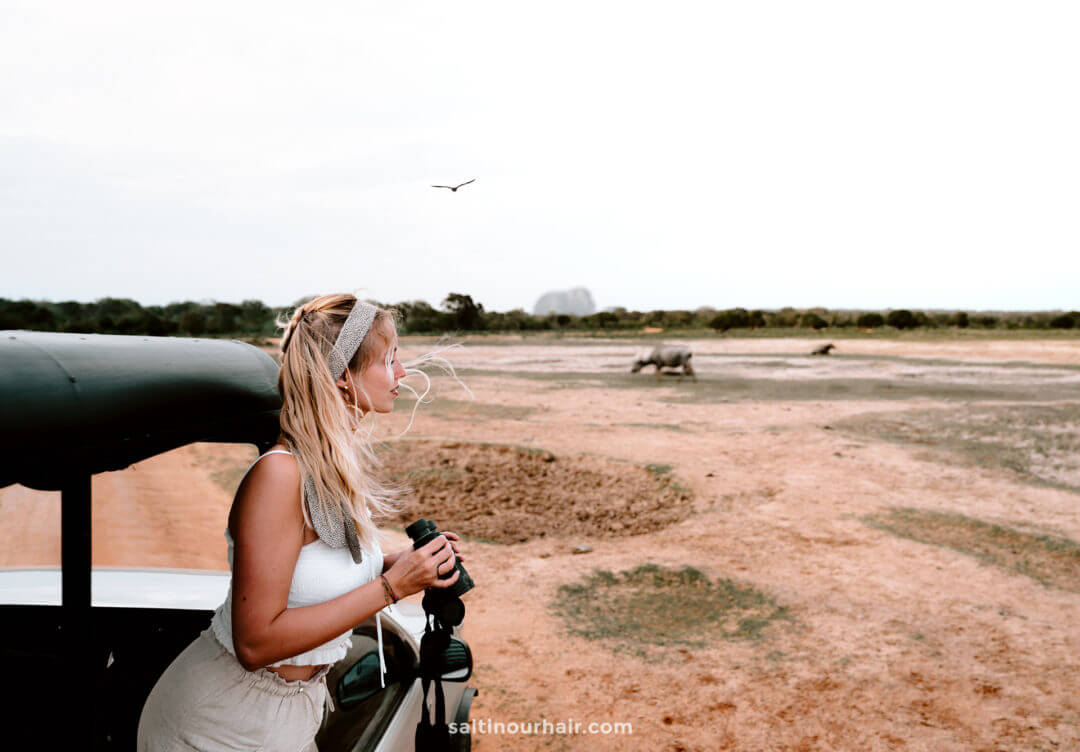
1. Zoos & Aquariums
Many animals in tourism are living in Zoos and Aquariums. There is some argument that they are good for conservation purposes, helping to preserve threatened wildlife species. However, in reality, it’s hard to decide if the benefits outweigh the negatives. Some reasons to avoid visiting zoos or aquariums:
- Wild animals shouldn’t be in captivity In captivity, they are unable to lead a full and happy life. For example, dolphins should be able to deep-dive and swim across large expanses of ocean. In aquariums, dolphins are kept in small pools that don’t even come close to replicating their natural habitat.
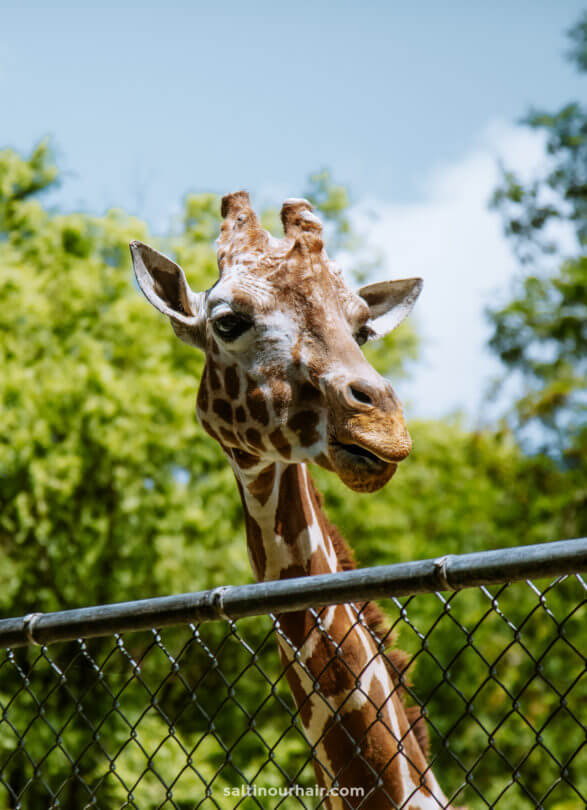
- It upsets their natural rhythm Tigers and lions, for example, are normally active in the early morning or at night. As zoos are open all day, and people are always watching them, their natural biology has to change. This can be very stressful for them.
- Animals are often forced to perform To make animals perform in this way, the trainers often treat them cruelly. They may remove them at birth from their mothers, chain them, or use violence. If a zoo or aquarium offers an animal show, that’s a red flag.

- Animals can get into a depression Did you know that Tarsiers (found in the Philippines ) commit suicide in captivity? Primates are very intelligent creatures and are at risk of boredom in environments outside of their wild habitat. This can cause them to have mental health problems, and even go as far as self-mutilation.
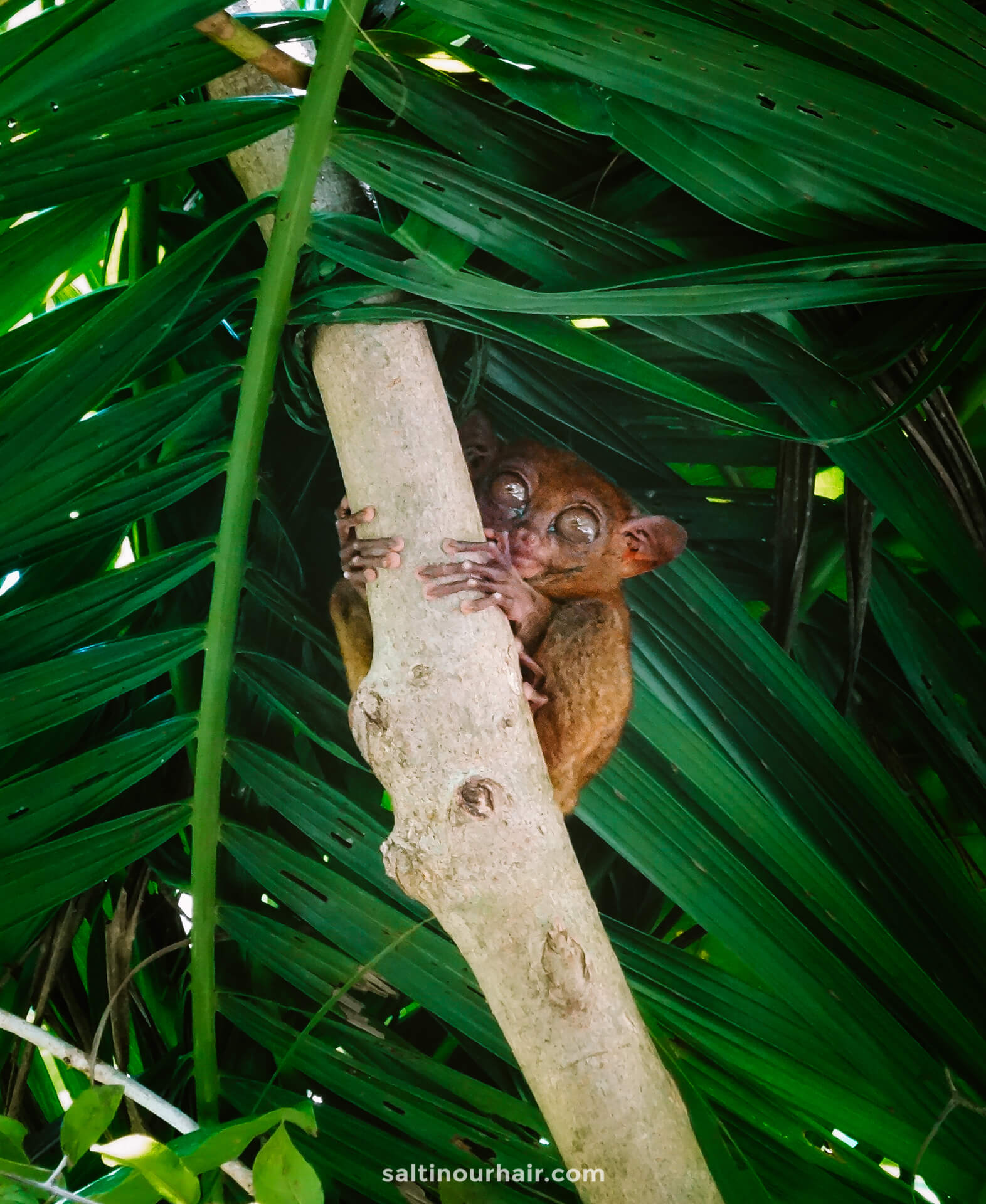
Alternatives to Wildlife Tourism for Zoos & Aquariums
Instead of visiting a zoo, consider visiting an ethical wildlife sanctuary instead. Make sure to do your research well, though, through a platform like the Global Federation of Wildlife Sanctuaries .
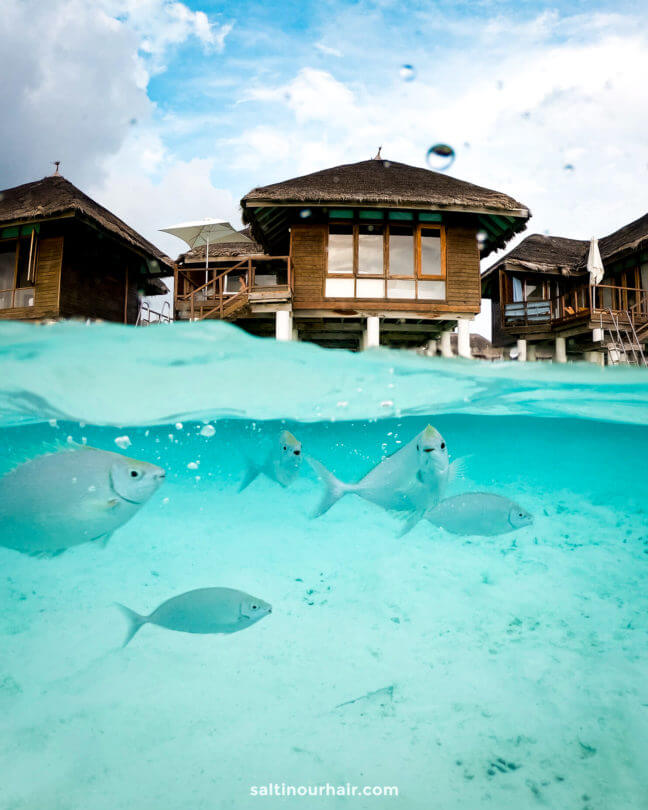
If you have a passion for sea creatures, consider volunteering for a charity like the Sea Turtle Conservancy in Costa Rica. Here they focus on researching, educating, and preserving sea life for the future. You could also participate in a beach clean-up and help make the oceans a safer place for aquatic life.
Another alternative is to go snorkeling or get your PADI diving certificate so you can see the life underwater. Great countries to get your PADI certificate are Thailand , Egypt , and Malta .
Standard sunscreens pollute the ocean: Use a reef-safe sunscreen
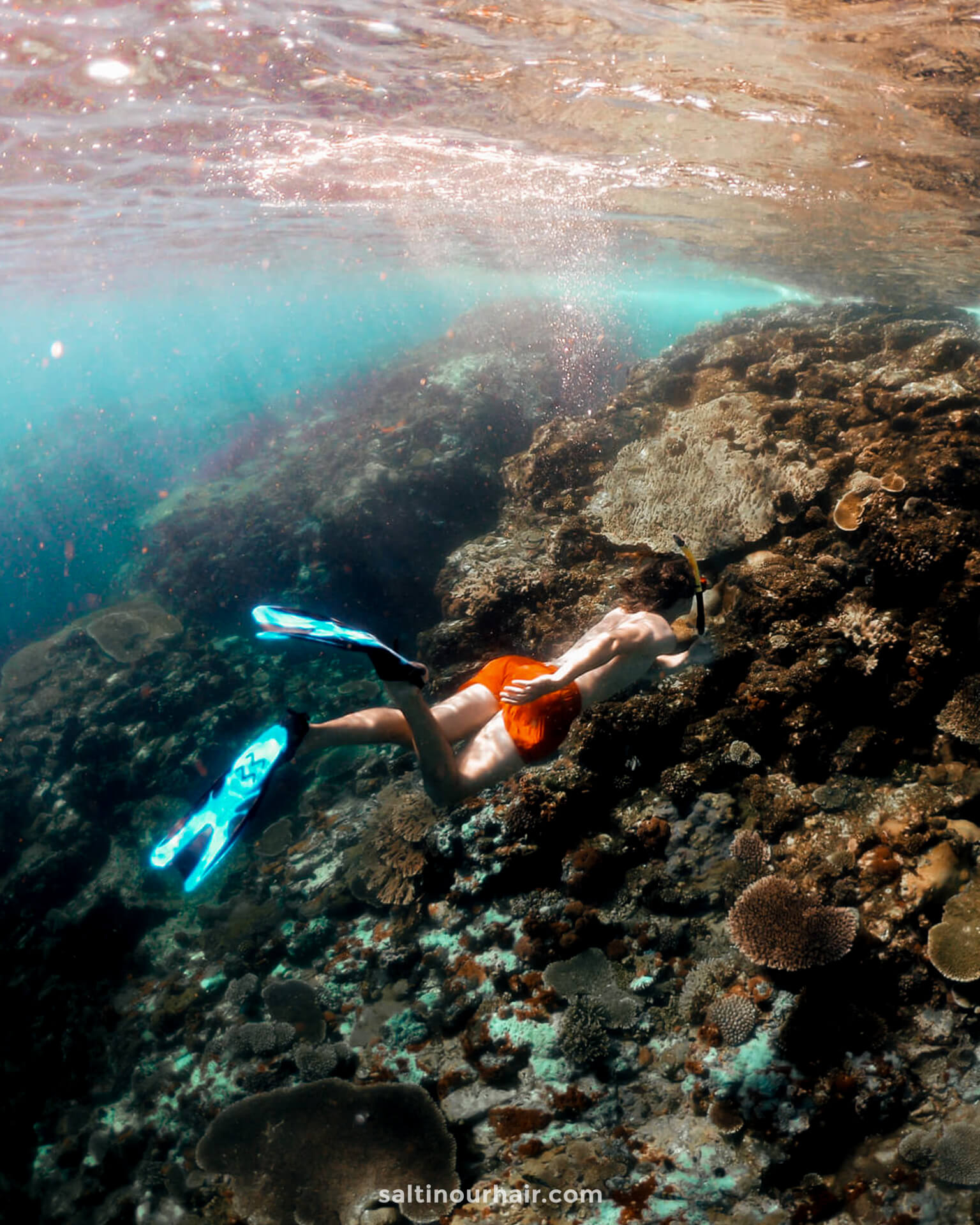
2. Wildlife Sanctuaries
Although some wildlife sanctuaries are doing a lot of good, there are many that are unethical. Any wildlife sanctuary that offers tourists the opportunity to interact with animals should be avoided. Even if you hear or see words such as ‘roam freely’ , ‘conservation’ , or ‘wildlife protection’ , this doesn’t necessarily mean that these sanctuaries are good. For example, some sanctuaries claim to save elephants from poaching but still allow tourists to ride them.
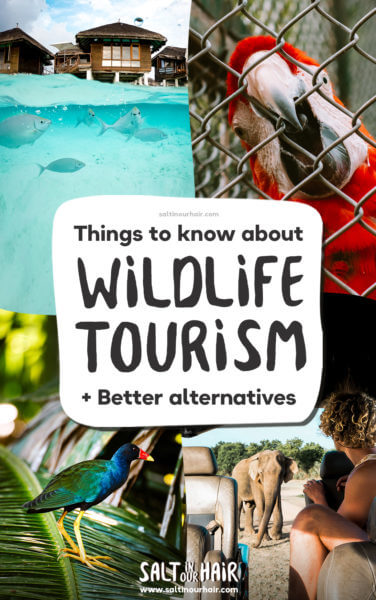
Tiger Selfies
You may have seen or heard of tiger selfies in Asia . This is an activity for travelers who want to fulfill their dreams of getting up close with these majestic creatures. In reality, it’s not possible for a wild animal to calmly interact with humans and the sanctuaries drug them to do so.
Thailand , in particular, is a popular spot for this kind of wildlife tourism. Many of the tigers are separated from their mothers from birth, confined in small cages, chained, drugged, and made to suffer extreme stress throughout their lives. Infamous wildlife sanctuaries, like the Tiger Kingdom, were even found to be selling tiger skin and body parts. Here’s an article by Vox about this shady business .
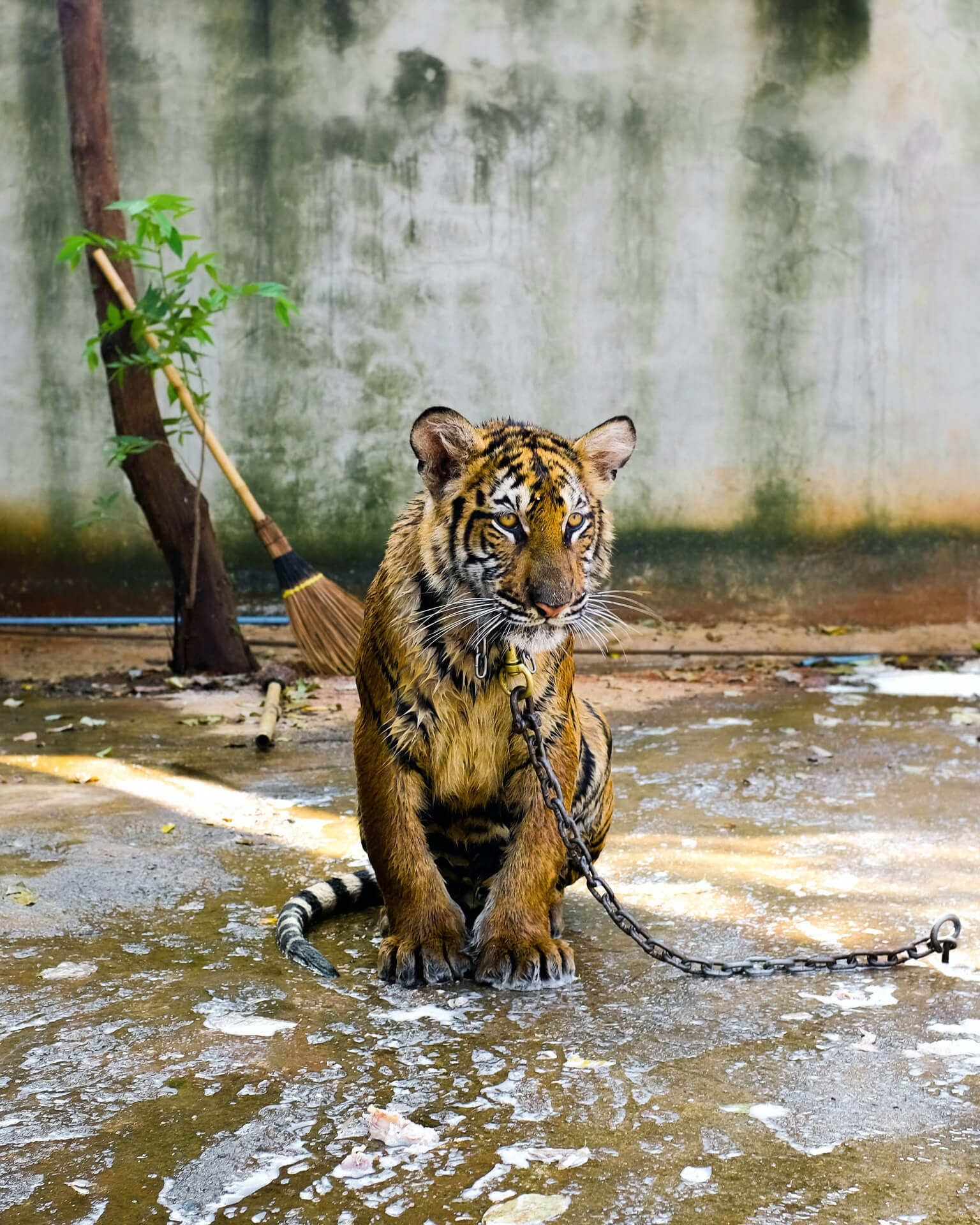
Alternatives to Wildlife Sanctuaries
Although it’s hard to find wildlife sanctuaries that are ethical, there are certain databases you can check—for example, the Global Federation of Sanctuaries . Make sure the sanctuary you’re visiting works in conservation, is reputable, and doesn’t allow any photos or touching of the animals.
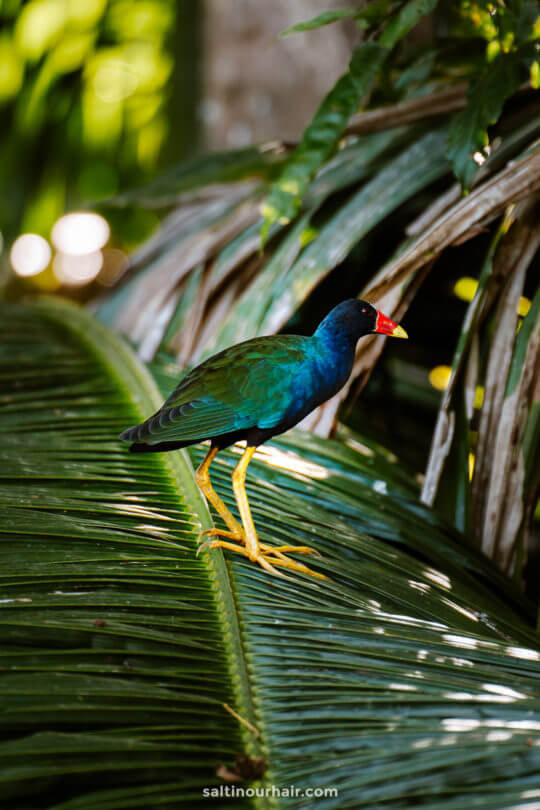
Alternatively, choose an experience in the wild, such as a canoe trip down the Amazon River. During these experiences, you may be lucky enough to catch a glimpse of some beautiful exotic animals.
Also read: A Jungle Tour through the Amazon in Peru
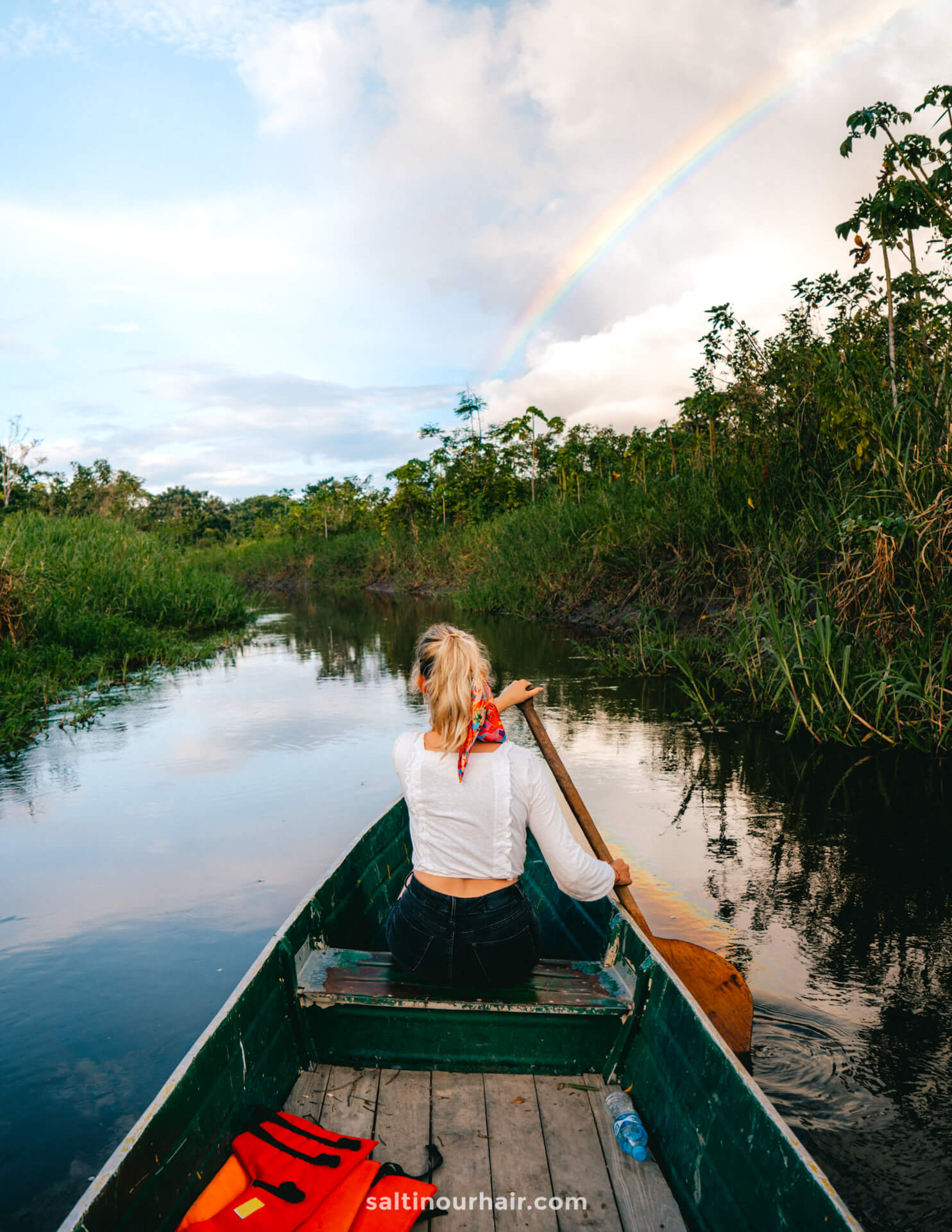
3. Wildlife Experiences
It’s very common to see wildlife experiences on offer for tourists. This can range from walking with lions to feeding crocodiles or diving with sharks. All of these experiences can cause a variety of problems: upsetting the ecosystem, causing poor relationships between animals and humans, and putting undue stress on wildlife and the planet.
Crocodile Farms
Crocodile farms give tourists the opportunity to feed the crocs, take selfies and even watch them in stunt shows. All of this is using the animal for entertainment and funding cruelty & captivity of animals.
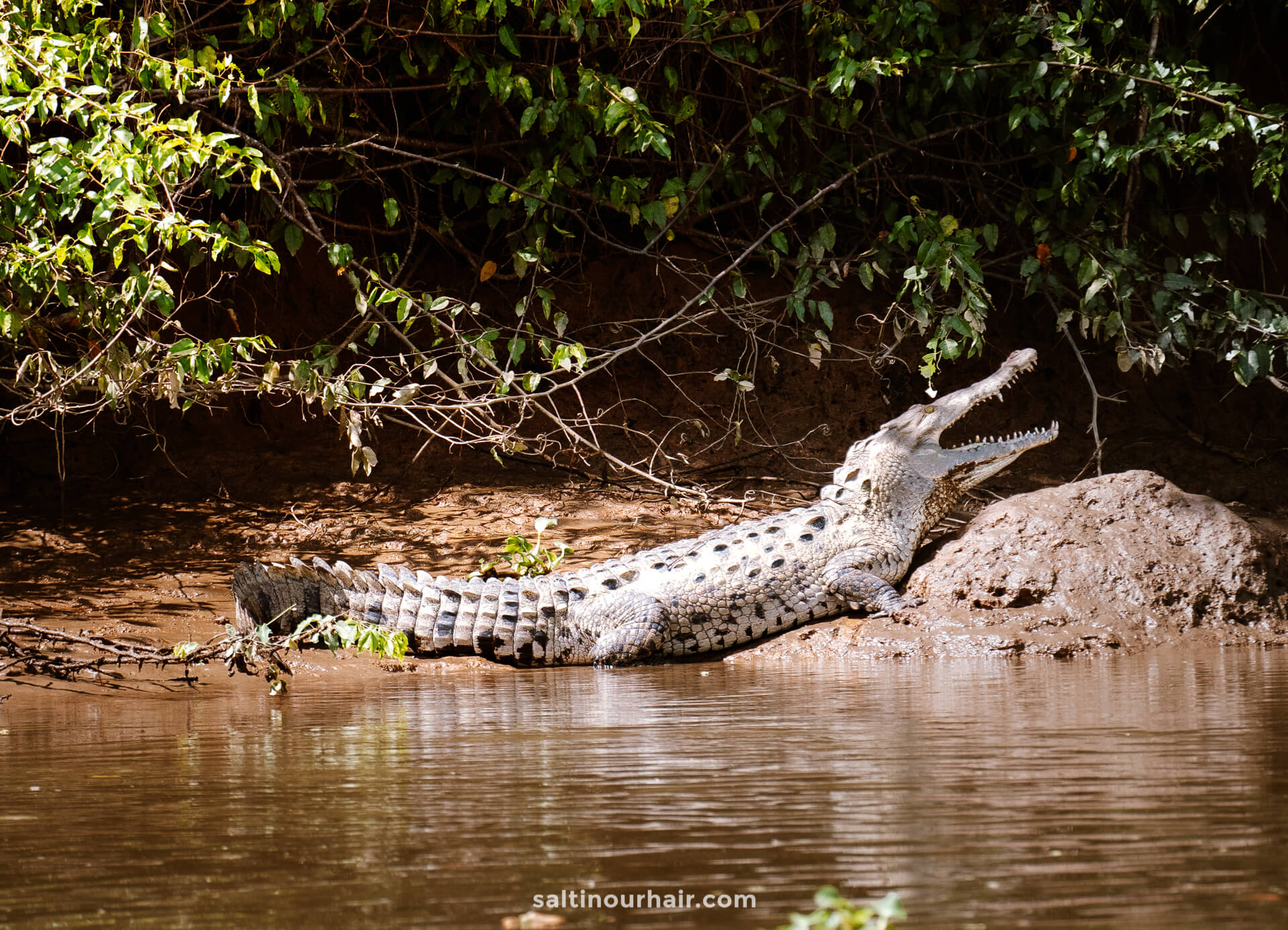
Shark Diving
Shark diving is another activity that’s become popular with adrenaline-seekers. However, in order for the sharks to be lured to the cage, the tour operators use a process called ‘chumming’. This is where they put minced fish into the ocean in order to bait them to the diving site. Not only does this upset the ecosystem, but it can lead the sharks to associate humans with food. This can result in more aggression from sharks towards humans – despite them being shy creatures.
Walking with Lions
Walking with lions is another tourist attraction, seen in places like South Africa. To make it safe for tourists to walk with lions in the wild, they remove babies from their mothers at a very young age and train them to be around humans. They also keep them in cruel conditions and teach them to replicate the behavior of domestic cats.
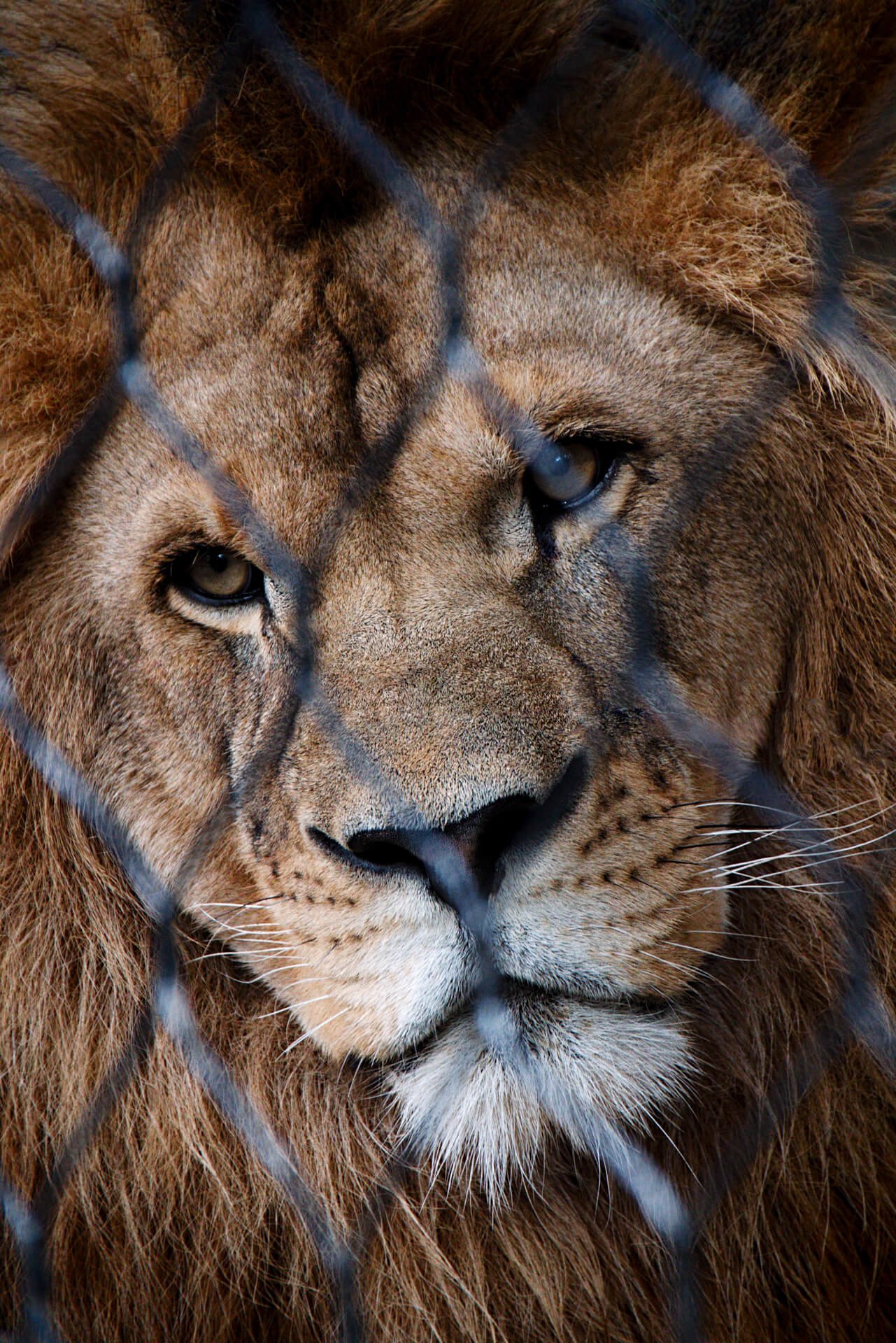
Ethical Alternatives to Wildlife Tourism Experiences
If you do want the opportunity to see animals in the wild, be respectful. Consider taking part in a reputable tour that doesn’t impact animals’ lives. For example, a safari in Sri Lanka with trained guides, observing elephants, leopards, and more quietly from a distance.
Discover: The best national parks in Sri Lanka to see wildlife
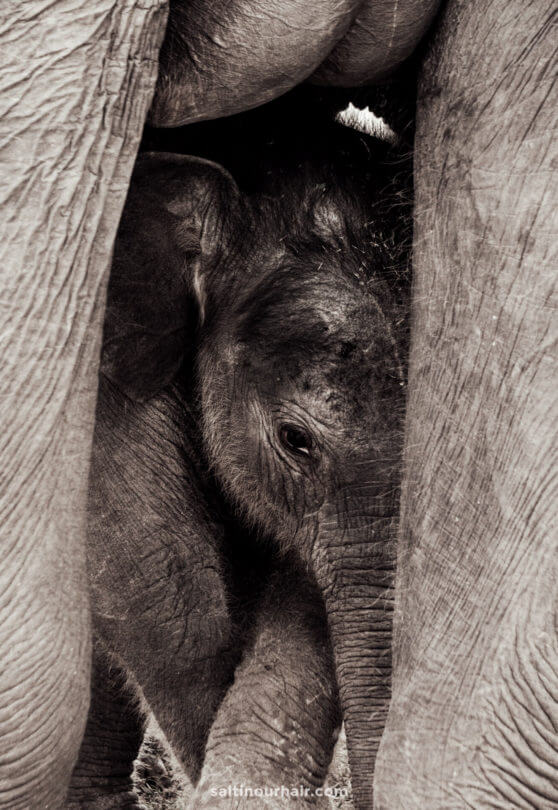
4. Riding Animals
Riding animals is not ethical. It’s a way for people to make money – exploiting animals for the entertainment or need of humans. When tourism controls the number of rides an animal is exposed to it is a business and not ethical at all.
Camel rides
When traveling to countries like Morocco or Egypt the camel has been used for centuries as a form of transportation. Nowadays, you as a tourist can ride the camels back for a quick photo at the Pyramids or walk up a dune. An unnecessary trip that you can easily do on foot.
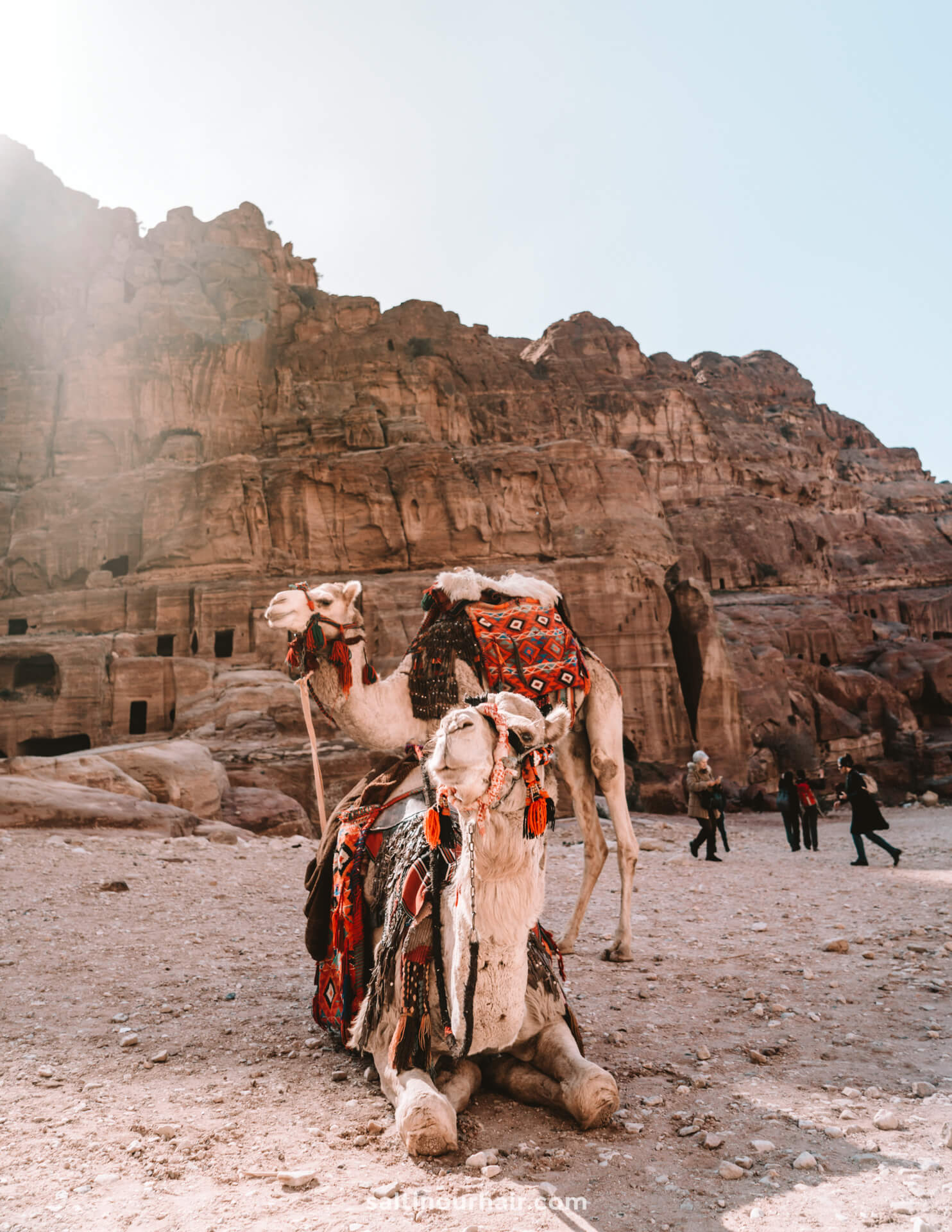
Donkey Rides
Ever arrived at a tourist destination and seen donkeys carrying tourists up the hill as in Santorini, Greece ? The owners often tie up the donkeys in extremely hot conditions, without water, and hit them in order to move or go faster. What’s more, they are often cared for badly and made for riding with a badly fitting saddle. This can cause horrible sores all over the body.
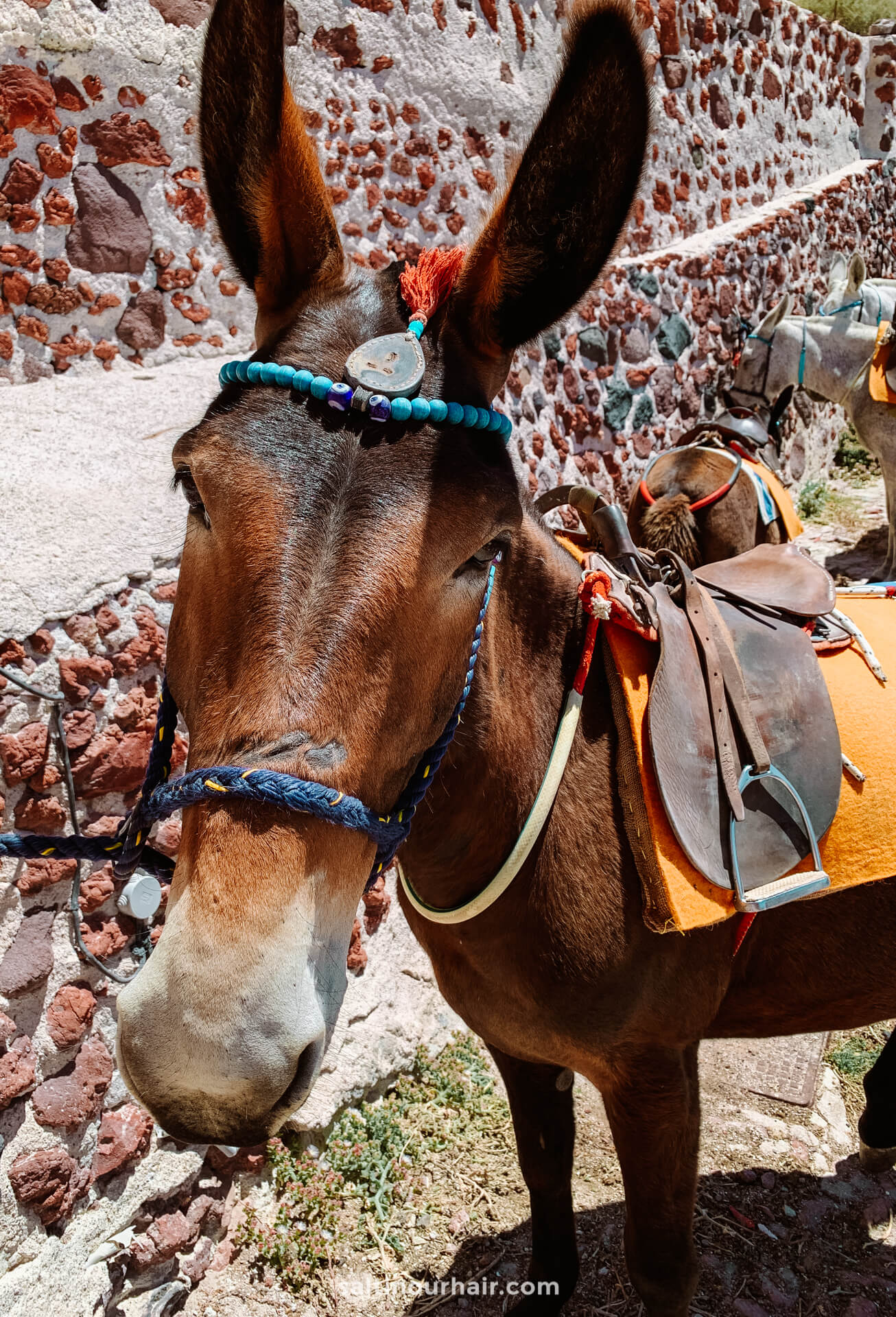
Horse Carriages
The same goes for the romantic horse carriage rides you see on a weekend city break. The horses are mistreated, forced to work long hours, and carry extreme weight. They are also at a greater risk of health conditions from being kept in traffic with toxic fumes. When their carriage pulling days come to an end, their owners often send them to slaughterhouses, ending their lives prematurely.
Horse-back Riding
When it comes to riding horses always have a look at the horse’s body and hoove condition. Also pay attention to the way in which the guide treats the horses. Excessive whipping is not a good thing!

Riding Elephants
Likewise, in Asia, it’s extremely popular to ride elephants. It’s important to remember that these amazing animals are wild and one of the most potentially dangerous animals in the world. Despite this, tourists believe that they are calm, human-loving creatures. To get them to this state, animal handlers break their spirits, separating the calves from their mothers at birth, chaining them, and training them to allow humans to sit on their backs. This process can be cruel, using hot pokers and other forms of violence for the trainer to establish dominance over the elephant.
Read: Where to see elephants in Sri Lanka (and what to avoid)
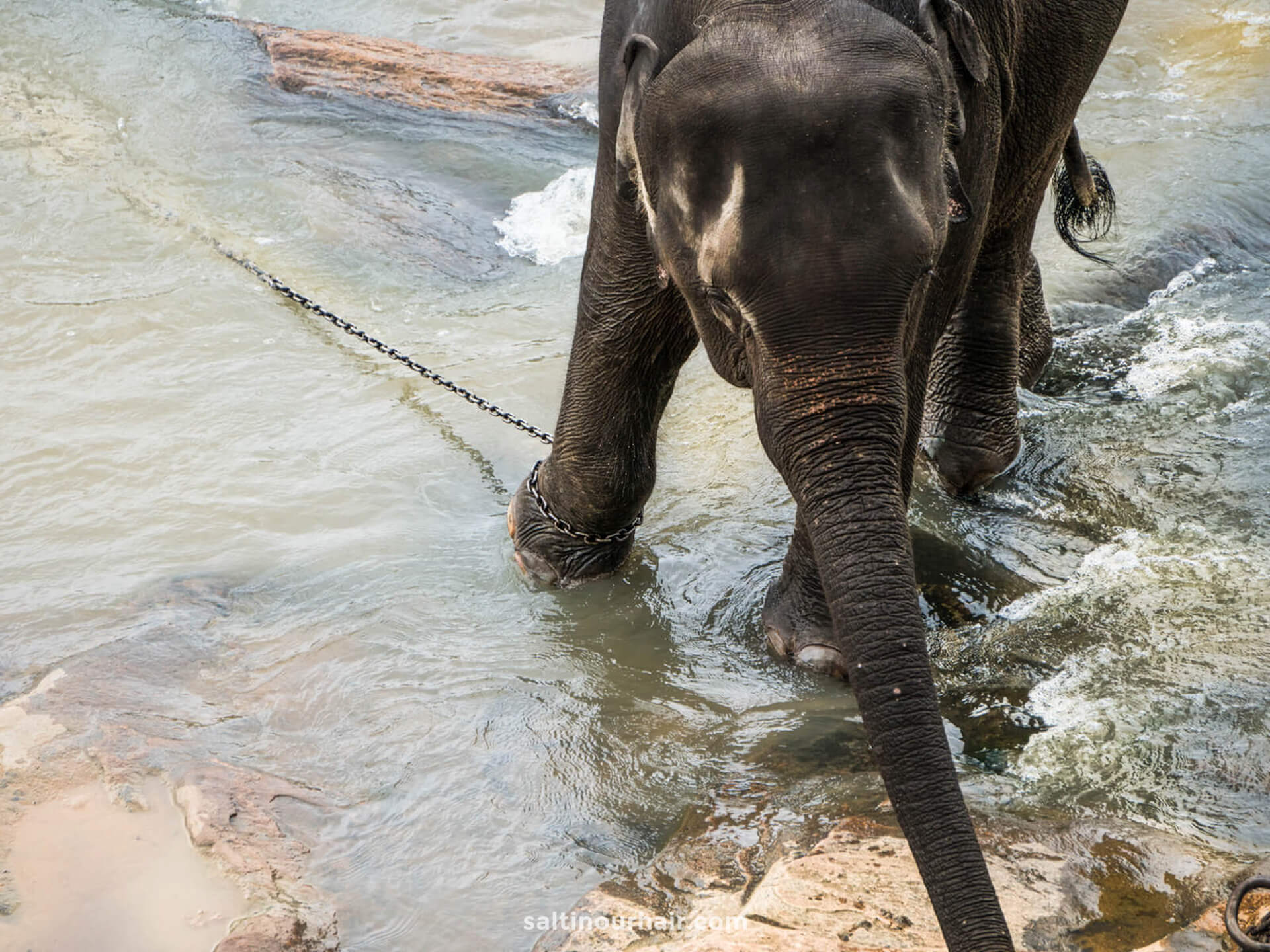

Alternatives to Riding Animals
If the animal-riding activity is purely for pleasure, it’s better to walk with the animal instead or go and see them from a distance. However, animal-riding as transportation can be replaced by walking or taking public transport to your destination. Always remember that: The less money we put into funding this kind of tourism, the more likely it will come to an end. If you want to experience being around these animals, go on an ethical safari in the wild or visit a reputable donkey sanctuary. Always do your research and raise awareness when you do see animal rides taking place.
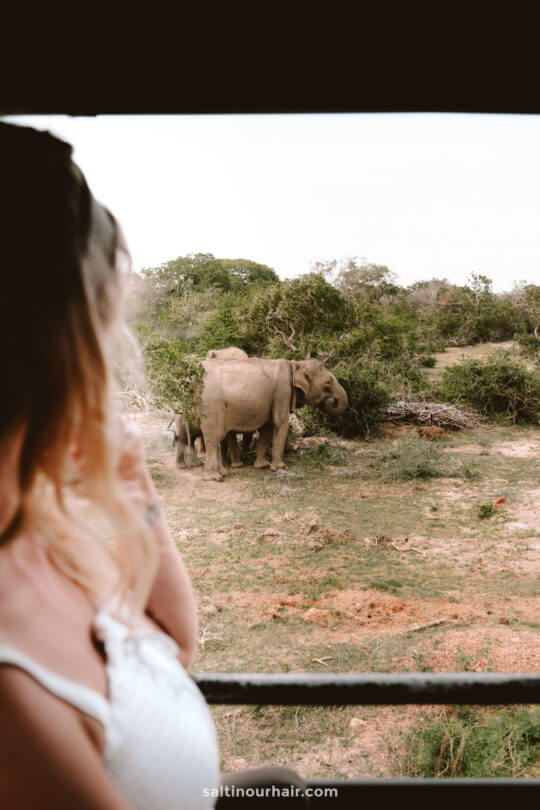
Why Avoid Most Wildlife Tourism?
Wildlife tourism often involves humans taking animals from their natural habitats and forcing them to behave in a domesticated way. These tourist attractions often use animals for entertainment, whether that’s dolphins performing or something as seemingly innocent as taking a selfie with an elephant.
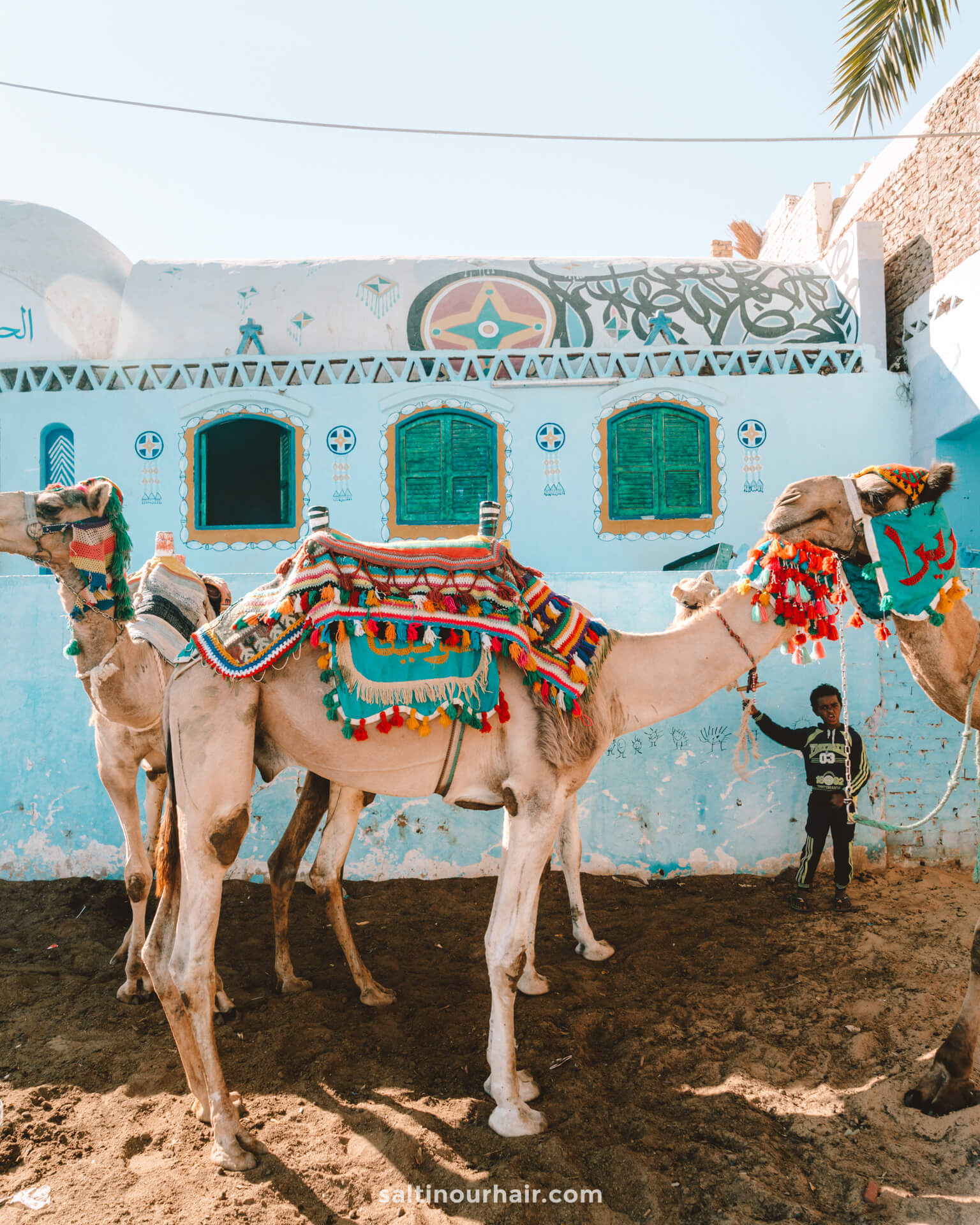
In order to force animals to interact with humans in this way, handlers and employees show dominance by using cruel punishments. This can be keeping them in confined spaces, separating them from their companions, or using violence.
“A quarter of the world’s elephant population is in captivity – The Guardian ”
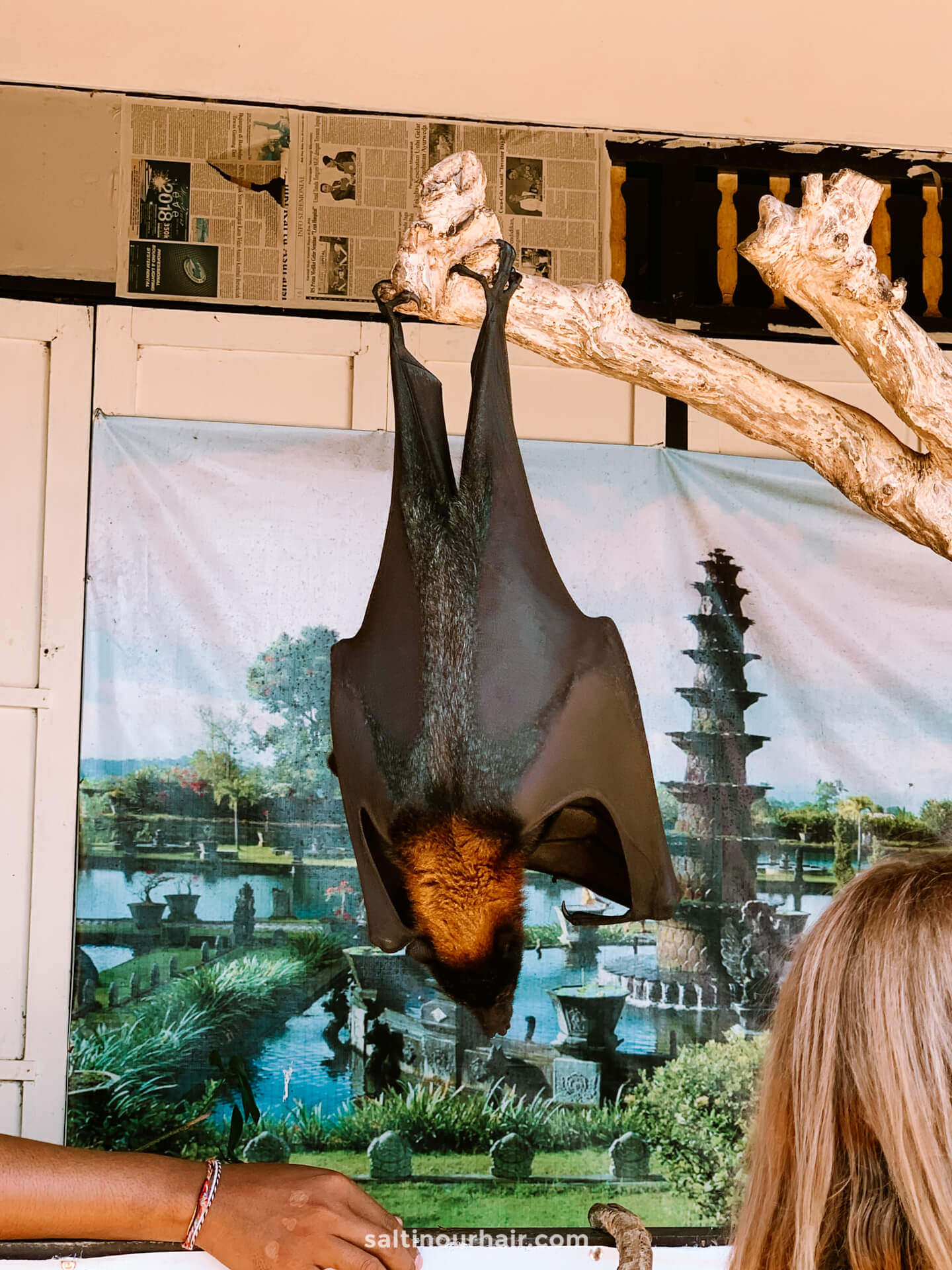
Problematic to the ecosystem
What’s more, wildlife tourism can cause problems within the ecosystem. Whether it’s giving wildlife food outside of their normal diet, clearing forests to make way for enclosures, or bringing lots of tourists to natural areas. This can upset the natural biological balance and cause damage to habitats.
Also read: Easy Tips to Travel Plastic-free
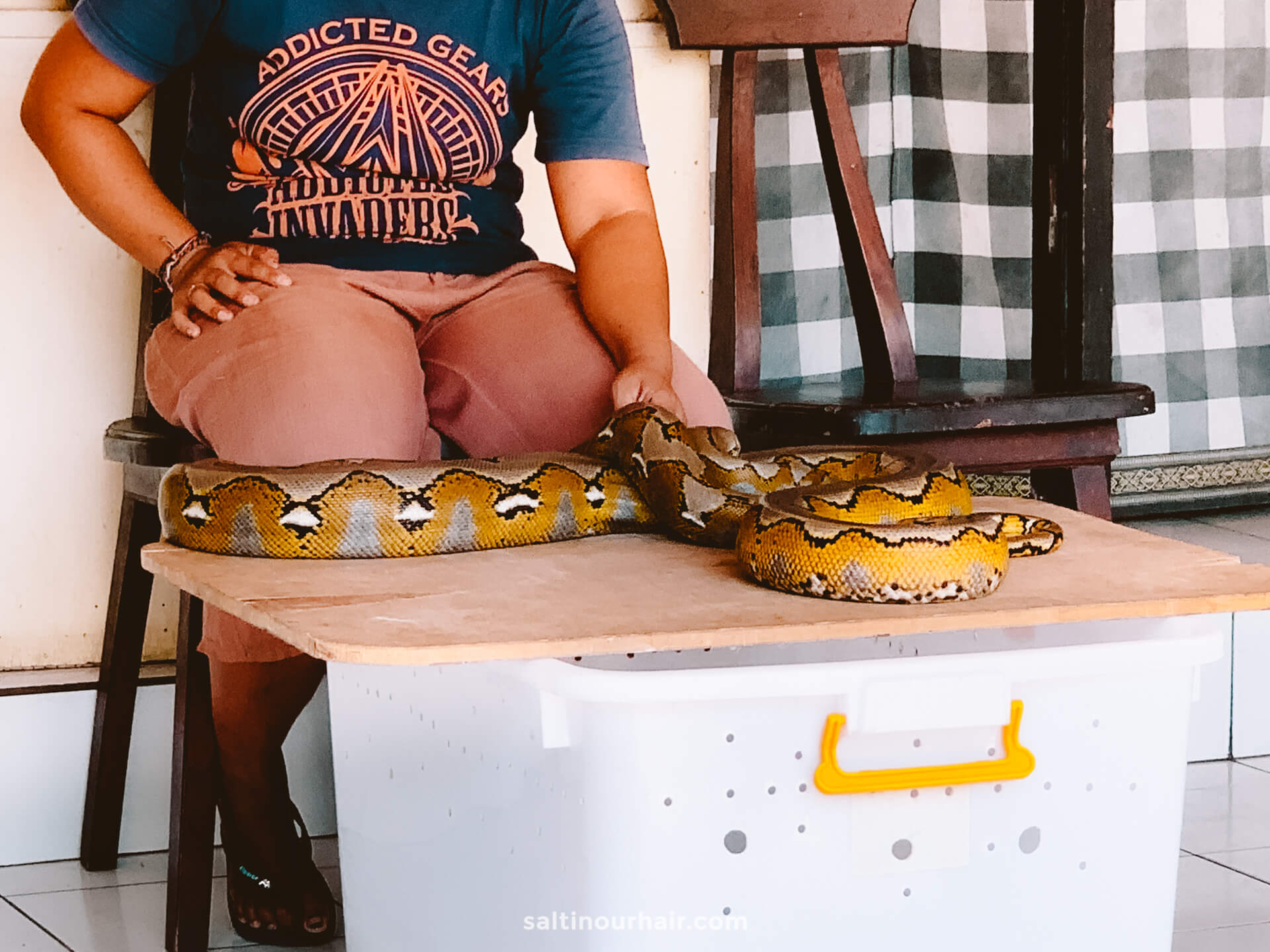
For example, when we went to Langkawi , we saw tour guides encouraging tourists to feed the eagles chicken skin. This is not a part of their natural diet and causes an imbalance of the food chain and damage to the ecosystem.
“75 % of wildlife attractions have a bad effect on the animals – Tourism Concern ”
What can we do improve wildlife tourism?
We’re lucky to have incredible wildlife on our planet, and, as humans, we should do our best to protect it. Luckily, there are plenty of ethical wildlife tourism alternatives that allow us to witness, protect, and preserve animals. These can be ethical wildlife sanctuaries that rehabilitate injured elephants, like Elephant Nature Park in Chiang Mai, Thailand , and release them back into the wild or turtle conservation projects that need volunteers to patrol beaches.
“More than 550,000 captive wild animals are experiencing cruelty for tourist entertainment – World Animal Protection ”
Tip: Raising awareness of the dangers of wildlife tourism is really important. Consider recommending a documentary to a friend, signing a petition, or taking part in a tree planting scheme.
By purchasing through our links, you support us at no additional cost. Thank you for your support. ♥️
- Find Hotels via Booking.com
- Find a Rental Car via Sunny Cars
- Find Cheap Flights via Skyscanner
- Get a Travel Insurance via Heymondo
- Book Tours & Attractions via Viator
- Book a Bus/Train/Transfer via 12Go
13 Easy Tips to Reduce Plastic & Travel Plastic-Free
How to make money online: 14 jobs & where to find them, adventure quotes to fuel your wanderlust.
Looking for more travel information? Plan a chat with us for personalised travel advice or get an answer from the Salt in our Hair Travel Community on Facebook.
I absolutely love the intention behind this blog and I’ve found it super helpful and informative! However I have to say it is a little hypocritical when you are literally riding a horse in the picture used to advertise your photo editing package :(
Hi Jaymi. Thanks and we absolutely understand your concerns about wildlife tourism. I want to share that our experience with this particular Horse Riding company in Costa Rica was positive—they prioritize the well-being of their horses and adhere to ethical practices. We’re open to discussing this further and appreciate your perspective!
Your email address will not be published. Required fields are marked *
Notify me when new comments are added.
- Prof. Development
Redefining Wildlife Tourism: Ethically Interacting with Animals Abroad

By Nick Callos
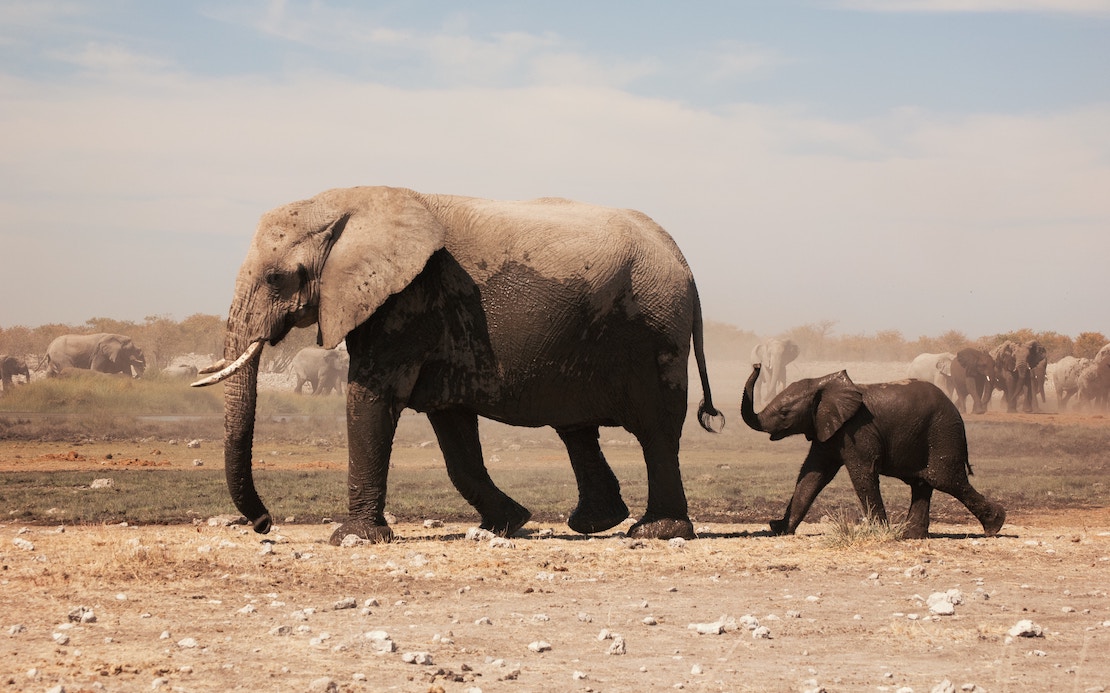
Few things captivate like seeing:
A cheetah running in the grassland… A grizzly bear fishing for salmon… A lion roaring at night…
These sorts of wildlife encounters make you stop, and appreciate the impressive beauty and dignity of animals and nature.
Sadly, not all animal interactions are what they seem. Travelers often aren’t aware of it, but many wildlife tourism activities actually hurt the creatures.
The reality is: Wildlife tourism is a complex industry. As an article in National Geographic notes, “discerning the difference between ethical and problematic wildlife experiences” is a difficult task.
But not all is lost.
Ethical animal interactions and wildlife volunteer projects exist. You can have a positive impact on wildlife, even as a tourist. What’s needed is more education and awareness, and a better understanding of what wildlife tourism should look like. This way, you know to join the right activities.
In this guide, we’ll discuss the dark side of wildlife tourism and explain the right way to interact with animals. We’ll also highlight reputable organizations and projects so you can explore ethical wildlife encounters and animal volunteer work.
The Dark Side of Wildlife Tourism
Perhaps you’ve read about Kim Kardashian riding on an elephant in Indonesia. A quick Google search shows all the criticism she received for it.
Whether the criticism was deserved or not, stories like Kim Kardashian’s should serve as positive learning moments. They should motivate us to learn more about the realities of wildlife tourism, and understand why elephant rides can damage the species.
Here’s an overview of the main issues with wildlife attractions:
Wildlife tourism takes animals out of their natural habitat
Many facilities that specialize in elephant treks, tiger petting, swim with dolphin experiences, and other interactions hold animals in captivity. Given the lack of regulations and oversight, many places don’t offer animals sufficient space and resources to live naturally.
Furthermore, the situation often gets worse than just not enough space. A study of 3,000 elephants in the wildlife tourism industry by World Animal Protection (WAP) found that 75% lived in ‘severely cruel’ conditions (more on this below).
Animal cruelty and abuse is widespread in wildlife tourism
The National Geographic feature, Suffering Unseen , details shocking scenes: shackled elephants, declawed and drugged tigers, abused bears in the circus, and more.
Whether it’s elephant rides or tiger petting, up-close animal interactions may not be as cheery as they look. If the wildlife tourism attractions aren’t prioritizing animal welfare, the creatures you encounter may be experiencing intense suffering.
Some kinds of wildlife tourism don’t prioritize animal rights
The University of Oxford carried out an extensive study on animal welfare in the wildlife tourism industry . Researchers analyzed wildlife attractions across five categories:
- Animal interactions like riding on elephants and swimming with dolphins
- Wildlife sanctuaries that protect endangered and injured animals
- Wildlife farms, like farms where crocodiles are bred for meat
- Animal entertainment, such as street performances
- Wild attractions, such as gorilla sightseeing
Among all the wildlife attractions, only wildlife sanctuaries earn positive scores for animal welfare and conservation. Animal entertainment receives negative scores for both.
As researchers noted, increased demand, a focus on profits, and travelers’ lack of awareness all contribute to the growing animal welfare problem in the tourism industry.
The Right Way to do Wildlife Tourism: No More Elephant Rides or Tiger Petting
Consider this statistic: Wildlife tourism accounts for between 20-40% of global tourism .
Now, we know why wildlife tourism is so popular: Animals amaze us!
But the economics of wildlife encounters create problems.
As stated in the article, Suffering Unseen , the “wildlife tourism industry caters to people’s love of animals but often seeks to maximize profits by exploiting animals from birth to death. The industry’s economy depends largely on people believing that the animals they’re paying to watch or ride or feed are having fun too.”
Tourists, eager to make memories while traveling abroad , don’t consider the possibility of animal cruelty. Even more concerning, animal cruelty can be tough to spot. And pictures on social media only add to the confusion of what’s acceptable.
It doesn’t have to be this way.
The solution is educating yourself before you interact with wildlife. Here are a few tips:
Read the bad reviews
Even for wildlife attractions that have poor animal welfare standards, they may receive good ratings from tourists. When you look up reviews, read the bad ones to see what they say.
As a rule of thumb, David Macdonald, Director of Oxford University’s Wildlife Conservation Research Unit, recommends avoiding any wildlife attraction that scores under 80% on sites like TripAdvisor .
Investigate the facility
Look for evidence the facility focuses on animal welfare and conservation. Find out if:
- the total area is sufficient
- there is space to escape the crowds
- crowd size is limited
- the facility upholds animal rights (for animals in captivity, the ASPCA says animals should have the freedom to express normal behavior , as well as freedom from hunger and thirst, discomfort and pain, injury and disease, and fear and distress)
Finally, ensure animal interactions only benefit the animals. View pictures, check out the website, and read reviews. They absolutely should not offer elephant rides, tiger petting, monkey performances, and other similar wildlife encounters. These activities hurt and stress the animals, and can cause long-term trauma.
Unless you’re giving medical attention, or providing care to captive-born wildlife that can’t return to the wild, you should not have physical contact with wild animals. Activities should be observation-based and include tasks designed to support their existence in nature.
Go into the wild
The best way to avoid the mistake of supporting a harmful wildlife attraction is to only visit natural environments. This includes observations of animals in national parks and wildlife sanctuaries. Such places protect animals from activities like illegal poaching and pet trading.
For instance, through Global Vision International (GVI), a leader in ethical volunteer abroad adventures , you can join a wildlife research project in Kruger National Park. As a volunteer for big cats in South Africa , you can see lions, cheetahs, and leopards in their natural habitat, and you can improve conservation strategies to ensure they can thrive in the wild.
Look for international certifications
Ethical wildlife attractions have obtained certification and have undergone third-party inspections. Some common certifications that demonstrate a commitment to animal welfare include:
- Blue Flag certification : awarded to sustainable marine tourism operators
- Fair Trade Tourism certification : awarded to those who follow best practices of responsible tourism
Volunteer for animals abroad
If you want to encounter wildlife but don’t want to contribute to anything unethical and harmful, volunteering offers you a solution. Just look for organizations that focus on ethical animal volunteer work.
For example, Via Volunteers , an ethical volunteering organization in South Africa , only works with the most responsible wildlife sanctuaries and projects. Their Lion Sanctuary project near Cape Town has earned international praise for exceptional care of captive-born lions. As a volunteer, you’ll ensure lions get treated with dignity and respect, and are protected from commercial use and breeding.
What do Ethical Animal Interactions Look Like?
Now, you know wildlife tourism should NOT entail:
- selfies with lions
- elephant rides
- tiger petting
What wildlife tourism should involve is:
- animal rescue and care, such as caring for rescued sea turtles
- observing creatures in the wild, such as ethical safaris in Tanzania
- conservation, research, and protection, like panda research in China
If you want to observe and study animals in the wild, or take part in work to protect endangered wildlife, consider conservation and research projects. Organizations like Projects Abroad run wonderful conservation initiatives around the globe, from shark conservation research in Fiji to Big 5 wildlife conservation in Botswana .
So, even though you’ll actively avoid wildlife tourism activities like petting a tiger and riding on an elephant, you still have plenty of options. And by opting to participate in only ethical activities, you can make a real and lasting contribution.
We Have the Power to Change Wildlife Tourism
In the following sections, we detail the different ways you can ethically interact and volunteer with animals abroad.
Don’t think of these activities as alternatives to wildlife tourism. Rather, think of them as a form of responsible wildlife tourism.
After all, we can redefine wildlife tourism. By making more educated and ethical choices about how we interact with animals, and also by spreading the word to others, we can inspire collective action. And we can make the focus of wildlife tourism about animal welfare and conservation.
Wildlife Protection, Rehabilitation, and Release
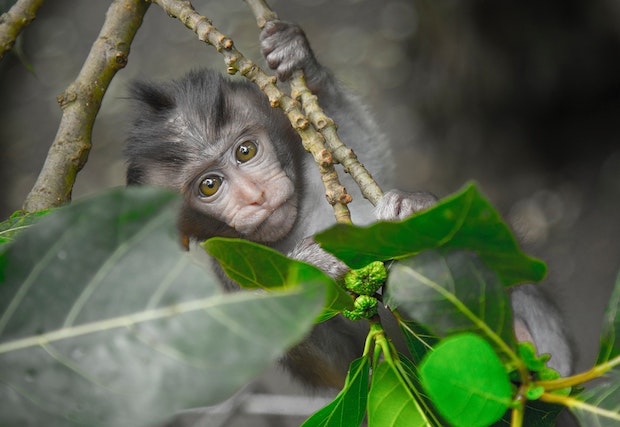
The National Wildlife Federation has summarized main threats to wildlife:
- exploitation of resources by humans
- spreading of invasive species and disease
- habitat degradation and loss caused by climate change and pollution
- poaching, illegal pet trading, trophy hunting, etc.
- the abuses of the wildlife tourism industry
Whether it’s deforestation from commercial logging or more drought from changing precipitation patterns, animals face a variety of threats. Many majestic creatures, such as the chimpanzee , deal with displacement and diminishing room to call home.
Many of these animals, especially those that have experienced cruelty in the wildlife tourism and illegal pet trade industries, have become seriously hurt and ill. They require medical attention and sanctuaries just to survive. This is where you can make a difference.
If you want to ethically interact with animals abroad, focus on helping animals in need get back on their feet (or wings!). Volunteer with animals at wildlife sanctuaries and responsible rehabilitation and rescue centers. Plenty of great organizations support projects throughout the globe (see below).
Plan My Gap Year (PMGY)
Founded in 2011, Plan My Gap Year (PMGY) has become a leading volunteer travel organization. They send 4,000+ volunteers abroad each year and consistently receive great ratings from project participants.
Operating across 17 countries, PMGY’s fees for wildlife conservation and animal rescue projects begin from just $225. PMGY’s affordability, transparency, and strong ethical commitment make them a terrific organization to choose if you wish to volunteer with animals abroad.
Wildlife Rescue in Thailand
Price: from $210 per week ($1,014 for two weeks; $2,514 for 12 weeks)
Length: 1 to 12 weeks
Habitat degradation and loss have pushed many of Thailand’s creatures near extinction. At the wildlife rescue center , you’ll assist with rehabilitation and release efforts for animals that have been injured or fallen ill. The shelter houses gibbons, langurs, lorises, bears, otters, wild cats, and other amazing animals. Your work won’t involve physical interactions with the animals, but you will create environmental enrichments, prepare and distribute food, clean enclosures, and maintain forest areas.
You’ll stay in a bungalow with other volunteers during the program. When you’re not volunteering with animals, explore the scenery of Kaeng Krachan National Park and the beaches of Cha-am.
Sound like the perfect trip? Apply to be a wildlife rescue volunteer in Thailand!
Wildlife Rescue in Bali
Price: from $218 per week ($729 for two weeks; $3,489 for 16 weeks)
Length: 1 to 16 weeks
Indonesia’s forests are home to wonderful biodiversity, but animals face rapid deforestation and environmental degradation from rubber and palm oil plantations. Many endangered animals, such as the Javan lutung, pig-tailed macaque, palm cockatoo, sea turtle, and grey-headed fish eagle, have lost their native habitat or been abused in the wildlife tourism industry or illegal pet trade. As an animal volunteer with PMGY , you’ll work at a center dedicated to rehabbing and releasing these rescued primates, birds, and reptiles. Duties include:
- mangrove conservation for biodiversity preservation
- feeding and enrichment (hands-off tasks)
- enclosure cleaning and maintenance
- assistance with release back into the wild
When you’re not volunteering with animals in Bali, do yoga, relax on the beach, hike in the forests, and more.
Already thinking about Bali? Register now!
Projects Abroad
Projects Abroad began in 1992 with the goal of connecting volunteers to impactful service projects. To date, they’ve placed more than 125,000 volunteers overseas on a variety of projects, including ethical animal conservation initiatives.
Projects Abroad is a champion of Responsible Travel and works towards the United Nations Sustainable Development Goals. They get great reviews on Volunteer Forever , with a rating of 4.7 out of 5 stars across nearly 350 reviews. If you want to volunteer with animals abroad, Projects Abroad deserves your consideration. They thoroughly vet each wildlife volunteer project for ethical commitment, quality, safety, and impact. So, you can be sure you’re doing good for wildlife.
Giraffe and Lion Conservation in Kenya
Price : $2,970 for 1 week; $4,260 for 4 weeks
Length : 1 to 52 weeks
Want to protect endangered animals in the savannah? Then head to Kenya, where you’ll work with conservation experts at Soysambu Conservancy, an entity in charge of protecting and conserving local flora and fauna and wildlife. As a volunteer with the conservancy, your tasks will include:
- Researching endangered species in the area, such as Rothschild’s giraffe
- Setting up cameras to monitor wildlife behavior
- Planting trees and removing invasive plants
- Managing waterholes the animals use
As you can see, this wildlife conservation project in Kenya doesn’t involve harmful tourist activities, like elephant rides or tiger petting. The goal is to collect data so that we can protect endangered animals and help them thrive.
Interested in signing up? Click here !
Animal Rehab in Peru
Price : $3,220 for 1 week; $4,660 for 4 weeks
Journey to the Amazon and help with wildlife rehabilitation and reforestation. As a volunteer, you’ll work to protect wildlife, indigenous plants, and the future of one of the world’s most important natural areas. Duties range from helping with turtle and butterfly breeding programs to collecting data for biodiversity studies. You’ll also assist with rescuing, rehabbing, and releasing injured wildlife, which is really cool. In this program, your work goes a long way in protecting life in the Amazon rainforest .
If you want to do animal volunteer work abroad in the heart of the Amazon, look no further. The project is based at Taricaya Ecological Reserve, and you’ll have time for travel to popular cities and sites in Peru, such as Cusco and Lima.
Ready to go? Sign up as a wildlife rehab volunteer in Peru here !
Animal Rescue, Care, and Adoption

Think about this: In the USA alone, more than 6.5 million dogs and cats enter shelters each year , according to the ASPCA. Across the world, animal rights and animal ethics still have a long way to go, and that’s causing widespread homelessness and cruelty.
As Maximo Nivel, a leading volunteer abroad organization in Latin America , describes, in many countries, “a lack of education and understanding of animals and their unique needs ” has left side streets filled with “abandoned dogs and cats.” Moreover, “exotic species are sometimes illegally captured and kept as pets,” and farm animals get neglected because farmers lack resources to care for them.
Clearly, domesticated animals, including farm animals, and exotic wildlife are enduring an animal rights crisis. From hunger to physical and emotional illness, the consequences have become tragic.
Your service is needed . From Vietnam to Ghana to Mexico , animal volunteers can make a significant impact by joining an animal rescue and care project , like the ones below.
Maximo Nivel
If you want to volunteer with animals in Latin America , look no further than Maximo Nivel . A leading organization in study abroad and educational travel in the region, Maximo Nivel began in 2003 and is an internationally accredited organization .
Maximo Nivel is committed to promoting animal rights in Latin America. Their animal care and wildlife volunteer programs strive to protect and heal those creatures that have suffered from abuse, neglect, illegal trading, and other forms of animal cruelty. From horse rescue and rehabilitation in Guatemala to volunteering for exotic animals at a zoo in Peru, you have plenty of opportunities to save animals in need!
Dog and Cat Shelter Volunteering in Guatemala
Price: from $314 per week ($645 for 1 week; $1,255 for 4 weeks)
Length: 1-4+ weeks
Make the trip to Antigua, a UNESCO World Heritage City known for its Spanish colonial buildings. There, you’ll care for stray cats and dogs that deal with hunger and health issues. When you volunteer with the stray animals , you’ll offer much-needed human company, provide food, groom the cats and dogs, and assist with veterinary care. You’ll help solve a public safety problem as well. Other duties include carrying out educational outreach, running fundraising campaigns, and getting involved with spay/neuter programs.
During off-hours, view the architecture in Antigua, hike in the nearby mountains, and immerse yourself in local culture. Sounds like quite the volunteer vacation, right?
Reserve your place at the dog and cat shelter in Guatemala!
Alpaca Farm Volunteering in Peru
Love alpacas? Then join this unique farm animal volunteer program in Cusco . You’ll help out at a family-owned farm that produces traditional Peruvian textiles from alpaca and llama wool. The alpacas and llamas are ethically raised, and your job as a volunteer will be to care for them. That includes feeding, cleaning pens, and doing light farm construction.
What’s also nice is that Cusco, a city in the Peruvian Andes, sits close to Machu Picchu, the Sacred Valley, and other Inca Empire sites.
Ready to go? Sign up to volunteer with alpacas now!
Love Volunteers
Love Volunteers has become known for their affordability, transparency, and commitment to making a lasting impact . Founded in 2009, Love Volunteers prioritizes intercultural exchange and serving local communities in a way that truly benefits them. With an average rating of 96% from past volunteers, it’s clear they’re doing good work.
Love Volunteers offers plenty of ethical ways to interact with animals abroad, from patrolling African game reserves to monitoring Asian elephants to protecting giant sea turtles. If you want to volunteer with animals at rescue, care, and adoption centers, they have high-quality projects in exciting destinations (see below!).
Animal Rescue in Albania
Price: from $70 per week ($279 for 2 weeks; $829 for 12 weeks)
Length: 2-12 weeks
Contribute your time and energy at an animal rescue center in Tirana , the capital of Albania. The center is the only animal shelter in the entire region, and provides a crucial safe haven for sick, injured, and endangered animals. As a volunteer, you’ll:
- care for mistreated domestic animals
- provide medical attention to injured animals
- engage in cross-cultural exchange with staff and visitors
The animal rescue center in Tirana receives no government support, so your work as an international animal volunteer is essential. When you’re not helping the animals, explore Tirana, a gorgeous city with colorful architecture and surrounding mountains.
Think this is the program for you? Apply here!
Wildlife Rescue in Australia
Does wildlife volunteering in ‘the Land Down Under’ interest you? Then travel to Stanley State Forest, a gorgeous natural area in Victoria. There, you’ll care for indigenous wildlife that have been forced from their natural habitat, orphaned, or injured. The goal is to nurse and rehab these animals so they can return to the wild.
Past volunteers have great things to say about the wildlife rescue project, like Amanda:
“The project manager is wonderfully nice, as are the other volunteers there and, of course, the wallabies and kangaroos are just precious!”
Ready to serve as a wildlife volunteer in Australia? Get a spot in the program today!
Wildlife Research and Conservation
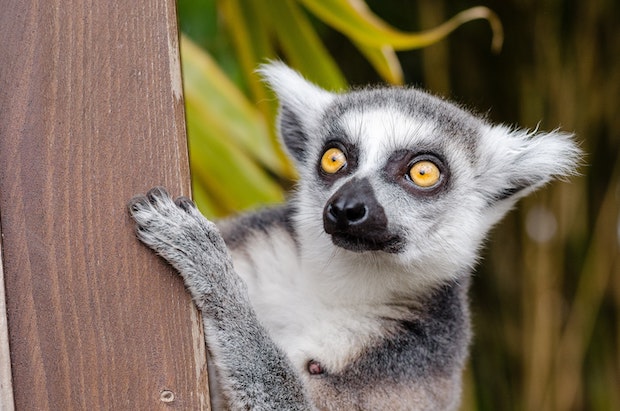
If you want to help animals survive and thrive, contribute to wildlife conservation efforts as a research volunteer.
As Global Vision International , an award-winning volunteer abroad organization that tackles wildlife and environmental issues, states, research volunteers play a vital role in the “success and long-term sustainability” of wildlife conservation programs . Without such support, partner projects “would not have the manpower to conduct their research, protect endangered species, map habitats, and educate local communities on how to look after their unique environments .”
When you serve as a wildlife conservation volunteer , you’ll engage in ethical animal interactions (i.e. observing and monitoring). You’ll get to witness magnificent creatures, like sharks and lions, in their natural habitats.
Want to hear about specific conservation experiences? The organizations and projects below can provide an amazing experience and the chance to leave a lasting, positive impact.
GoEco is a leading ecotourism company and volunteer abroad program provider. They’ve placed more than 17,000 volunteers in projects since beginning in 2006. And they were recognized as the 2018 Top Volunteer Abroad Organization by GoAbroad.
GoEco’s wildlife volunteer projects have sustainable goals, respect animals rights, and only include ethical animal interactions. They have strong ethical values, including a strict wildlife protection policy for all their programs.
Wildlife Research and Conservation in Madagascar
Price: from $358 per week ($1,200 for 1 week; $3,580 for 10 weeks)
Length: 1-10 weeks
Journey to Madagascar, one of the world’s most biodiverse regions. There, you’ll work with wildlife research experts. You’ll take daily trips into the forest, carrying out surveys on birds, mammals, reptiles, and amphibians. You’ll get to study lemur behavior! You’ll also map vegetation, analyze levels of human disturbance, and participate in educational outreach campaigns. The program teaches a lot of practical skills for collecting scientific data. And the data you gather will contribute to wildlife conservation strategies. How awesome is that?
If you want to volunteer with animals abroad , this program gives you an ethical, fun way to do so. You’ll stay in a self-sustained beach camp on gorgeous Nosy Be island.
Join the wildlife research project in Madagascar today!
Great White Shark Conservation in South Africa
Price: from $477 per week ($1,380 for 2 weeks; $5,720 for 12 weeks)
For this project, GoEco partners with a research and ecotourism organization that has received both Blue Flag and Fair Trade Tourism certification. Located in Gansbaai, the Great White Shark Capital, the organization upholds best practices for ethical wildlife tourism and animal volunteer work.
When you join as a great white shark research volunteer , you’ll work directly with marine biologists, conducting research that contributes to conservation initiatives for sharks, whales, dolphins, and African penguins. You’ll assist with daily diving operations designed to monitor and collect data on great white sharks. During those dives, you’ll encounter great whites ethically (there is no feeding or other tricks to draw them close). Other duties include beach cleanups and wildlife tourism education, where you’ll teach about the issues great white sharks face.
Interested? Click here to volunteer with great white sharks in South Africa!
Fronteering
Fronteering’s volunteer abroad programs aim to uplift indigenous communities and protect unspoiled nature. Their wildlife volunteer projects take you to exotic, off-the-beaten-path destinations where you can perform crucial research and preserve the local environment.
Fronteering operates programs across the world, in countries like the United States , Brazil , and Indonesia . Have a real, raw experience in the wild as a research volunteer. Check out two of their best animal volunteer programs below!
Wildlife Research in Guyana
Price: from $462 per week ($2,695 for 4 weeks; $3,695 for 8 weeks)
Length: 2-8 weeks
When you volunteer for wildlife in Guyana , you’ll assist with researching the black caiman, the largest predator in the Amazon ecosystem. Sadly, black caimans, along with other Amazon giants, deal with threats to their existence on a daily basis, from poaching to habitat loss to pollution. Through research, study, and educating the public, you can help turn the tides through better conservation policy and greater awareness.
Duties include looking for signs of poaching, mapping of reserves, making trails, and wildlife monitoring. You may even spot black caimans in the wild!
So, want to help the Amazon ecosystem in Guyana? Volunteer for black caimans today!
Wildlife and Elephant Conservation in Sri Lanka
Price: from $474 per week ($1,195 for 1 week; $1,895 for 4 weeks)
Length: 1-4 weeks
Unfortunately, elephant rides have become a popular wildlife tourism activity in Sri Lanka. When you volunteer on this wildlife conservation project , you’ll work to prevent such abuses. As a volunteer for elephants in Sri Lanka, you’ll:
- collect data on foraging elephants
- gather environmental and socio-economic data to develop community-based conservation strategies
- participate in creating solutions for humans and elephants to peacefully coexist
- teach environmental education in schools
This animal volunteer program takes place in and around Wasgamuwa National Park in the central region of Sri Lanka. As a research volunteer, you’ll help a lot with ensuring Sri Lankan elephants can overcome present challenges and prosper.
Ready to help elephants? Register for this wildlife research project in Sri Lanka here!
Ethical Animal Encounters and Responsible Wildlife Volunteering: a New Way Forward for Wildlife Tourism
It’s time for a new chapter in wildlife tourism. The more we realize the dangers and cruelty of activities like elephant rides and tiger petting, the more motivated we’ll be to seek ethical wildlife encounters and inspire others to do the same.
By serving as a volunteer or intern on animal welfare and conservation projects, and by only going on ethical encounters in natural habitats, you can witness the beauty of wild animals and engage in activities that benefit the animals’ lives. It’s a win-win for both you and the animals.
For more inspiration on how to ethically interact with animals abroad, view our other resources:
The Big 5: Conserve and Protect Africa’s Iconic Animals
Wildlife, Marine Animal, Veterinary, and Conservation Volunteer Abroad
Marine Conservation, Research, and Biology Internships Abroad
Most Popular Guidebooks
2024 best volunteer abroad programs, organizations, & projects, medical volunteer abroad programs for doctors, nurses, pre med students, cheap affordable volunteer abroad programs & low cost overseas projects, teens & high school volunteer abroad programs | under 18 mission trips, 200 volunteer abroad & study abroad scholarships & grants, dental volunteer abroad & medical mission trips | dentists & students, volunteer abroad opportunities for seniors and retirees, nursing volunteer abroad projects for students & professional nurses, short term volunteer abroad programs & mission trips (1 week & 2 weeks), long term volunteer work abroad programs & voluntary charity jobs, trending guidebooks, volunteering abroad after the coronavirus outbreak, 2024 best internships abroad: medical care, marine biology & more, volunteer in australia: animals, conservation, ranching and more, 2024 best volunteer abroad programs, organizations, & projects.
Nick Callos · Writer
With a BA in English Literature & Writing from Boston College, Nick researches and writes about volunteer, intern, and teach abroad programs worldwide. He has studied abroad and taught English in Chengdu, China, and aims to help fellow travelers make a lasting impact on the communities they visit.

Traveller type
- Solo Travelers
- First Time Travelers
- Female Travelers
- Senior Citizens
- Family & Group
- Teen & High School
- Volunteer Abroad
- Intern Abroad
- Teach Abroad
- Study Abroad
- Professional Development
To stay in touch! Enter your email address to get travel recommendations and be the first to know about our $500-$1,000 travel scholarships!
Thanks for signing up!
Your first email will arrive shortly
Feral pigs are biological time bombs. Can California stem their ‘exponential’ damage?

- Show more sharing options
- Copy Link URL Copied!
Dana Page is no cold-blooded killer. She loves animals, sunshine and public lands.
But Page says “depredation” must be part of the toolkit to prevent wild pigs from ripping up Santa Clara County’s parks, tearing up lawns, fouling rivers and reservoirs, and killing native fauna such as red-legged frogs and California tiger salamanders.
“It’s hard to sit back and watch the destruction,” said Page, natural resource program coordinator for Santa Clara County Parks.
California’s feral pig population has become a monumental headache for government land managers, farmers, homeowners, conservation biologists and water district officials. But there is no clear way to ease the pain. Making it easier for hunters to kill pigs is a dubious proposition. Going after their food sources would cut a wide swath through California’s fauna and flora. Short of culling their numbers with a full-scale military operation, the porcine pests will continue to do damage.
Feral pigs are like roving rototillers, using their snouts and hooves to unearth dirt-dwelling insect larvae and eat acorns, invertebrates, eggs, small mammals and plants. Their feeding patterns not only cause enormous ecological damage, but the end product — their poop — poses an even further threat. These generously sized mammals — adults range from 150 to 500 pounds — are known to spread more than 30 infectious diseases, 20 of which can be transmitted to humans, including leptospirosis, toxoplasmosis and tularemia.
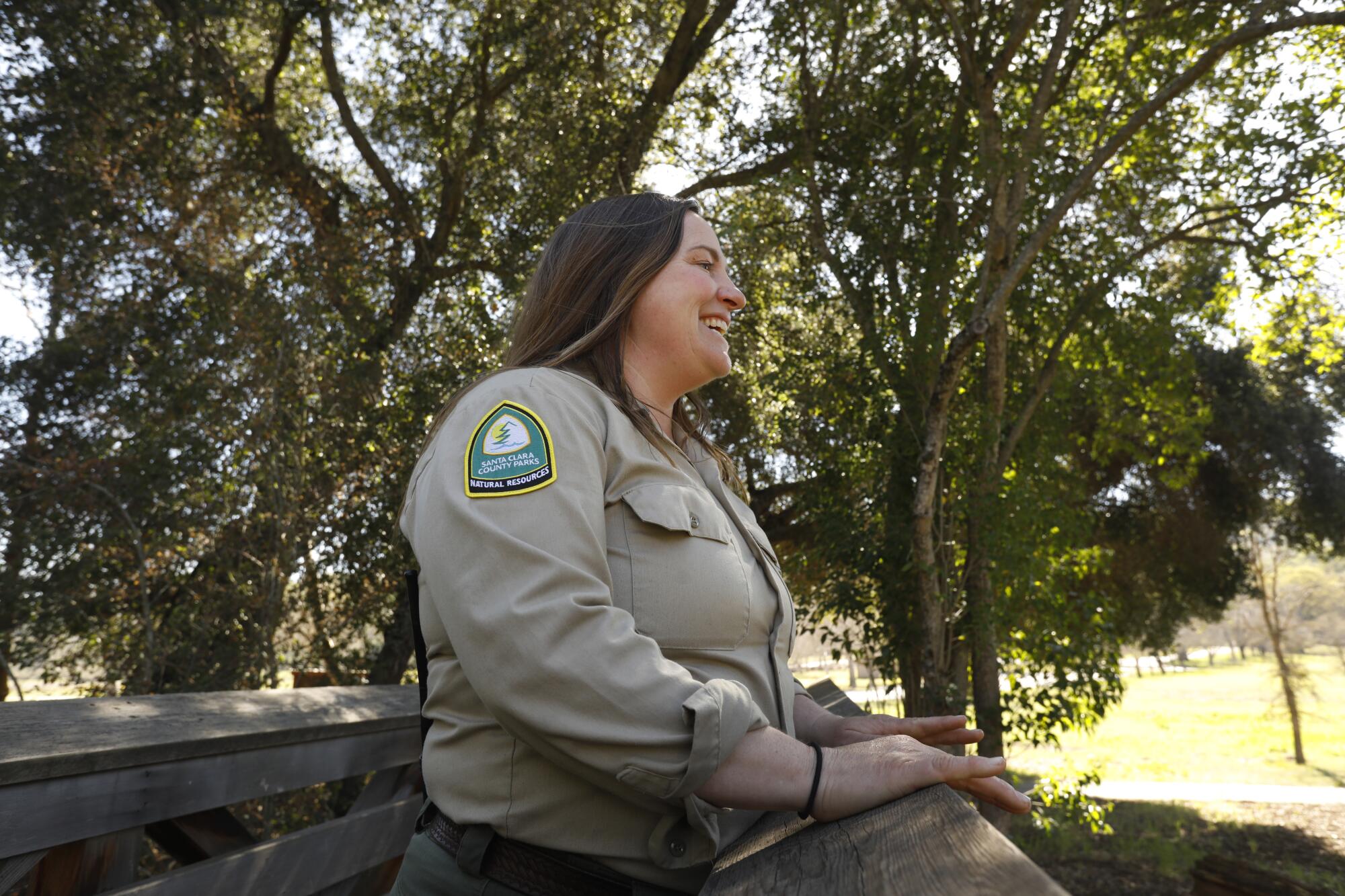
In 2006, food safety officials pointed to feral swine as causing an E. coli outbreak in spinach from Salinas Valley . And water regulators and engineers are wary about the pigs contaminating reservoirs and rivers, as well.
Nationwide, wild hogs also inflicted harm more directly — by injuring, and in rare instances, killing people.
In 2019, a pack of wild pigs killed a 59-year-old Texas healthcare worker , downing her as she attempted to walk the few steps from her car to her clients’ front door.
She was only the fifth person to die in a feral pig attack in the United States since 1825. Wildlife managers worry deadly confrontations are likely to grow in frequency as sharp-tusked feral pig populations swell.
Page is one of those managers. A wildlife biologist, Page oversees the county’s 52,000 acres of parkland, which stretch from the fertile “fruit basket” of the Guadalupe River Valley to the foothills of the Santa Cruz Mountains.
But because of a decision made by the Santa Clara County Board of Supervisors in 2010 — largely spurred by concerns over cost and animal welfare issues — Page is prohibited from killing pigs, unless they pose imminent harm or a threat to someone. Parkgoers report roughly two or three pig encounters each year, she said, and “things are only going to get worse.”

With her hands tied, Page is leaning on other land managers — including those from state parks, the Santa Clara Valley Open Space Authority and the Peninsula Open Space Trust — to share in a coordinated, continuous effort to slow the spread of swine.
“If you’re not doing it routinely, you’re just getting more animals in that area,” she said.
It is not known how many feral hogs exist in California, but the numbers are thought to be in the hundreds of thousands. Nationwide, there are an estimated 6 million , according to the U.S. Department of Agriculture.
In California, feral pigs have been identified in 56 of the state’s 58 counties. The only pig-free counties: San Francisco and Alpine. Ken Paglia, a spokesman for the state Department of Fish and Wildlife, said it was probably more accurate to say they are “common throughout California but less common at high elevations and the desert.”
Wild pigs are wearing out their welcome in San Diego County
June 5, 2011
“I wouldn’t want to make the claim that there has never been a wild pig in Alpine County, since someone is bound to contradict us,” he said.
They’re also spreading nationwide. Feral pigs are now in 42 states, including Hawaii, where they’ve been implicated in large-scale forest destruction, threatening endangered species and attacking a surfer while she was in the water.
Across the nation, federal officials estimate that pigs cause between $1.5 billion and $2.5 billion worth of damage to agriculture and property every year. Environmental organizations, researchers and public wildlife agencies have called them the “most destructive” invasive species in the country.
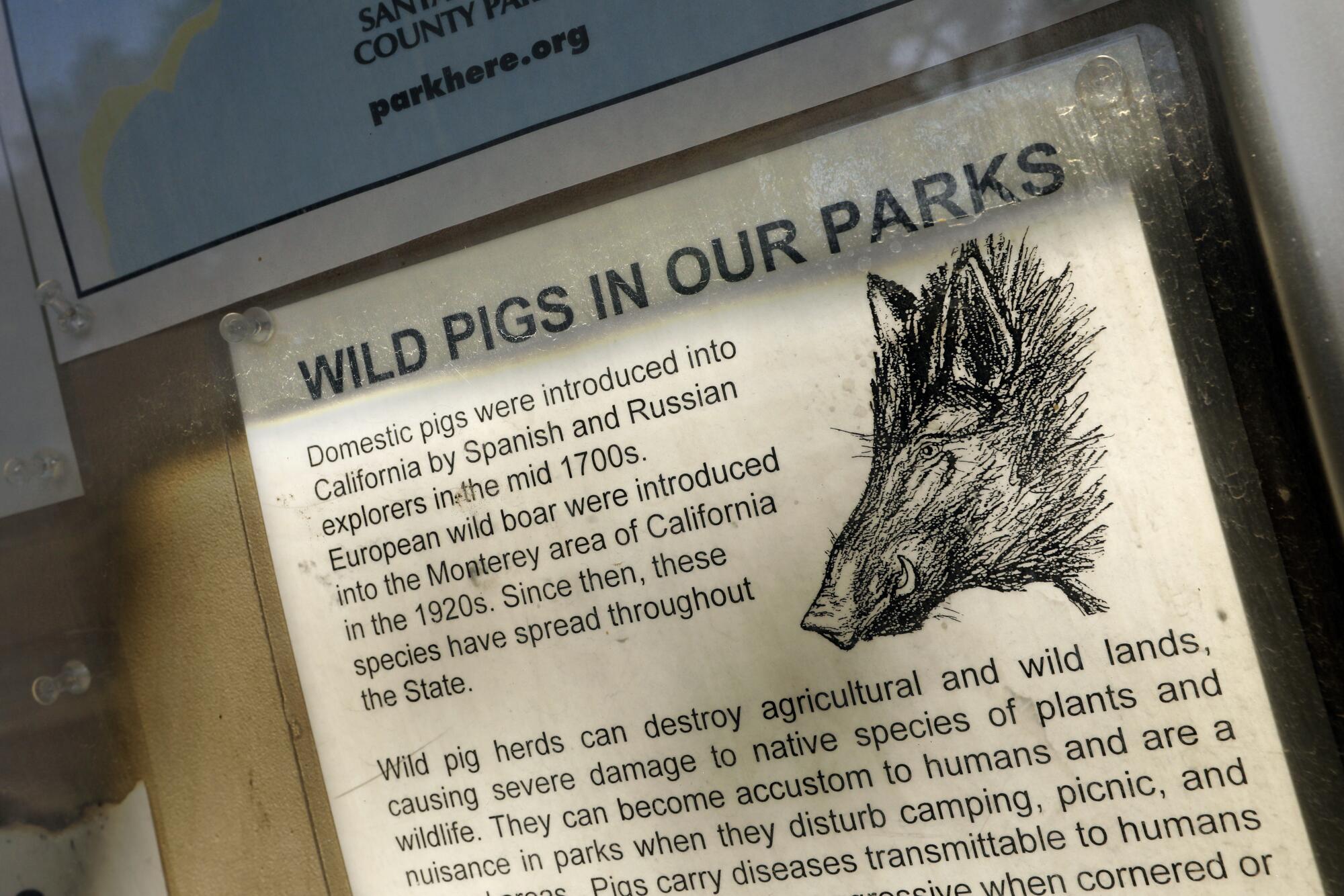
Not native to this continent, the feral pigs roaming North America today came into being only in the last 150 years — the byproduct of a love connection between free-ranging domesticated pigs and European wild boars, imported at different times and in different places. The variety roaming California’s golden hills is largely the blended descendant of pigs that Spanish missionaries imported in the 1700s and the wild boar a Carmel-by-the-Sea bon vivant, George Gordon Moore, introduced in the 1920s.
Moore — fabled to be the inspiration for F. Scott Fitzgerald’s Jay Gatsby character — purchased Rancho San Carlos, a 22,000-acre retreat in Monterey County, in the early 1920s. His aim was to start a hunting preserve he could share with his friends and business buddies, beginning with nine sows and three boars.
Those boars, however, soon became acquainted with the feral pigs descended from the stock brought by the missionaries.
This mingling spawned a remarkably prolific species — some biologists call them “super pigs” — wickedly smart, with an adaptable diet, enabling them to occupy a variety of ecosystems. They also breed like, well, rabbits: Wild pigs can produce up to four litters per year, ranging from a handful of piglets to 18, and females become sexually mature by 4 months of age.
By 1963, Moore was bragging to a friend about his pig proliferation. “The last time I saw William Randolph Hearst, Sr., he said ‘your pigs have reached San Simeon,’” Moore wrote in a letter .
Pig packs, also known as sounders, generally consist of at least one sow and a multigenerational assortment of her offspring.
“It’s hard to sit back and watch the destruction.”
— Dana Page, natural resource program coordinator for Santa Clara County Parks
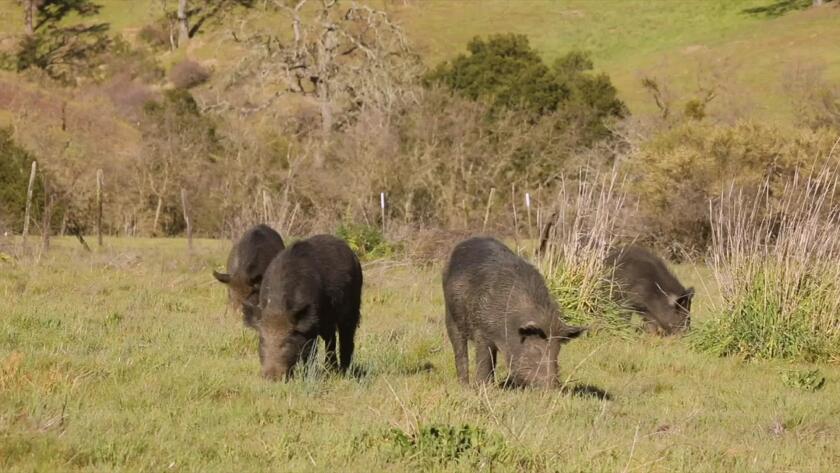
Wild pigs feed on roots and acorns in Joseph D. Grant County Park. (Carolyn Cole / Los Angeles Times)
On a recent daytime visit to Joseph D. Grant Park in San Jose, two sounders of roughly 15 to 20 pigs were seen digging up fields and rooting around the exterior of the former ranch’s white clapboard historical house. As a Times reporter approached the pack, a few piglets scampered away, while a pair of sows held their position, not breaking eye contact — making clear that retreat might be best.
Such packs have no natural predators in North America. Coyotes and even mountain lions are too small to kill adults, and they’ve shown little interest in pursuing piglets protected by 200-pound sows.
“You’re talking exponential growth,” said Bryan Flores, Monterey County Parks manager, referring to the local pig population. Flores has spent years trying to keep the destructive swine out of his parks near Moore’s former ranch — an upscale golf-centered housing development called the Santa Lucia Preserve.
But just as he thought he was making progress, the pigs learned how to carry off trash cans. They broke the iron chains holding the metal baskets to sturdy poles and spread garbage around the parks.
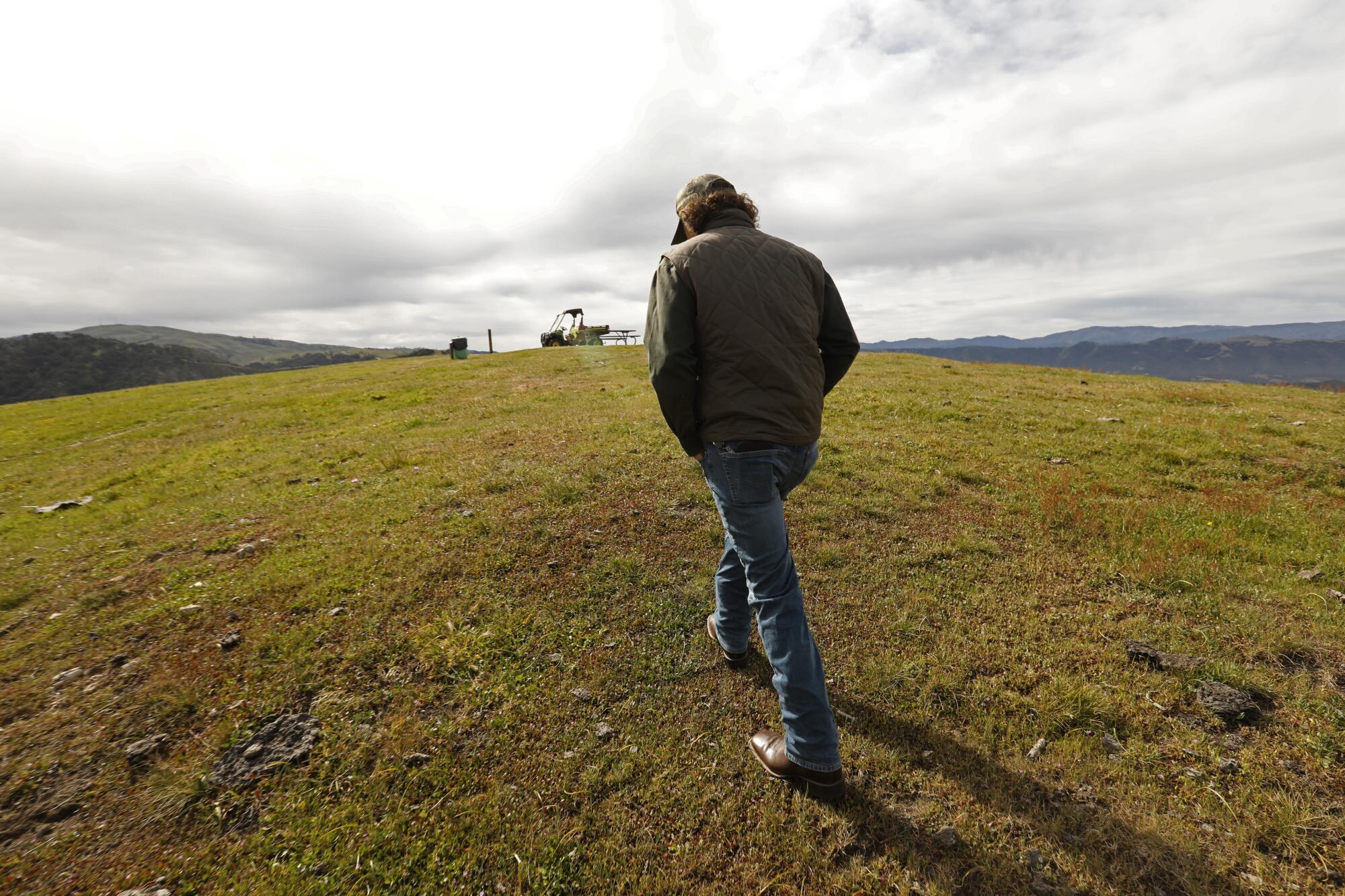
Unlike in Santa Clara, Monterey allows Flores to kill pigs. It’s a method of eradication that one state senator, Democrat Bill Dodd of Napa County, is hoping will become more widespread.
Dodd has introduced legislation that will relax regulations and reduce hunting fees for pigs, while stiffening laws regarding their release into the wild and shutting down contained pig hunting operations. It would also reclassify pigs as exotic game mammals, allowing night hunting and the ability to use artificial lights for tracking and spotting.
For some hunters, including Kelly Papenfus, a Santa Cruz postal worker who lives in San Jose, the changes won’t make much of a difference. Especially for those seeking out game on public land.
Feral pigs by the numbers
6 million - Estimated number nationwide. $1.5 billion - Estimated minimum damage they cause each year nationally. 412 — Attacks on people in the United States between 1825 and 2012. 20 - Infectious diseases they can spread to humans. 5 - People killed in attacks in the U.S. since 1825. Sources: U.S. Department of Agriculture; Savannah River Laboratory.
He’d like to see the state open up more areas for pig hunting — instead of just relaxing rules and fees.
“It’s already really cheap and you can get as many as you want,” Papenfus said, referring to the number of pig tags a hunter can get from the state. The problem, he said, is that there are so few public places where hunters can find and shoot pigs. And in the few places that do allow hunting, the pigs know not to hang around.
Papenfus has killed only one pig in the two-plus decades he’s been hunting. He killed that pig on private land, after being invited by the landowner.
Data from the Department of Fish and Wildlife bear out Papenfus’ experience: Between 2007 and 2021, the percentage of pigs harvested on public lands in California ranged between 4% and 7%. On private lands — where hunters often pay steep fees to bag a pig — the percentage ranged from 81% to 93%. The remainder included pigs hunted on military land, and unreported harvests.
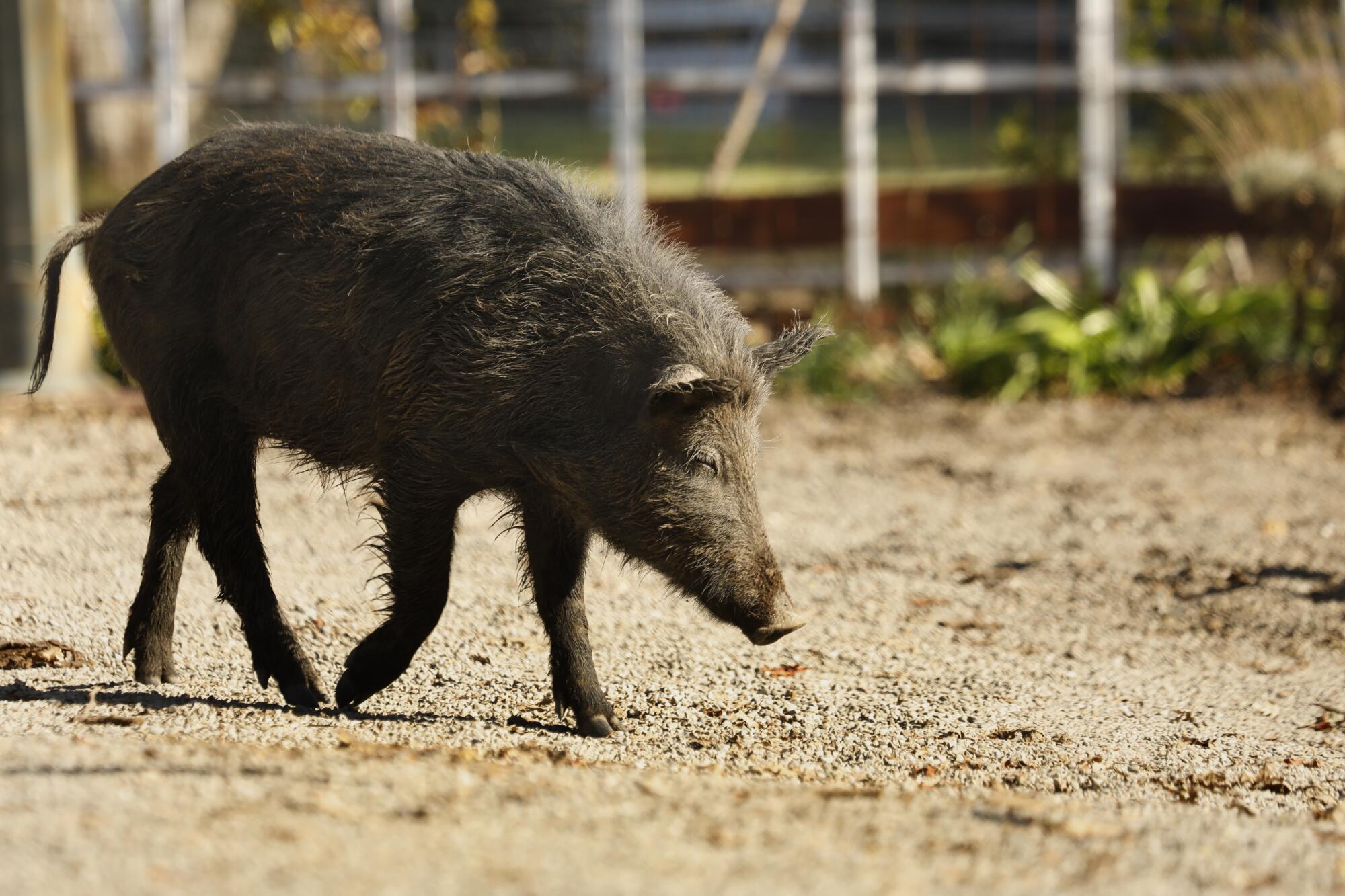
Even if California makes it easier and cheaper to hunt wild pigs, experience elsewhere suggests that increased hunting will not be an effective pig-eradication solution.
In Texas, which has more pigs than any state, hunting has been embraced. There are tournaments and festivals. And hunters can use all sorts of equipment, including night vision, helicopters and even hot air balloons.
But in other states where pigs are threatening to invade or reinvade, including Colorado, officials say they have no plans to issue pig hunt permits, in part because of evidence suggesting that hunting actually promotes the spread of swine.

World & Nation
Texas tackles wild hogs with high-stakes hunts
It’s open season year-round on Texas’ 3 million feral pigs, with hunters using thermal trackers, digital pig calls, helicopters and even hot-air balloons.
Nov. 27, 2020
The thinking goes that once hunters have a legal right to go after pigs, it builds an incentive for them to keep pig populations robust and move them to areas where their numbers are low. Genetic studies bear out this observation. In Florida, researchers were able to show that human-mediated transport had contributed to the genetic variation in pigs they were observing.
As one Texas A&M author noted in a publication about pigs: “The USDA estimates the feral swine population in the United States is spreading at a rate of 55 to 70 miles per hour … in the back of trucks and trailers.”
Increasingly desperate, land managers are testing out different techniques for controlling pigs. In Santa Clara County, Page said she has seen some success introducing predatory nematodes (a kind of worm-like creature) into the soil, reducing the grubs pigs like to eat.
But it’s hardly a panacea, said Dennis Orthmeyer, California state director of the USDA’s Animal and Plant Health Inspection Service’s Wildlife Services.
A showcase for compelling storytelling from the Los Angeles Times.
“Nematodes would be difficult on large areas such as the Joseph D. Grant Park on Mt. Hamilton,” said Orthmeyer. “Urban areas? Not sure if homeowners want nematodes in their yards.”
There are a few places in California, however, that have been able to stop the swine invasion.
In 2007, National Park Service employees eradicated feral pigs from Santa Cruz Island, killing 5,036 of them. These pigs, which had no wild boar influence, were descendants of pigs introduced by shepherds in the 1850s.
The other place is Pinnacles National Park — home of the endangered California condor. Straddling San Benito and Monterey counties, the park is carpeted with rolling hills of oak forest and grass, with a dramatic, mountainous interior of craggy, finger-like rocks jutting toward the blue sky. For visitors driving to the park south from Hollister, it feels like stepping back in time.
It’s why park managers, in the 1980s, decided to keep the pigs out by building a 33-mile-long fence around the park’s perimeter.
It took almost two decades to finish the first part of the fence, which was initially just 24 miles long, said Dan Ryan, the park’s director of wildlife biology and a hunter. And once it was finished, in 2003, it took two more years to trap, hunt and kill every last pig living inside. When the fence was extended in 2011, it took an additional 2½ years to kill all the pigs.
“They’re really smart. They see a trap once and escape. You’re not going to get another shot with them. They learn.”
— Dan Ryan, wildlife biologist at Pinnacles National Park
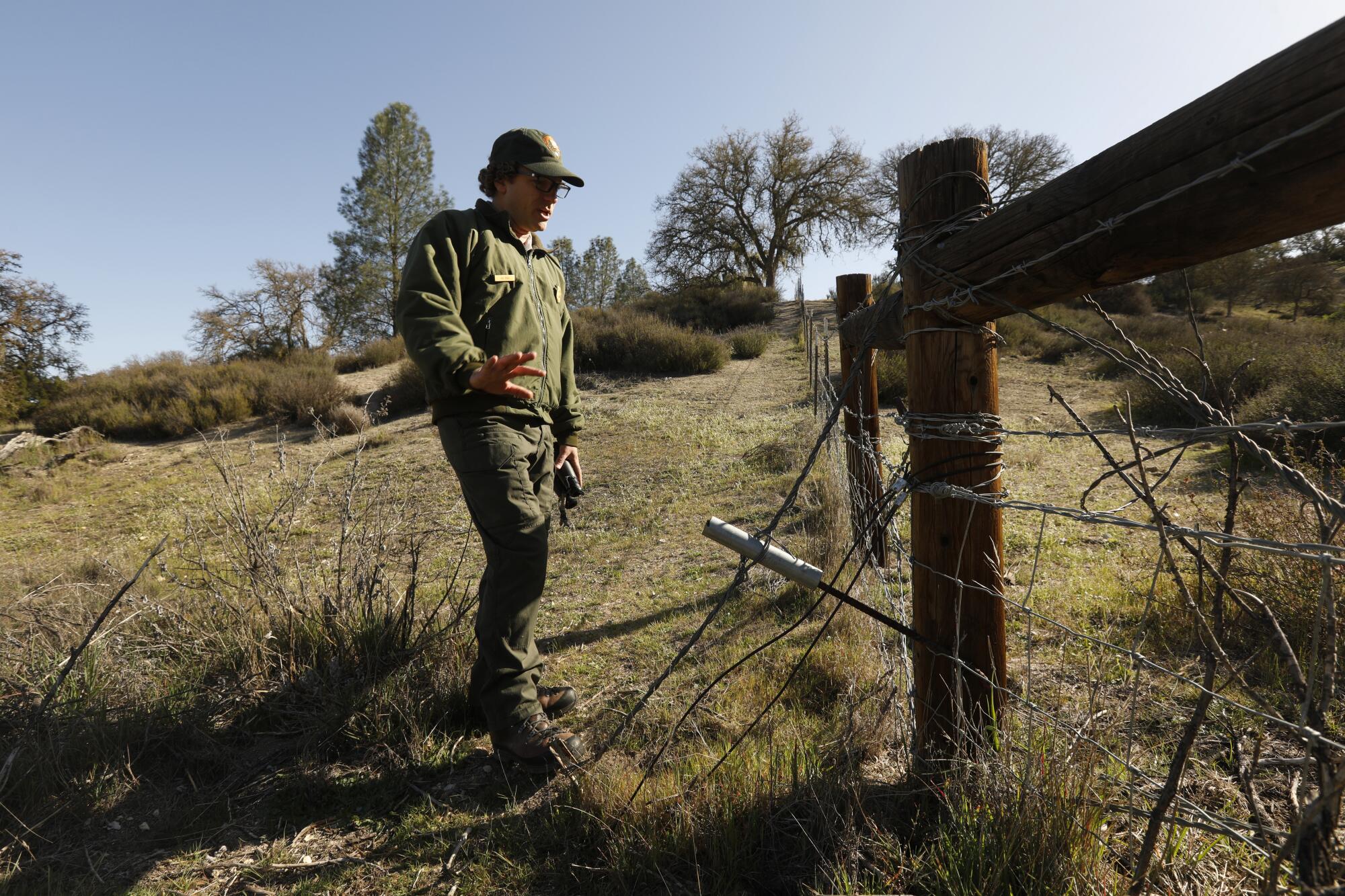
According to Ryan’s records, it took about 20 to 25 hours of hunting time to kill a pig in the first six months after the park erected the fence.
“After that it is basically zero return — we were down to one or two individuals, but nature gets them before we do,” he said.
“They’re really smart,” he said. “They see a trap once and escape. You’re not going to get another shot with them. They learn.”
In November, the pigs executed their first fence breach since the perimeter was completed.
According to Ryan, coyotes had dug under the structure, creating a passage large enough for a pig to squeeze through. When acorns from a nearby oak fell into the hole, the pigs followed and came up the other side.
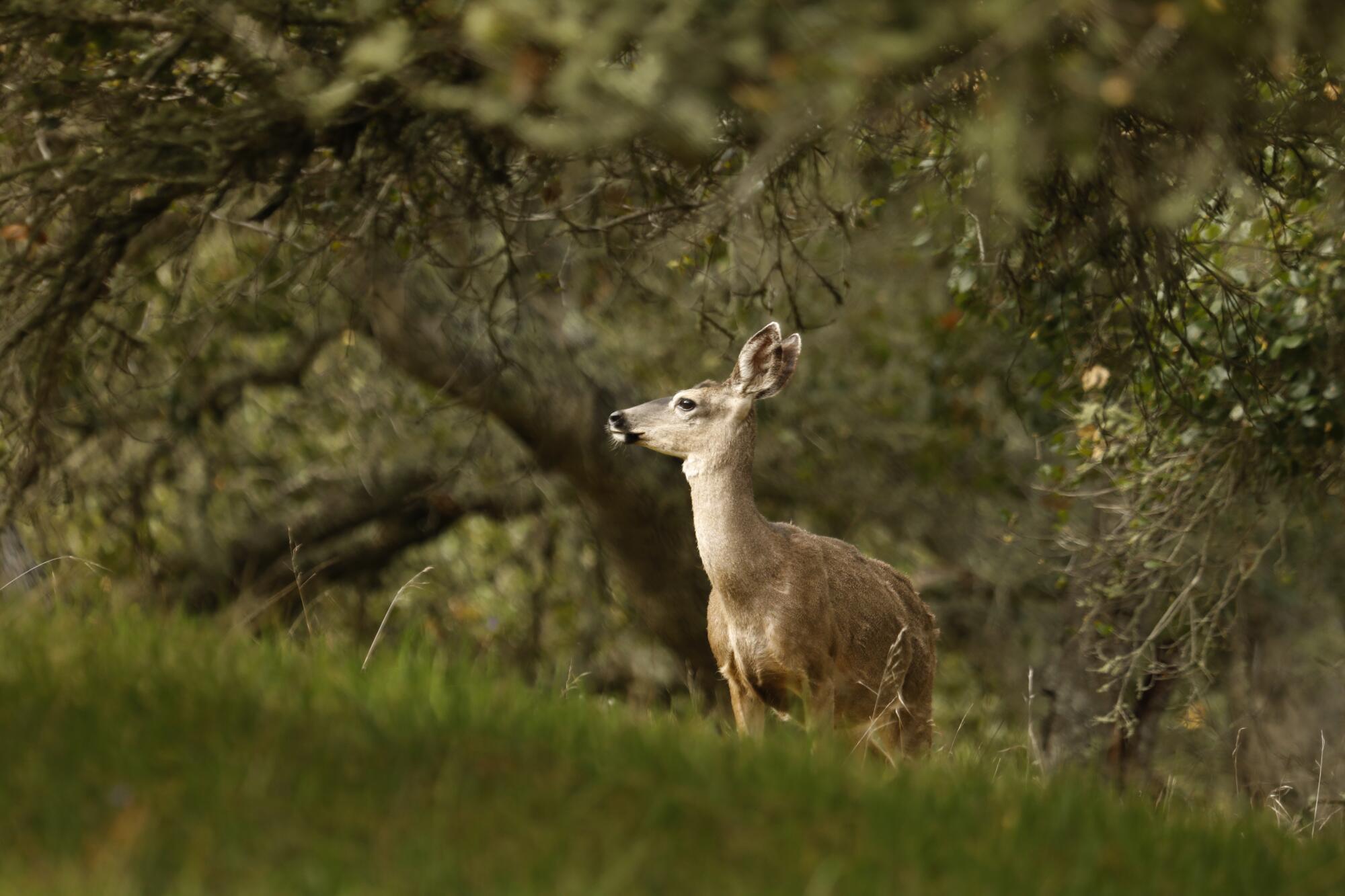
Fortunately, they were spotted soon after the breach, and one scurried back through the hole out of the park. The other, a male, remains at large.
On a recent weekday, signs of his destruction were apparent. Under the park’s majestic oaks and verdant grassy fields, there was uprooted soil and other telltale signs of hog foraging.
“It’s amazing how destructive just one pig can be,” said Ryan, pointing at a patch of disturbed soil, where native plants such as bush lupine and pitcher sage should be growing.
As he walked visitors along the fence — which is only about thigh-height, allowing creatures such as mountain lions, deer and coyotes to hop over — the foliage within the park’s perimeter was noticeably more healthy and diverse.
“It’s worked for us. ... We’ve created an island we can control,” he said. “Unfortunately, you can’t build a fence around the whole state.”
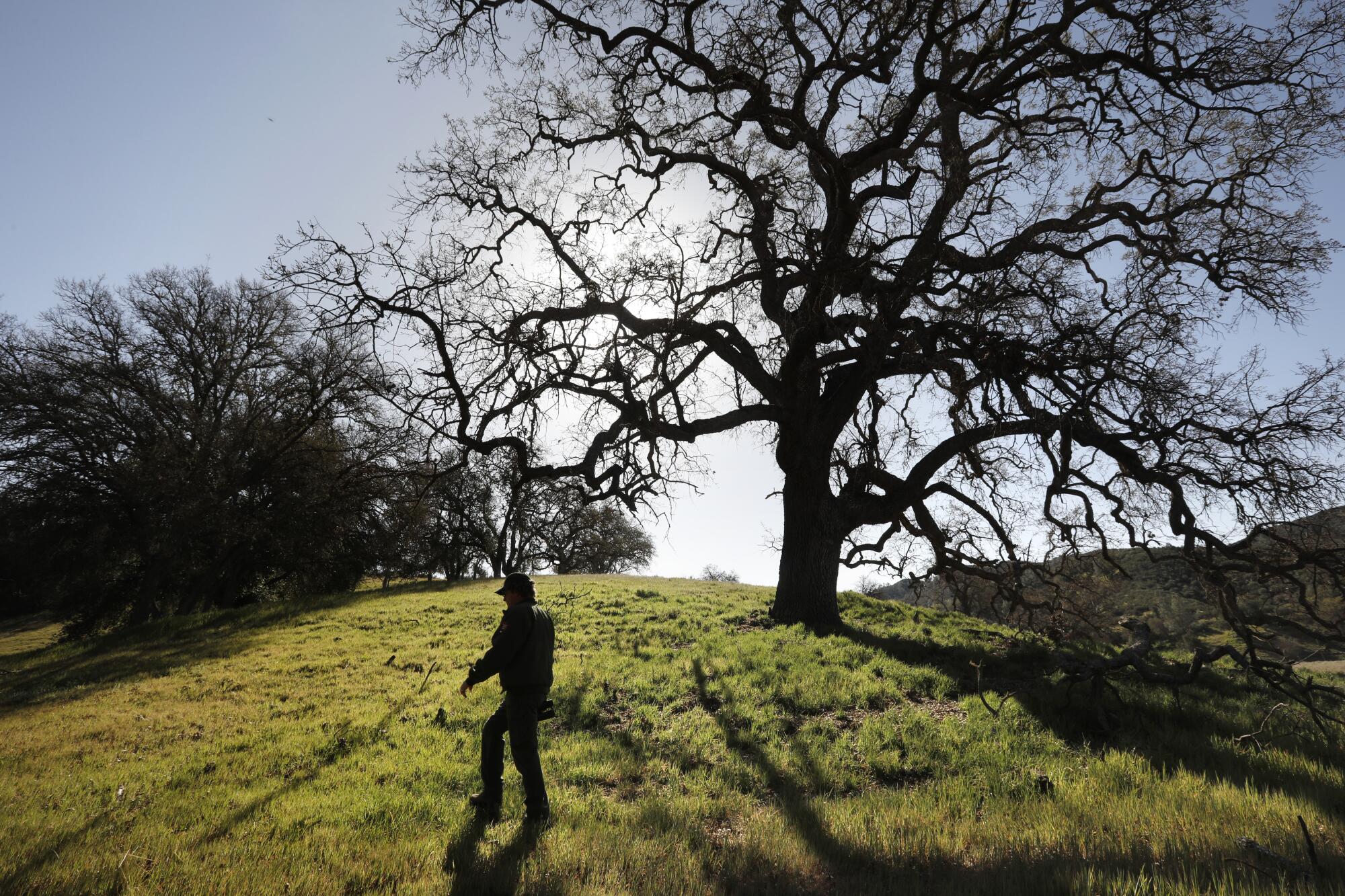
More to Read

L.A. supervisors oppose plan to eradicate Catalina deer by shooting them from helicopters
April 27, 2024

Letters to the Editor: Burrowing owls deserve better from California
April 1, 2024

Letters to the Editor: It’s 2024, and humans are still using rat poison to kill animals?
March 20, 2024
Start your day right
Sign up for Essential California for news, features and recommendations from the L.A. Times and beyond in your inbox six days a week.
You may occasionally receive promotional content from the Los Angeles Times.

Susanne Rust is an award-winning investigative reporter specializing in environmental issues. She is based in the Bay Area.

Carolyn Cole is a staff photographer for the Los Angeles Times. Her coverage of the civil crisis in Liberia won the 2004 Pulitzer Prize for feature photography. Cole has been named U.S. newspaper photographer of the year three times. Cole grew up in California and Virginia, before attending the University of Texas, where she earned a bachelor’s degree in journalism. She went on to earn a master of art’s degree from Ohio University.
More Column One Storytelling

How a migrant farmworker built generational wealth, penny by penny
April 26, 2024

After Hamas killed his mother, an Israeli man chooses peace over vengeance
April 24, 2024

Inspired by reality TV, Buddhist monks become matchmakers
April 22, 2024

Entertainment & Arts
This trans author toured red-state libraries. What she found might surprise you
April 17, 2024

This L.A. director made a film in Russia. The Kremlin wasn’t happy. Then came death threats
April 10, 2024

Lost and found: Should California return Cambodia’s stolen art?
April 3, 2024
Latest Articles:
Airlines to collect cabo tourist tax.
New tourist tax to be collected via airlines from December. Cruise passengers will
Casas de carton in Cabo
Cabo’s chronic housing shortage highlighted after Tropical Storm Lidia washes away over 7000
Gordo Banks Cabo Fishing Report 23 August 2017
Tuna Dominate Bite, More Dorado Move in
Jen Wren Cabo Fishing Report 13 August 2017
The 18th annual East Cape Bisbee has been and
- Medano Beach
- Cerritos Beach
- Lovers Beach
- Chileno Bay
- Santa Maria
- Palmilla Beach
- Whale Watching
- Humpback Whale
- Minke Whale
- Sperm Whale
- Brydes Whale
- Common Dolphins
- Bottlenose Dolphin
- Pacific White Sided Dolphin
- Killer Whale
- Pilot Whales
- Spotted Dolphin
- Eastern Spinner Dolphins
- Diamante - The Dunes Course
- Diamante El Cardonal
- Oasis Short Course at Diamante
- Quivira Golf Club
- Cabo San Lucas Country Club
- Cabo del Sol - Desert Course
- Cabo del Sol - Ocean Course
- Chileno Bay Course
- Cabo Real Golf Club
- Palmilla Golf Club
- Club Campestre San Jose
- Vidanta Golf Course
- Puerto Los Cabos Course
- The Story of Golf in Cabo
- Water Sports
- Restaurants
- Organic Markets
- Fishing Charters
- Species and Seasons
- Striped Marlin
- Blue Marlin
- Black Marlin
- Yellowfin Tuna
- Roosterfish
- Tournaments
- Black And Green
- Stars And Stripes
- Striped marlin
- The Other Billfish
- Golden Gate
- Dorado and Tuna
- Cabo Fishing Charters
- Marlin on a Fly Rod
- Shopping Malls
- Local Boutiques
- Traditional
- Turtle Release
- Pirate Ship
- Camel Safari
- Waverunners
- Traveling With Kids
- Cruise Ship Schedules
- San Jose Art Walk
- Lord Of The Wind
- Los Cabos Whaleman
- Cabo Cultural Walk
- Todos Santos Film Festival
- Bisbees East Cape Offshore
- Sea Turtle Release
- Cabo Freak Fest
- Sammy Hagar
- Bisbees Black And Blue
- Los Cabos Offshore
- Black And Green Tournament
- Cabo Comedy Festival
- Baja Film Festival
- Los Cabos Tuna Jackpot
- Pan American Congress of Internal Medicine
- Sabor A Cabo
- Los Cabos Open
- Cabo San Lucas
- San Jose Del Cabo
- Todos Santos
- The Estuary
- Los Barriles
- Picacho Mountain
- Cabo Hurricane History
- Stories of Odile
- Temperature in Cabo
- Wildlife in Los Cabos
- Flora and Plants
- Sustainability
- Cardón cactus
- San Jose Estuary
- Spring Break
- Bachelor and Bachelorette Parties
- Baja Culture
- Celebrities in Cabo
- Cabo On A Budget
- All Inclusive Resorts
- Weddings In Los Cabos
- Street Smart in Cabo
- Safety in the Sun in Cabo
- Emergency Medical Care
- Art Galleries
- Deals And Discounts
- Entertainment
- Event and Destination Management
- Kids & Family
- Medical & Emergency Services
- Other Services
- Photographers
- Professional Services
- Real Estate
- Spas, Health & Fitness
- Transportation
- Villa Rentals
- Wedding Planners
- Get Featured
Places To Visit
Earlier than all the chronicled Spanish adventures and history, the waters of the estuary helped support the Pericues natives of this land and their ancestors for what has been determined as thousands of years.
More on the Estuary
Cabo wins in latin american green awards.
Date: 8/25/2017
Cabo snags first place in Biodiversity and Fauna category at the Latin American Green Awards...
Cabo in line for Latin American Green Awards
Date: 8/15/2017
Cabo conservation project makes it to final of Latin American Green Awards...
Good news for bird watchers in Cabo
Date: 1/12/2017
New observation towers open for bird watchers in the Estero de San José...
The Estuary at San Jose del Cabo
The documented history of San Jose del Cabo goes as far back as Hernan Cortes and the Spanish explorers who passed through this area as early as 1535. A Jesuit mission wasn't established in the city until 1730. The town's past reflects with undisputed clarity of San Jose del Cabo's Estuary and Bird Sanctuary, being the largest body of fresh water in Southern Baja California. The estuary´s vast waters are fed by an underground river, known as Rio San Jose, which inherits its water flow from the Sierra Laguna Mountains, located and visible within the near distance.
For a very good part of nearly 300 hundred years, this now famous body of water has been the drinking and irrigation backbone of San Jose del Cabo. In its earliest reported stages, the estuary provided the rare source of drinking water for Spanish sailors and missionary Jesuits. British and Dutch pirates also found refuge amidst its waters as they eagerly hunted and preyed on Spanish merchant ships hauling gold, silver and valuable pearls to the Philippines from Acapulco.
For said historical and environmental reasons, the estuary today is protected by Mexican Law as a natural preserve; which is home to what some estimate at hundreds of tropical native and migratory birds as well as a select species of marine life, reptiles, amphibians, mammals (including the somewhat bothersome insects who reside there also).
The estuary is situated on approximately 125 acres which are located mere minutes and a short walking distance from the heart of Central San Jose del Cabo. As a nationally protected bird sanctuary, the estuary maintains a cultural center where visitors can find detailed information and maps; as well as having any questions answered by their friendly bilingual staff. Admission is free. For visitors who are serious bird watching aficionados, it's suggested they arrive during earlier daylight hours to better identify the exotic feathered birds of God's green earth.
And while most outdated websites pertaining to all things ''Cabo'' suggest there are anywhere from 150-250 different types of birds that migrate to the estuary/sanctuary, or actually live and can be found there permanently. The actual number is probably closer to 46 as defined by a bird watching site which has categorized them as follows.
Red-Tailed Hawks, Herons, Egrets, Pelicans, Gulls, Frigate birds, Turkey Vultures, Caracara, and Osprey are listed as the year round family of birds. Others of note are Grebes, Ibises, Spoonbills, Swan, Geese, Ducks, Kites, Yellow-Tail Hawks, Eagles and Allies. Rails, Gallinule, Plovers, Avocets, Sandpipers, Short-Billed Dowitchers, Pigeons, Doves, and Cuckoos round out their list along with Piculets, Woodpeckers, Tyrant Flycatchers, Wrens, Mockingbirds, Thrashers, Wood-warblers, Starlings, Mynas, Brushfinches, Seedeaters, Sparrows, American Blackbirds, and Orioles. And while there are different types of Sparrows, like Savanah and House.
All told, there are just under 50 types of birds that have been spotted and catalogued by die-hard seasoned bird watchers that have visited the estuary and sanctuary for just that very reason. To find, watch and marvel at the multitude of inhabitants that can be photographed and video recorded within the estuary's vast environmentally protected property.
Vacationers with week long stays at El Presidente Hotel find themselves right next door to the estuary grounds and early morning walks along its paved pathways are pretty common amongst health conscious guests. Others tend to enjoy the walk along the estuary into downtown San Jose del Cabo over the typical stroll into El Centro along city streets.
''The estuary was located right next to our hotel. It is nicely paved and a 10 minute walk into San Jose. Not too much extraordinary bird sightings, but it was calm and cooler than walking the main road into town'' said Sharon of Nanaimo, Canada after her visit of December, 2012. Transplant local J.J. Condos, formerly of San Diego, CA mentioned on tripadvisor that, ''I walk here every other day. The city has cleaned up the walking trail for better access. Anyone can walk all the way to the beach from downtown SJDC and see numerous birds and colorful Flora Fauna.''
Amazing also, is the simple fact the Rio San Jose runs a lengthy 30 miles from its mountainous origin to where the fresh river water blends in some areas of the estuary with the salty ocean waters floating in from the Sea of Cortez. This unique mixture creates the estuary's biodiversity which provides a healthy habitat for the variety of wild animal and bird life who seemingly enjoy their existence here. Feathered characters who rarely flinch at the sight of human gawkers.
Motorized vehicles are strictly prohibited around the estuary as are most horses, although once in awhile, a local farmer or resident can be seen riding his horse home through the protected oasis. A really cool activity offered by some tour companies is the kayak excursion at the estuary. The experience differs from the semi-similar kayak tours offered at Cabo San Lucas Bay's Medano Beach, in that there are no wave runner jet skis zooming by, no cruise ships obstructing the natural views of the Arch, and no water taxis congesting the place with traffic.
At the estuary kayak tour, people enjoy the tranquility of calm waters and a wonderful outing; sight seeing the colorful, quiet, habitat. The bilingual guided tour lasts 3-4 hours and costs $ 55 USD. The price includes drinks and snacks. It's one of the best ways to go bird watching and experience the full beauty of the estuary and its bird sanctuary.
Some tourists have posted online tripadvisor concerns and comments regarding the estuary's once pristine condition, impacted by modern pollution. To that end, a local environmental group, Angels of the Estuary, has been very active in maintaining the estuary's cleanliness and protecting the area from industrial pollution and also predatory, invasive species.
One lady tourist recently posted (December, 2012), that it wouldn't hurt if people walking along the estuary were to simply stop and pick up any litter the Estuary Angels may have missed attempting to garbage-patrol such a vast area. And while it's alleged the Puerto Los Cabos Marina development has taken a toll on the sanctity of the estuary, to what extent is unknown as citizens of San Jose del Cabo and municipal leaders long have recognized its inherent value to tourism.
Moving to earnestly safeguard it and themselves from government scrutiny or fines while some American and Canadian guests perceive its wildlife protected designation by Mexico, as just in name and not through action. The community has also done much to keep the beaches along the estuary safe for swimming.
And it seems, no matter how many efforts are made by the people of Mexico to keep the estuary as it has continued to be for over thousands of years, the Talco Palm trees that line its border, are mother nature’s way of helping the sanctuary withstand the occasional floods that are very uncommon in Los Cabos, but occur periodically over the years.
And while there are a litany of scientific reasons that the colorful wildlife thrive in San Jose del Cabo's famous estuary, its best to forego attempting to grasp the equations and Einstein-like theories and simply check the place out and soak in the smile-causing atmosphere of its existence.
Want to go hiking up beautifully natural mountains and peaks? Come to Los Cabos. Want to arrive with a team of sports fishing anglers and attempt to win millions of dollars? Enter Bisbee's world famous tournament. Want to party like a rock star and drink till 4 in the morning? Visit the strip in San Lucas.
Want to bird watch and enjoy the peace and serenity of the estuary and bird sanctuary? Come to San Jose del Cabo. It's free!!
Latest Cabo Fishing Reports
Tuna Dominate Bite, More Dorado Move in... More
The 18th annual East Cape Bisbee has been and... More
Social Media
Give us your feedback, further information.
Promotion Packages
Privacy Policy
Terms & Conditions
About iTravel
Get In Touch
©2014 iTravel Connected, San Jose Del Cabo, Baja California Sur, Mexico. Email: [email protected] . Website presented on Big Red .
Contact Close
Your email was successfully sent! We'll get back to you shortly.
A safari experience like no other
Spend the Night
Welcome to Safari West
Go on safari.
Unleash Your Wildheart
Start the Adventure Group visits click here
Safari Glamping
Arrive as a Guest - Return as a Wild Friend
Dining in the Wild
Sonoma's South African Braai Experience
Mother’s Day
Wild About Mom Brunch!
Private Adventures
Come face-to-face with the wildest animals around on your very own Private Safari Adventure!
The world’s fastest runner can reach speeds of 60 – 70 miles per hour!
Read More Show another animal
Safari West Happenings
See all Happenings
Safari West Presents! Small Wild Cat Conservation Foundation
Conservation Dinner Series: Jim Sanderson of Small Wild Cat Conservation Foundation joins us in the elephant room after dinner to give a talk about small cats.
Explore Share
Safari West Presents! Heirs to Our Ocean
Conservation Dinner Series: April Peebler of Heirs to Our Ocean joins us in the elephant room after dinner to give a talk about our oceans.
Inspiring Wildlife Posts
See all News
You OTTO know it's my birthday!
Otto was born to proud parents, Eesha and Ongava on April 2nd, 2023. Named in honor of Peter Lang's father,...
The Incredible Story of the Laysan Duck
People usually come to Safari West to see the showstoppers—giraffes, rhinos, cheetahs, or zebras. While these are all incredible animals,...
Think Your Family is Bananas? So is Ours
The Holidays are here and it’s no secret that getting your troop together can be as stressful as fun. But...

COMMENTS
In 2016, travel and tourism contributed $7.6 trillion, or 10.2%, to total GDP, and the industry provided jobs to one in 10 people, according to the World Travel & Tourism Council. While nature-based tourism, which includes wildlife tourism, has been expanding rapidly in the last decade or so due to increased demand and opportunities, wildlife ...
Crop-raiding and livestock loss caused by wildlife are the problems of most concern to local residents [25,34]. However, tourism benefits are often allocated to improving social infrastructures, ... Wildlife tourism is based on human-wildlife interactions, and their impact on the adaptation and evolution of wildlife should be fully considered.
Wildlife tourism and COVID-19 in context. At the time of writing the COVID 19 pandemic has resulted in about 4.18 million confirmed infections and 283,877 deaths, the tourism industry is in shutdown, globally there is an estimated 75 million job losses in the general tourism and hospitality industry and the world is heading for economic recession (World Travel and Tourism Council, 2020 ...
tourism at many wildlife tourism destinations thus presents as a problem and the longer travel restrictions are in place the more risk there is of habitat loss and poaching at many, and currently iconic wildlife, tourism destinations. (Newsome, 2015; Brown, 2017; Schulze et al., 2018; Maron, 2020).
A four-year-old human child with spikes pressing into his flesh would express pain by screaming. A four-year-old elephant just stands there in the rain, her leg jerking in the air. Of all the ...
A significant and expanding interest in wildlife tourism was also evident in Sri Lankan protected areas (PAs) before the COVID-19 pandemic and popular PA's such as some national parks (NPs) suffered from on-going over-tourism problems leading to a range of negative impacts (Newsome, 2013; Prakash, Perera, Newsome, Kusuminda, & Walker, 2019).
Suffering unseen: The dark truth behind wildlife tourism. Captive wild animal encounters are hugely popular, thanks partly to social media. But our investigation shows many creatures lead dismal ...
Scan the space. Observe whether animals have an appropriate environment, including shelter, ample space, a comfortable resting area, and a secluded place away from crowds. Beware of buzzwords ...
Human-wildlife conflict is a barrier to achieving sustainable biodiversity conservation and community development in protected areas. Tourism is often regarded as a tool to mitigate such conflict. However, existing studies have mainly adopted a socio-economic perspective to examine the benefits of tourism for communities, neglecting the ecological effects of tourism.
Wildlife tourism provides essential income to support communities and conservation in many places in the Global South, but mismanaged tourism is also a major cause of nature loss. The tourism sector must reform to protect the unique places people travel to see, and every IUCN Member has a part to play in this transformation - write Cam Do and Olivia Schlaepfer of the Yale Tropical Resources ...
"There are still widespread problems in many parts of wildlife tourism." Wildlife tourism accounts for 20 to 40 percent of the total $1 trillion annual tourism industry and involves as many as ...
Wildlife tourism - which involves viewing wildlife such as primates or birds in conservation areas, ... Part of the problem lies with governments, as many have marketed tourism as a way to fund ...
Wildlife tourism is a huge global market, the revenue from which can promote local livelihoods and tourist education, enact conservation, and improve animal welfare. Such benefits arise if wildlife tourist attractions (WTAs) prioritise ethical deliverables above financial profit, but recent work has shown that the majority of WTAs have ...
The collapse of eco-tourism during the pandemic has spelled disaster for conservation initiatives and livelihoods in Kenya and beyond. Cuts to budgets and staff, reduced salaries and stalled ...
Abstract and Figures. Wildlife tourism (WT) is an emerging sector of tourism, majorly meant to view and/or encounter wildlife in the wild, captive, and semi-captive settings. Because of the new ...
Wildlife tourism is a major source of foreign revenue for the country. In 2021, the tourism sector generated US$2.6 billion, or 5.7% of gross domestic product (GDP).
Wildlife tourism is an element of many nations' travel industry centered around observation and interaction with local animal and plant life in their natural habitats. ... Evidence of this phenomenon has been recorded in birds, reptiles and mammals. Problems have occurred in breeding colonies of pelicans . Increased mortality, vanity hunts, ...
1. Zoos & Aquariums. Many animals in tourism are living in Zoos and Aquariums. There is some argument that they are good for conservation purposes, helping to preserve threatened wildlife species. However, in reality, it's hard to decide if the benefits outweigh the negatives.
As researchers noted, increased demand, a focus on profits, and travelers' lack of awareness all contribute to the growing animal welfare problem in the tourism industry. The Right Way to do Wildlife Tourism: No More Elephant Rides or Tiger Petting. Consider this statistic: Wildlife tourism accounts for between 20-40% of global tourism.
Data from the Department of Fish and Wildlife bear out Papenfus' experience: Between 2007 and 2021, the percentage of pigs harvested on public lands in California ranged between 4% and 7%. On ...
The department manages over 1,100,000 acres of fish and wildlife habitat and these properties provide many opportunities for the public to hunt, fish, watch wildlife and learn about nature. Come visit and explore a wildlife area or ecological reserve near you!
And while there are a litany of scientific reasons that the colorful wildlife thrive in San Jose del Cabo's famous estuary, its best to forego attempting to grasp the equations and Einstein-like theories and simply check the place out and soak in the smile-causing atmosphere of its existence.
Safari West Presents! Heirs to Our Ocean. Saturday April 27, 2024 | 8:00pm - 8:30pm. Conservation Dinner Series: April Peebler of Heirs to Our Oceanjoins us in the elephant room after dinner to give a talk about our oceans. Explore Share.